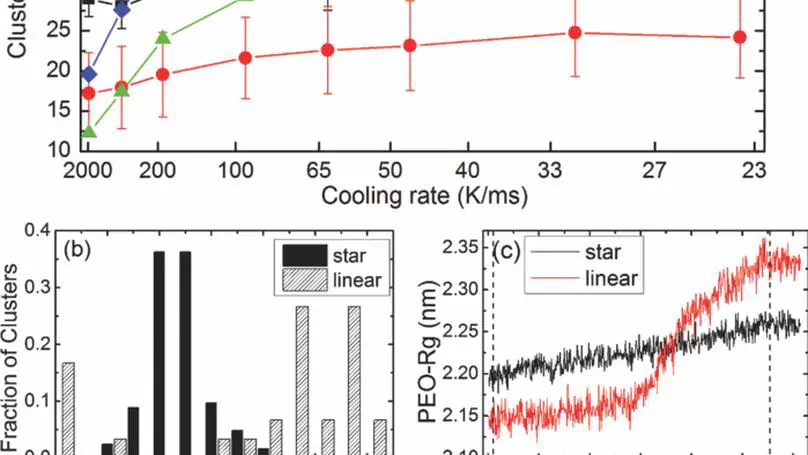发表论文
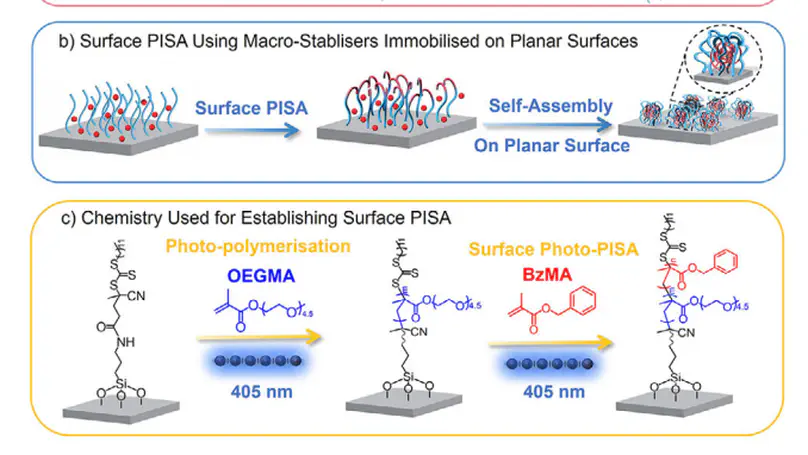
Polymerisation-induced self-assembly (PISA) has emerged as a highly efficient method for synthesising polymeric nanoparticles with diverse and well-defined morphologies for a range of applications. While extensive research has focused on solution-based PISA mediated by conformationally free macro-stabilisers, the process of PISA on planar surfaces using surface-tethered macro-stabilisers with constrained mobility, namely surface PISA, remains largely unexplored. Investigating this process is significant to further advance PISA technology and expand its applications. In this work, we explore surface PISA through both experimental and computational approaches, revealing key differences from conventional solution-based PISA. We also demonstrate that surface PISA offers an innovative approach for controlling surface topography and modulating material-bio interactions. Specifically, we showcase its versatile application in creating slippery liquid-infused porous surfaces (SLIPS) and encapsulating antibiotics, endowing material surfaces with enhanced antifouling and antimicrobial properties. We believe this work is a significant step forward for PISA technology and will create new opportunities for its broader applications.
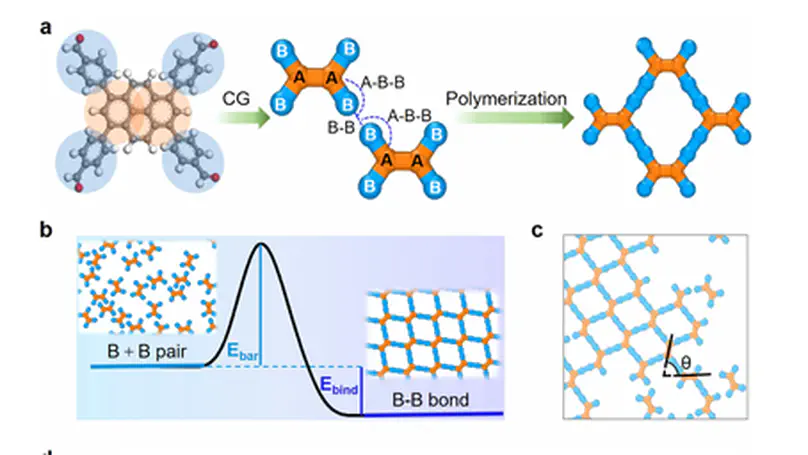
The rapid synthesis of large-sized single-crystalline two-dimensional (2D) covalent organic frameworks (COFs) remains a formidable challenge with current synthetic techniques. A thorough microscopic comprehension of the dynamic processes that govern crystal growth from the perspective of defect formation/repair is imperative. Here, molecular dynamics simulations combined with a dynamic bond model are employed to track the real-time defect evolution in the growth of 2D COFs on surfaces. Our results indicate that defects at grain boundaries, caused by the random orientation of monomers, serve as critical barriers to crystal growth. During the growth process, defects evolve through multiple pathways, involving dynamic reorganization and selfrepair. We demonstrate that the interplay between activation energy and binding energy influences defect repair and, thereby, crystal growth and product morphology. Enhancing both forward and reverse reaction rates, achieved by reducing activation and binding energies within a narrow knife-blade parameter space, facilitates rapid defect repair and promotes single-crystal growth. These findings provide mechanistic insights into defect dynamics and inform the rational design of the reaction conditions for the synthesis of high-quality 2D COFs.
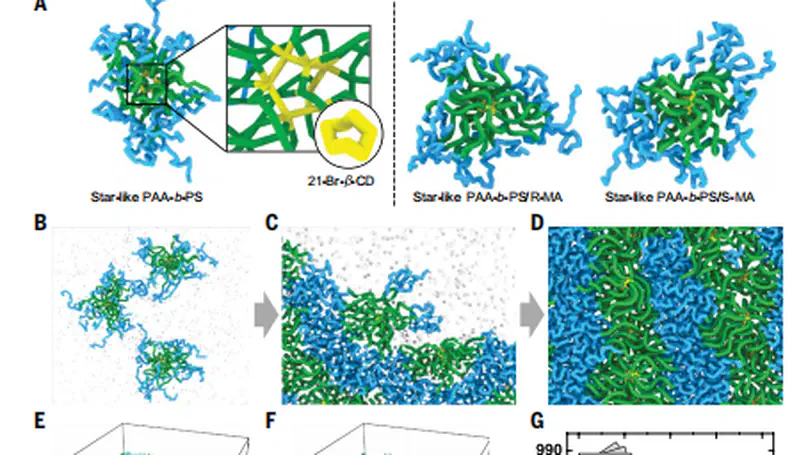
Supramolecular assemblies hold great promise for advanced chiral materials because of their structural diversity and dynamic features, but their low chiroptical activity limits practical applications. We report hierarchical supramolecular assemblies with giant chiroptical activity and mechanical attributes achieved through coassembly of achiral amphiphilic unimolecular micelles and chiral additives. Chiral fibrillar assemblies emerge from the nanostructured environment imposed by the micelles, driven by progressive chirality transfer through multiple hydrogen bonds between components. Integrating multifarious achiral luminescent molecules and nanocrystals into these assemblies leads to full-color circularly polarized luminescence–active materials with dissymmetry factors of ~10 −1 . A concentration-dependent chirality inversion is accessed through tailoring the coassembly kinetics. This strategy enables efficient red CPL, crucial for quantum and optical technologies. , Editor’s summary Hierarchical supramolecular materials assembled from achiral amphiphilic polymer micelles and chiral additives have high chiroptical activity across the visible spectrum. Kim et al . synthesized nanoscopic micelles with inner hydrophilic and outer hydrophobic blocks that hydrogen bonded to R- (or S-) mandelic acid to create nanobelts and ultimately chiral microfibers. Incorporating achiral fluorescent dyes and nanocrystals into these assemblies could produce circularly polarized emission with dissymmetry factors of about 0.1. —Phil Szuromi , INTRODUCTION Chirality is a fundamental characteristic of nature and living systems. Manifesting at multiple scales, both molecular and supramolecular chirality play essential roles across diverse disciplines, including physics, chemistry, biology, materials science, and nanotechnology. Polymer-based chiral supramolecular assemblies incorporating luminescent components have emerged as a promising class of circularly polarized luminescence (CPL)–active materials. These materials hold promise for applications in information encryption, imaging, display technologies, bioprobes, and spintronic and optoelectronic devices, while benefiting from the intrinsic advantages of polymers, including scalability, flexibility, and chemical diversity. However, conventional systems based on amphiphilic linear block copolymers (BCPs) struggle to achieve stable chiral structures with strong chiroptical activity, high quantum yield, and large luminescence dissymmetry factor ( g lum ) because of the dynamic instability of linear polymer assemblies, inefficient chirality transfer, and inadequate emitter protection. RATIONALE Amphiphilic star–like BCPs differ fundamentally from their linear analogs by forming unimolecular micelles with superior structural integrity. We hypothesized that coassembling achiral star–like BCPs with small chiral molecules could overcome the limitations of linear polymeric systems. Their structural stability and amphiphilicity make them compatible with a broad range of luminescent emitters through multiple noncovalent interactions, potentially enabling a general and efficient route to CPL generation across the visible spectrum. To explore this, we synthesized 21-arm star-like poly(acrylic acid)- block -polystyrene (PAA- b -PS) and coassembled it with enantiomeric mandelic acid [(R/S)-MA] through hydrogen bonding between MA and the hydrophilic PAA block, inducing chiral supramolecular structures. RESULTS Chiral supramolecular structures were constructed by thermal annealing–driven chiral coassembly of star-like PAA- b -PS and (R/S)-MA in dimethylformamide. The resulting assemblies exhibited microscale helical fibrillar morphology, enhanced mechanical attributes, and strong, stable circular dichroism signals spanning 200 to 500 nm with a dissymmetry factor of 0.039, indicating efficient chirality transfer from MA to the supramolecular assemblies. Time-dependent morphological and chiroptical characterization, together with coarse-grained molecular dynamics simulations, revealed a hierarchical organization. Initially, molecular chirality of MA was transferred to the PAA chains, inducing conformational chirality. Upon prolonged annealing, the complexes packed into kinetically trapped, belt-like secondary nanostructures, which subsequently reorganized into thermodynamically favored tertiary fibrillar microstructures with defined handedness. By leveraging the structural robustness and amphiphilicity of star-like BCPs, we demonstrated the versatility of coassemblies in generating CPL-active materials that emit strong CPL across the visible spectrum. We achieved high g lum (up to 0.11 in the blue region) by incorporating diverse achiral emitters, including hydrophilic and hydrophobic dyes, aggregation-caused quenching and aggregation-induced emission luminogens, and PS-ligated perovskite nanocrystals synthesized using star-like BCPs as nanoreactors. Through noncovalent interactions including hydrogen bonding, π–π stacking, and hydrophobic interactions, efficient chirality transfer to the emitters was achieved. These coassemblies exhibited enhanced quantum yields and prolonged emission lifetimes, which were attributed to reduced thermal degradation and aggregation within the chiral supramolecular framework. Furthermore, we demonstrated invertible chiroptical properties by modulating the assembly concentration and applying rapid solvent annealing using dimethylformamide-toluene mixtures. At high concentrations, densely packed rodlike structures were formed, exhibiting stronger chiroptical signals with opposite handedness. Coarse-grained molecular dynamics simulations and temperature-cycling experiments revealed that these inverted chiroptical states correspond to kinetically trapped, nonequilibrium structures. CONCLUSION We report the unique advantages of amphiphilic star-like BCPs in producing hierarchical chiral supramolecular assemblies that exhibit multiscale and tunable chirality, long-term stability, and enhanced mechanical properties. This strategy offers a universal and modular platform for developing full-color CPL-active materials with marked chiroptical performance. In particular, it enables strong red CPL, a longstanding challenge in many systems, highlighting its potential for emerging quantum technologies. A universal strategy for creating full-color, highly efficient CPL-active materials through hierarchical chiral supramolecular assemblies. Starting from achiral star–like PAA- b -PS block copolymers, hierarchical organization is driven by complexation with chiral R/S-MA, forming nanobelts and subsequently helical microfibers through chiral supramolecular assemblies. Incorporation of diverse emitters ranging from hydrophilic and hydrophobic dyes to aggregation-caused quenching and aggregation-induced emission luminogens, as well as inorganic perovskite nanocrystals, into the chiral assemblies enables stable, full-color, tunable CPLs with high efficiency.
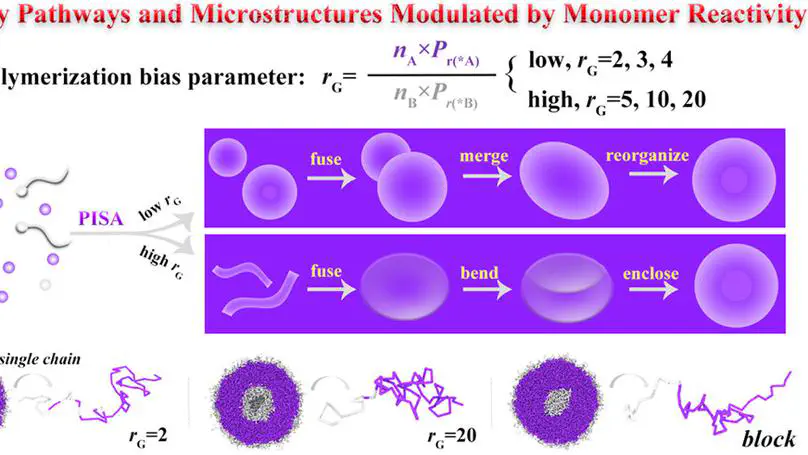
Polymerization-induced self-assembly (PISA) offers a versatile platform for designing polymeric nanoparticles. Amphiphilic gradient copolymers, characterized by a gradual transition from hydrophilic to hydrophobic segments, exhibit reduced interfacial tension and enhanced stimulus responsiveness. However, the interplay between polymerization and self-assembly in PISA, influenced by the monomer feed ratio and reactivity, remains ambiguous. Herein, we employ coarse-grained simulations to investigate the role of the effective polymerization bias between monomers. Our results reveal that the relative monomer reactivity plays a key role in determining both the copolymer sequence and the vesicle formation pathway. At low reactivity differences, comparable monomer reactivities facilitate a cooperative polymerization-assembly process that produces numerous small spherical assemblies, which subsequently merge and reorganize into vesicles. In contrast, high reactivity asymmetry favors the formation of anisotropic worm-like micelles that progressively fuse, bend, and enclose into vesicular structures. Microstructural analysis further shows that gradient copolymer vesicles possess internal cavities larger than those formed from block copolymers. These insights provide guidance for tailoring vesicle formation pathways and fine-tuning microstructures for potential applications in drug delivery and materials science.
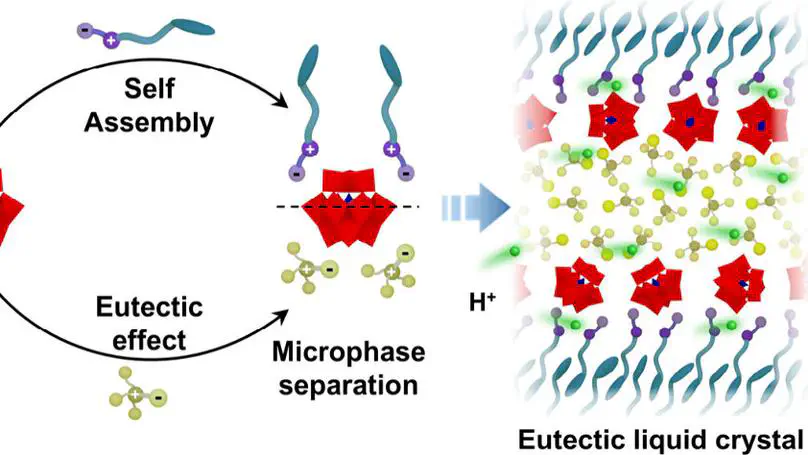
Electrolyte materials with responsive conductive properties are highly desired in electronic and sensing technologies, which rely on the construction of ion transport channels that combine orderliness with dynamic adjustability. However, achieving such structures remains a significant challenge. In this study, we fabricate a lamellar liquid crystal electrolyte enabling deformation-responsive proton conduction. Polyoxometalate nanoclusters (POMs) and zwitterionic molecules are utilized to construct the electrolytes through a supramolecular eutectic strategy. By balancing electrostatic and hydrogen-bonding interactions, zwitterionic molecules direct lamellar POM assembly while softening the system via hydrogen-bond-induced eutectic effect. This approach ultimately results in a POM-based room-temperature liquid crystal with a unique lamellar superlattice structure. Notably, the integration of proton-conductive POMs with dynamically responsive liquid crystal channels enables a highly sensitive change in proton conductivity under deformation. These findings expand the potential applications of liquid crystal systems and provide valuable insights for the development of responsive electrolyte materials.
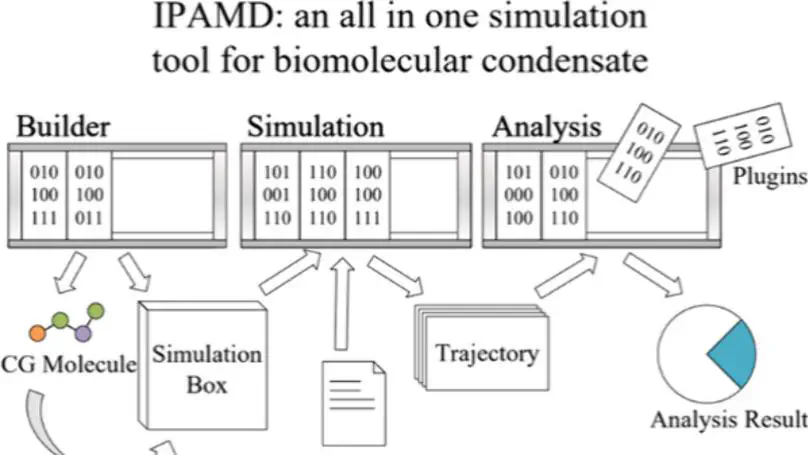
The study of intrinsically disordered proteins (IDPs) and their role in biomolecular condensate formation has become a critical area of research, offering insights into fundamental biological processes and therapeutic development. Here, we present IPAMD (Intrinsically disordered Protein Aggregation Molecular Dynamics), a plugin-based software designed to simulate the formation dynamics of biomolecular condensates of IDPs. IPAMD provides a modular, efficient, and customizable simulation platform specifically designed for biomolecular condensate studies. It incorporates advanced force fields, such as HPS-based and Mpipi models, and employs optimization techniques for large-scale simulations. The software features a user-friendly interface and supports batch processing, making it accessible to researchers with varying computational expertise. Benchmarking and case studies demonstrate the ability of IPAMD to accurately simulate and analyze condensate structures and properties.
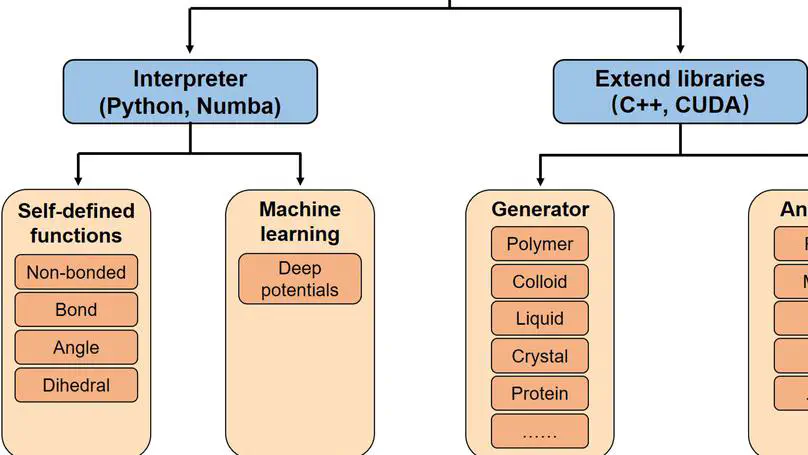
PyGAMD (Python GPU-accelerated molecular dynamics software) is a molecular simulation platform developed from scratch. It is designed for soft matter, especially for polymer by integrating coarse-grained/multi-scale models, methods, and force fields. It essentially includes an interpreter of molecular dynamics (MD) which supports secondary programming so that users can write their own functions by themselves, such as analytical potential forms for nonbonded, bond, angle, and dihedral interactions in an easy way, greatly extending the flexibility of MD simulations. The interpreter is written by pure Python language, making it easy to be modified and further developed. Some built-in libraries written by other languages that have been compiled for Python are added into PyGAMD to extend it’s features, including configuration initialization, property analysis, etc. Machine learning force fields that are trained by DeePMD-kit are supported by PyGAMD for conveniently implementing multi-scale modeling and simulations. By designing an advanced framework of software, graphics processing unit-acceleration achieved by the Numba library of Python and compute unified device architecture reaches a high computing efficiency.
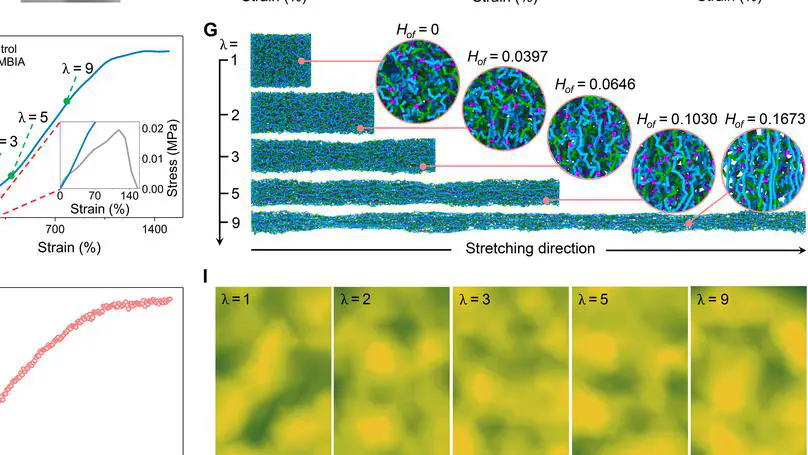
Artificial skin is essential for bionic robotics, facilitating human skin–like functions such as sensation, communication, and protection. However, replicating a skin-matched all-in-one material with excellent mechanical properties, self-healing, adhesion, and multimodal sensing remains a challenge. Herein, we developed a multifunctional hydrogel by establishing a consolidated organic/metal bismuth ion architecture (COMBIA). Benefiting from hierarchical reversible noncovalent interactions, the COMBIA hydrogel exhibits an optimal combination of mechanical and functional properties, particularly its integrated mechanical properties, including unprecedented stretchability, fracture toughness, and resilience. Furthermore, these hydrogels demonstrate superior conductivity, optical transparency, freezing tolerance, adhesion capability, and spontaneous mechanical and electrical self-healing. These unified functions render our hydrogel exceptional properties such as shape adaptability, skin-like perception, and energy harvesting capabilities. To demonstrate its potential applications, an artificial skin using our COMBIA hydrogel was configured for stimulus signal recording, which, as a promising soft electronics platform, could be used for next-generation human-machine interfaces.
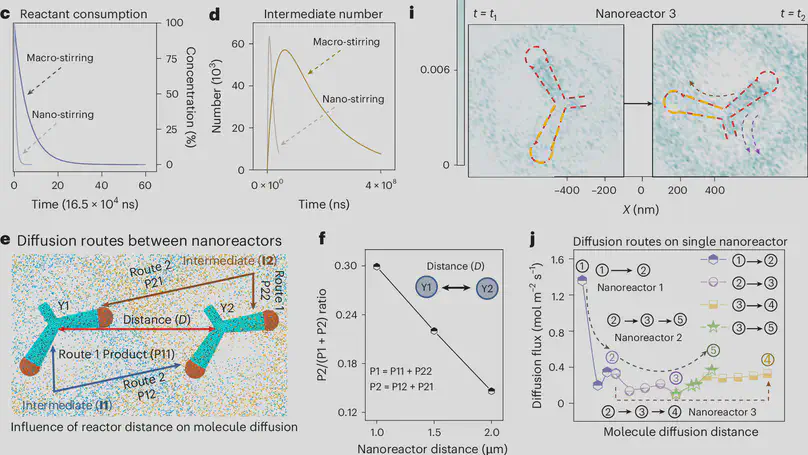
Developing artificial nanomaterial systems that can convert external stimuli to achieve nanoscale self-sustainable motion (for example, self-rotation), and simultaneously integrate and deploy the spatial localization of multiple active sites to unravel the intraparticle diffusion patterns of molecules, is of great importance for green synthetic chemistry. Here we show a paddle-like self-stirring mesoporous silica nanoreactor system with separated chambers and controllable proximity of active sites. The nanoreactors are designed by encapsulating magnetic Fe3O4 (~20 nm) in the first chamber, and meantime, Au and Pd nanocrystals are spatially isolated in different domains. Such a nanoreactor generates nanoscale rotation under the rotating magnetic fields and exhibits an order of magnitude activity enhancement in the cascade synthesis of 5,6-dimethylphenanthridinium (96.4% selectivity) compared with conventional macro-stirring. Meanwhile, we quantitatively uncovered the rotation-induced enhancement in sequential and reverse transfer of reactive intermediates, consequently revealing the relevance of self-rotation and proximity effects in controlling the catalytic performance.
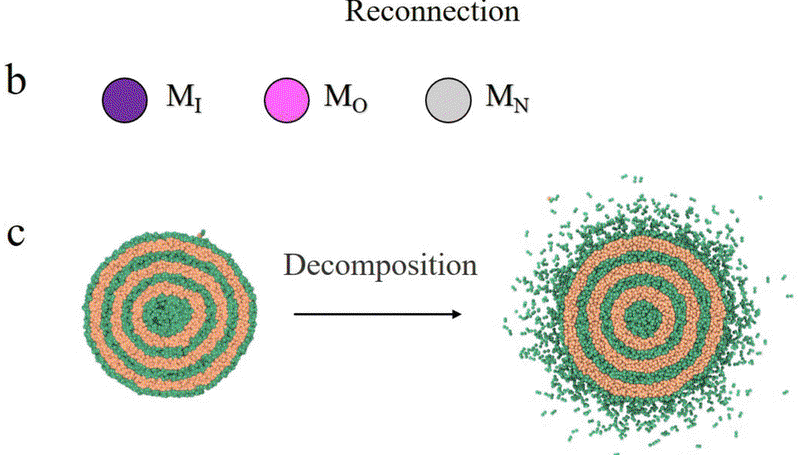
Compared with current lipid nanoparticle delivery systems, a new drug delivery system that can simultaneously achieve high stability toward temperature and time, and controllable release of drugs will be smart and next-generation. However, designing such systems for the complex human body environment remains a daunting challenge. Herein, we use highly stable multilayer dendrimersomes as a model to study the mechanism of controlled release of drugs through stimulus-response by dissipative particle dynamics simulations. The results show that when the dendrimersomes remain intact, the release of encapsulated hydrophilic, hydrophobic, and neutral drugs is minimal. Once the amphiphilic dendrimers in the dendrimersomes are decomposed beyond a threshold by cleaving the linkers connecting hydrophobic and hydrophilic segments, which can be achieved by exogenous perturbations, a significant or complete release of the drugs occurs. The introduction of liquid flow will remarkably enhance the release capability of drugs in decomposed dendrimersomes. These insights into the controlled release of drugs at the microscopic level offer helpful guidance for the development of advanced drug delivery vehicles.
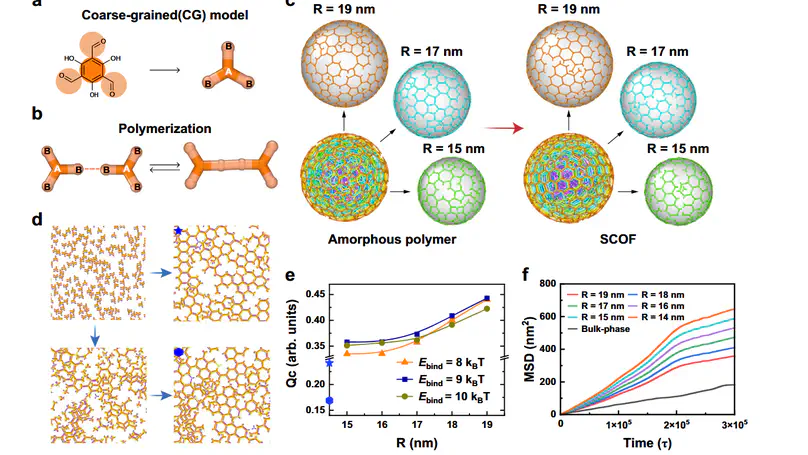
The catalytic performance, depending on the surface nature, is ubiquitous in photocatalysis. However, surface engineering for organic photocatalysts through structural modulation has long been neglected. Here, we propose a zone crystallization strategy for covalent organic frameworks (COFs) that enhances surface ordering through regulator-induced amorphous-tocrystalline transformation. Dynamic simulations show that attaching monofunctional regulators to the surface of spherical amorphous precursor improves surface dynamic reversibility, increasing crystallinity from the inside out. The resulting COF microspheres display surface-enhanced crystallinity and uniform spherical morphology. The visible photocatalytic hydrogen evolution rate reaches 126 mmol g–1 h–1 for the simplest β-ketoenamine-linked COF and 350 mmol gCOF–1 h–1 for SiO2@COF with minimal Pt cocatalysts. Mechanism studies indicate that surface crystalline domains build the surface electrical fields to accumulate photogenerated electrons and diminish electron transfer barriers between the COF and Pt interface. This work bridges the gap between microscopic molecules and macroscopic properties, allowing tailored design of crystalline organic photocatalysts.
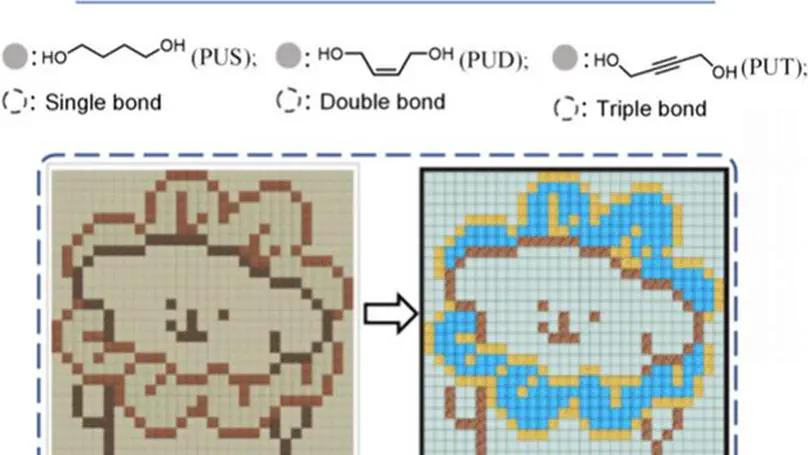
The study of structure−activity relationships is a top priority in the development of nontraditional luminescent materials. In this work, nonconjugated polyurethanes (PUs) with full-color emission (red, green, and blue) are easily obtained by control of the diol monomer structure and the polymerization conditions. Selected diol monomers introduced single, double, or triple bond repeating units into the main chain of the PUs, in order to understand how unsaturated bonds and H-bonds affect their luminescence from a molecular orbital viewpoint. Detailed experimental and theoretical results show that the PUs have different temperature-dependent behaviors related to the interplay of H-bonding, through-space n−π interactions, and aggregation properties. The potential applications of PUs in colorful displays, covert information transmission, and multifunctional bioimaging have been verified. This work provides a new general protocol for the simple preparation of multifunctional nonconventional fluorescent polymers and deepens the understanding of their luminescence mechanisms.
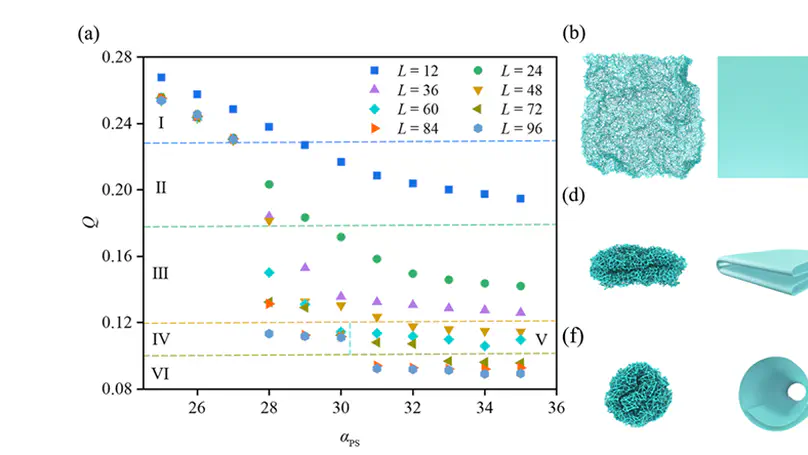
Unlike one-dimensional polymers, the theoretical framework on the behaviors of two-dimensional (2D) polymers is far from completeness. In this study, we model single-layer flexible 2D polymers of different sizes and examine their scaling behaviors in solution, represented by Rg ∼ Lν, where Rg is the radius of gyration and L is the side length of a 2D polymer. We find that the scaling exponent ν is 0.96 for a good solvent and 0.64 for under poor solvent condition. Interestingly, we observe a previously unnoticed phenomenon:under intermediate solvent conditions, the 2D polymer folds to maintain a flat structure, and as L becomes larger, multiple folded structures emerge. We introduce a shape parameter Q to diagram the relationship of folded structures with the polymer size and solvent condition. Theoretically, we explain the folding transitions by the competition between bending and solvophobic free energies.
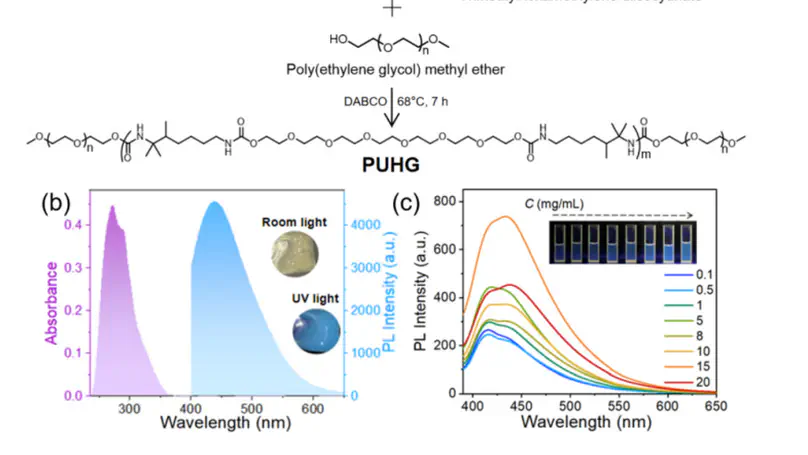
Nonconventional chromophores are good candidates for preparing luminous gels because their luminescence is usually enhanced in the aggregated state. In this work, a simple one-pot strategy for polymerization-induced gelation of polymer fluorescent gels was developed, and a self physically crosslinked luminous gel PUHG based on a non-conjugated/nonconventional luminous polyurethane derivative was obtained. Detailed experimental and theoretical studies probed the physical properties and luminescence principles of PUHG’s aggregated state. Molecular dynamics simulations suggest that abundant non-covalent interactions and physical entanglement between polyurethane chains are the main driving forces of gel formation and the source of luminescence. PUHG displays stable photophysical properties, environmental tolerance, good adhesion properties and processability, leading to the validation of patterning applications of PUHG on different organic/inorganic substrates. This work broadens the application range of nonconventional luminous polymers and provides a simple route for large-scale preparation of fluorescent gel soft materials.
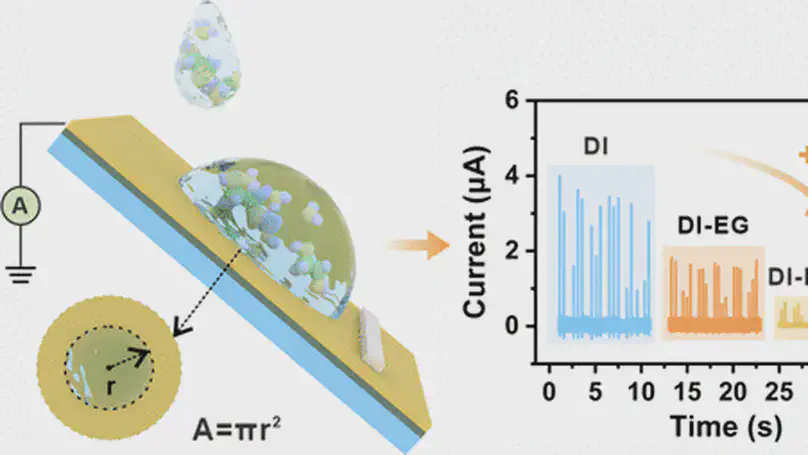
Charge-transfer mechanisms in adaptive multicomponent solutions at liquid–solid interfaces with triboelectric probes are crucial for understanding chemistry dynamics. However, liquid–solid charge transfer becomes unpredictable, due to the components or interactions in solutions, restricting its potential application for precise monitoring of liquid environments. This study utilizes triboelectric probes to investigate the charge transfer of chemicals, applying this approach to real-time coolant state monitoring. Analysis of electrical signal dynamics induced by ethylene glycol and its oxidation byproduct, oxalic acid, in ethylene glycol solutions reveals that hydrogen bond and ion adsorption diminishes the efficiency of electron transfer at the liquid–solid interface. These findings promote the engineering of the triboelectric probe that enhances coolant quality with remarkable sensitivity (detection limit:0.0001%) and a broad freezing point operational range (0 to −49 °C). This work advances the precise control of the charge dynamics and demonstrates the potential of triboelectric probes for interdisciplinary applications.
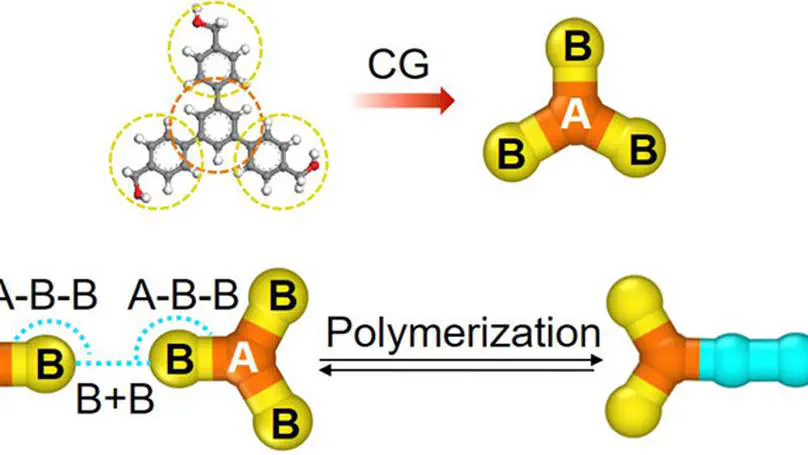
The concentration-in-control strategy is a versatile and powerful approach to construct a variety of low-dimensional nanostructures. However, little is known about the mechanistic aspects of the concentration-dependent formation of oligomers on the solid surface. In this study, we employ molecular dynamics simulation to give insight into the formation of oligomers, involving dimers and zigzag polymers, which are controlled upon adjusting kinetics via monomer concentrations. Our analyses indicate that concentration-dependent nucleation determines the size and topology of oligomers, and the correlation between reactions and diffusion of monomers significantly influences the crystallinity of oligomers. Our study suggests that a highly reversible reaction combined with rapid monomer diffusion can promote the crystalline quality of oligomers.
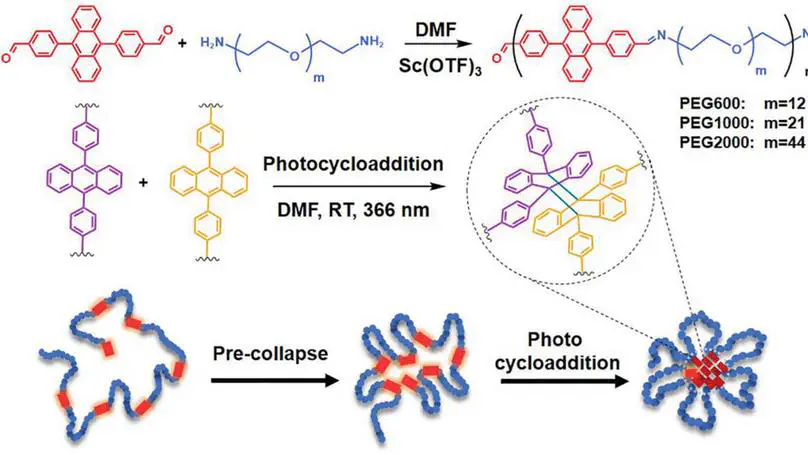
The collapse or folding of an individual polymer chain into a nanoscale particle gives rise to single‐chain nanoparticles (SCNPs), which share a soft nature with biological protein particles. The precise control of their properties, including morphology, internal structure, size, and deformability, are a long‐standing and challenging pursuit. Herein, a new strategy based on amphiphilic alternating copolymers for producing SCNPs with ultrasmall size and uniform structure is presented. SCNPs are obtained by folding the designed alternating copolymer in N,N‐dimethylformamide (DMF) and fixing it through a photocatalyzed cycloaddition reaction of anthracene units. Molecular dynamics simulation confirms the solvophilic outer corona and solvophobic inner core structure of SCNPs. Furthermore, by adjusting the length of PEG units, precise control over the mean size of SCNPs is achieved within the range of 2.8 to 3.9 nm. These findings highlight a new synthetic strategy that enables enhanced control over morphology and internal structure while achieving ultrasmall and uniform size for SCNPs.

Ensuring effective and controlled zinc ion transportation is crucial for functionality of the solid electrolyte interphase (SEI) and overall performance in zinc‐based battery systems. Herein the first‐ever demonstration of incorporate cation‐π interactions are provided in the SEI to effectively facilitate uniform zinc ion flux. The artificial SEI design involves the immobilization of 4‐amino‐p‐terphenyl (TPA), a strong amphiphilic cation‐π interaction donor, as a monolayer onto a conductive poly(3,4‐ethylenedioxythiophene) (PEDOT) matrix, which enable the establishment of a robust network of cation‐π interactions. Through a carefully‐designed interfacial polymerization process, a high‐quality, large‐area, robust is achieved, thin polymeric TPA/PEDOT (TP) film for the use of artificial SEI. Consequently, this interphase exhibits exceptional cycling stability with low overpotential and enables high reversibility of Zn plating/stripping. Symmetrical cells with TP/Zn electrodes can be cycled for more than 3200 hours at 1 mA cm −2 and 1 mAh cm −2 . And the asymmetric cells can cycle 3000 cycles stably with a high Coulomb efficiency of 99.78%. Also, under the extreme conditions of lean electrolyte and low N/P ratio, the battery with TP protective layer can still achieve ultra‐stable cycle.
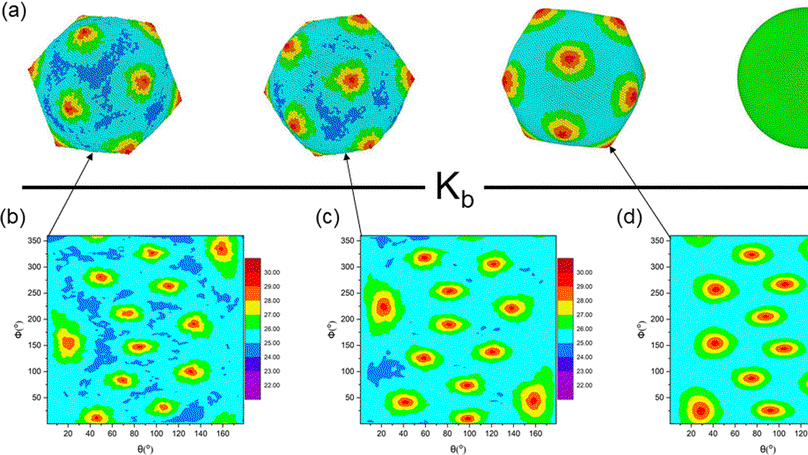
The application of liquid crystal technology typically relies on the precise control of molecular orientation at a surface or interface. This control can be achieved through a combination of morphological and chemical methods. Consequently, variations in constrained boundary flexibility can result in a diverse range of phase behaviors. In this study, we delve into the self-assembly of liquid crystals within elastic spatial confinement by using the Gay–Berne model with the aid of molecular dynamics simulations. Our findings reveal that a spherical elastic shell promotes a more regular and orderly alignment of liquid crystals compared to a hard shell. Moreover, during the cooling process, the hard-shell confined system undergoes an isotropic–smectic phase transition. In contrast, the phase behavior within the spherical elastic shell closely mirrors the isotropic–nematic–smectic phase transition observed in bulk systems. This indicates that the orientational arrangement of liquid crystals and the deformations induced by a flexible interface engage in a competitive interplay during the self-assembly process. Importantly, we found that phase behavior could be manipulated by altering the flexibility of the confined boundaries. This insight offers a fresh perspective for the design of innovative materials, particularly in the realm of liquid crystal/polymer composites.
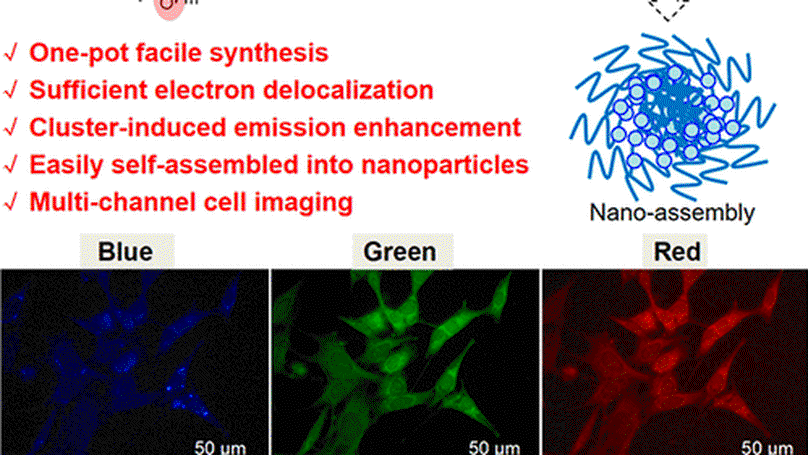
The development of single-component materials with low cytotoxicity and multichannel fluorescence imaging capability is a research hotspot. In the present work, highly electron-deficient pyrazine monomers were covalently connected into a polyurethane backbone using addition polymerization with terminal poly(ethylene glycol) monomethyl ether units containing a high density of electron pairs. Thereby, an amphiphilic polyurethane-pyrazine (PUP) derivative has been synthesized. The polymer displays cluster-induced emission through compact inter- and/or intramolecular noncovalent interactions and extensive through-space electron coupling and delocalization. Molecular rigidity facilitates red-shifted emission. Based on hydrophilic/hydrophobic interactions and excitation dependence emission at low concentrations, PUP has been self-assembled into fluorescent nanoparticles (PUP NPs) without additional surfactant. PUP NPs have been used for cellular multicolor imaging to provide a variety of switchable colors on demand. This work provides a simple molecular design for environmentally sustainable, luminescent materials with excellent photophysical properties, biocompatibility, low cytotoxicity, and color modulation.
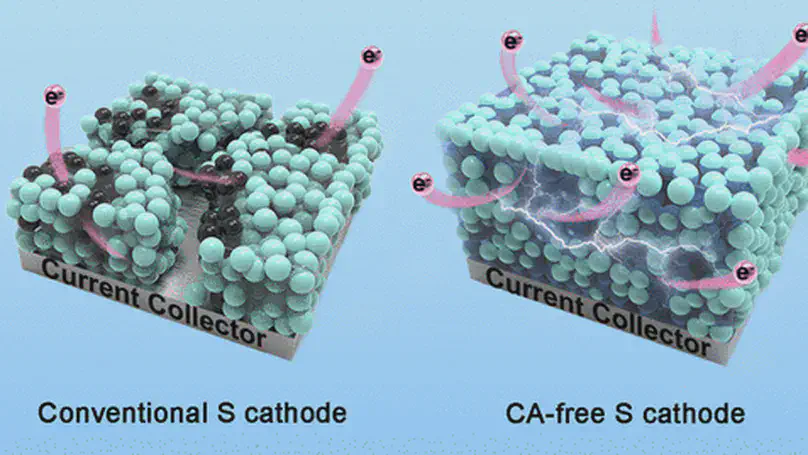
Binders are crucial for maintaining the integrity of an electrode, and there is a growing need for integrating multiple desirable properties into the binder for high-energy batteries, yet significant challenges remain. Here, we successfully synthesized a new binder by cross-linking sodium alginate (SA) with MXene materials (Ti3C2Tx). Besides the improved adhesion and mechanical properties, the integrated SA@Ti3C2Tx binder demonstrates much improved electronic conductivity, which enables ruling out the fluffy conductive additive from the electrode component with enhanced volumetric capacity. When SA@Ti3C2Tx is used to fabricate sulfur (S) cathodes, the conductive-additive-free electrode demonstrates extremely high capacity (1422 mAh cm–3/24.5 mAh cm–2) under an S loading of 17.2 mg cm–2 for Li–S batteries. Impressively, the SA@Ti3C2Tx binder shows remarkable feasibility in other battery systems such as Na–S and LiFePO4 batteries. The proposed strategy of constructing a cross-linking conductive binder opens new possibilities for designing high-mass-loading electrodes with high volumetric capacity.
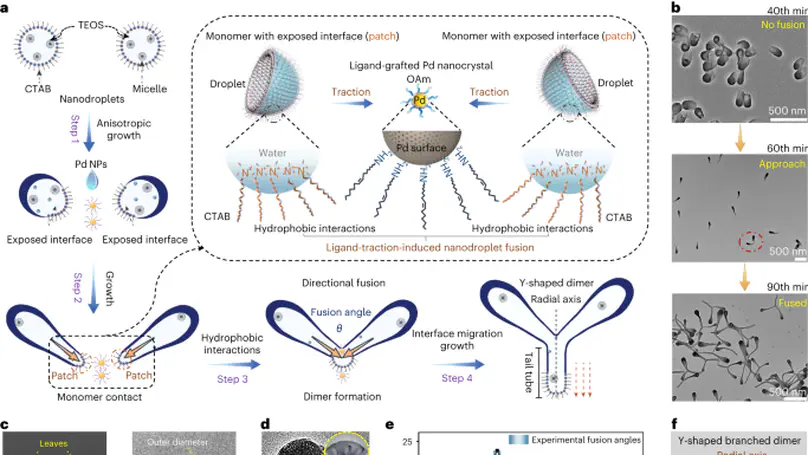
Wedderburn–Etherington number patterns, which have inherent combinatorial rules, are ubiquitous in natural tree-like systems and are of significance for studying the assembly of single particles into branched superstructures. However, implementing these patterns at the microor nanoscale is still challenging. By controlling the sequential fusion of nanodroplets, these patterns can be reproduced in nanometre-sized branched mesoporous silica structures. Anisotropic mesoporous silica nanoparticles, possessing exposed reaction-active droplet surfaces, are initially synthesized and then assembled following WedderburnEtherington number patterns (1, 1, 1, 2, 3, 6, 11, and so on), forming branched nanotrees containing dimers to multimers. This assembly is achieved by using ligand-grafted palladium nanocrystals as an adhesive, which can fuse the droplets exposed on one side of the preformed nanoparticles. The formed dimers have a Y-shaped architecture with two fused branches (length, ∼395 nm; outer diameter, ∼157 nm) connected by an open tube that grows later, and the sequential fusion-growth style can further extend the Y-structure to multibranched structures. Statistics can predict the degree of branching at each assembly level. The types and configurations of branched structural isomers can also be calculated precisely and are specified by the Wedderburn–Etherington trees.
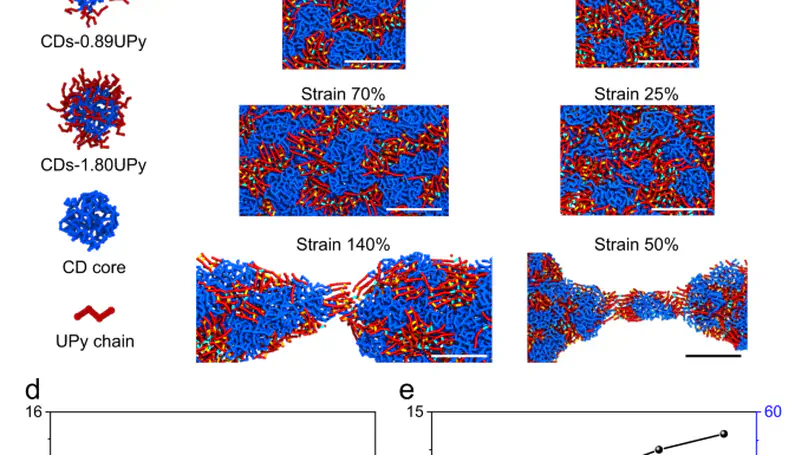
Assembly of nanoparticles into macroscopic materials with mechanical robustness, green processability, and recastable ability is an important and challenging task in materials science and nanotechnology. As an emerging nanoparticle with superior properties, macroscopic materials assembled from carbon dots will inherit their properties and further offer collective properties; however, macroscopic materials assembled from carbon dots solely remain unexplored. Here we report macroscopic films assembled from carbon dots modified by ureido pyrimidinone. These films show tunable fluorescence inherited from carbon dots. More importantly, these films exhibit collective properties including self-healing, re-castability, and superior mechanical properties, with Young’s modulus over 490 MPa and breaking strength over 30 MPa. The macroscopic films maintain original mechanical properties after several cycles of recasting. Through scratch healing and welding experiments, these films show good self-healing properties under mild conditions. Moreover, the molecular dynamics simulation reveals that the interplay of interparticle and intraparticle hydrogen bonding controls mechanical properties of macroscopic films. Notably, these films are processed into diverse shapes by an eco-friendly hydrosetting method. The methodology and results in this work shed light on the exploration of functional macroscopic materials assembled from nanoparticles and will accelerate innovative developments of nanomaterials in practical applications.
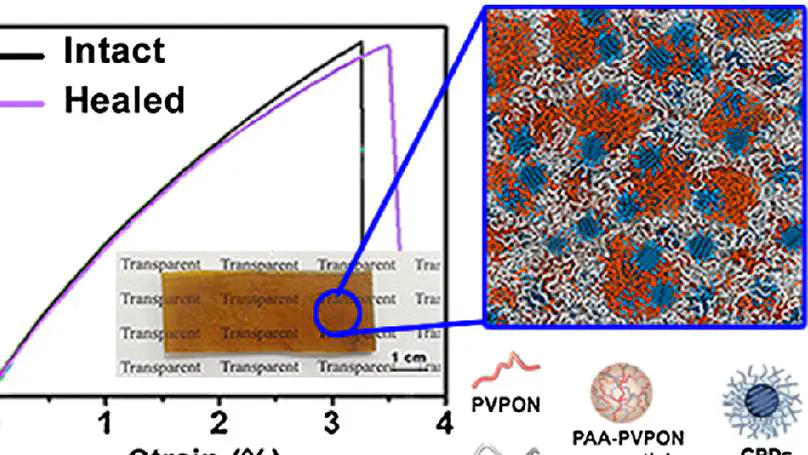
Noncovalently cross-linked polymer materials through healing, recycling, and reprocessing can reduce materials consumption and alleviate environmental pollution. However, it remains a huge challenge to fabricate super-strong noncovalently cross-linked polymer materials with mechanical strength comparable to high-performance engineering polymers. Herein, healable and reprocessable noncovalently cross-linked polymer composites with an unprecedented mechanical strength are fabricated by complexation of polyacrylic acid (PAA), polyvinylpyrrolidone (PVPON), and carbonized polymer dots (CPDs) (denoted as PAA-PVPON-CPDs). The incorporation of 15 wt % CPDs generates PAA-PVPON-CPDs composites with a tensile strength of ∼158 MPa and Young’s modulus of ∼8.2 GPa. Serving as nanofillers, the CPDs can establish strong interactions with polymers in PAA-PVPON composites. The CPDs and the in situ-formed PAAPVPON nanoparticles work in concert to significantly strengthen the PAA-PVPON-CPDs composites to an unprecedented strength. The PAA-PVPON-CPDs composites exhibit excellent impact resistance and damage tolerance because of the high mechanical strength of the composites and the energy dissipation mechanism of the CPDs and PAA-PVPON nanoparticles. Moreover, the fractured PAA-PVPON-CPDs composites can be healed to restore their original mechanical strength.
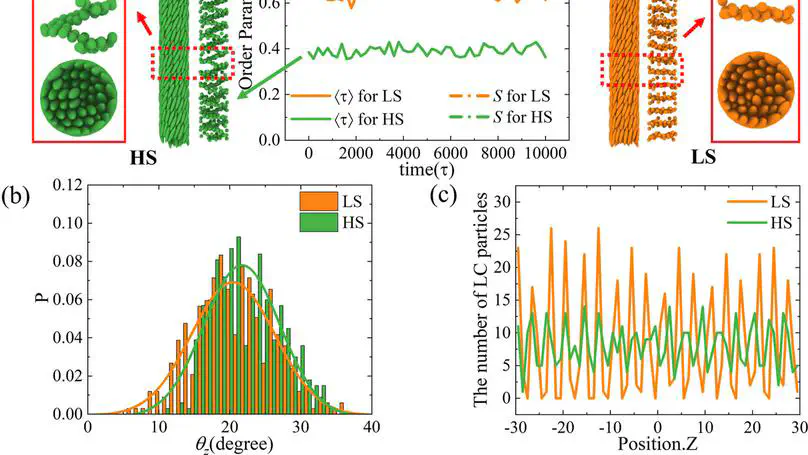
Confined liquid crystals (LCs) exhibit complex and intriguing structures, which are fascinating fundamental problems in soft matter. The helical structure of cylindrical cavities is of great importance in LC studies, particularly for their application in optical devices. In this study, we employ molecular dynamics simulations to explore the behavior of achiral smectic-B LCs confined in narrow cylindrical cavities, where geometric frustration plays an important role. By increasing the cylinder size, LCs exhibit a transition from multi-helical to layered structures. Notably, we observe two stable structures, namely the helical structure and the layered structure, at moderate cylinder size. We also investigate the effects of the arrangement of cylindrical wall particles (hexagonal or square array) and anchoring strength on the LC structure. Our findings reveal that both the hexagonal array and strong anchoring strength promote the formation of helical structures. Our study provides novel insights into the confinement physics of LCs and highlights the potential for achieving helical structures in achiral LCs, which will expand the future applications of LCs.
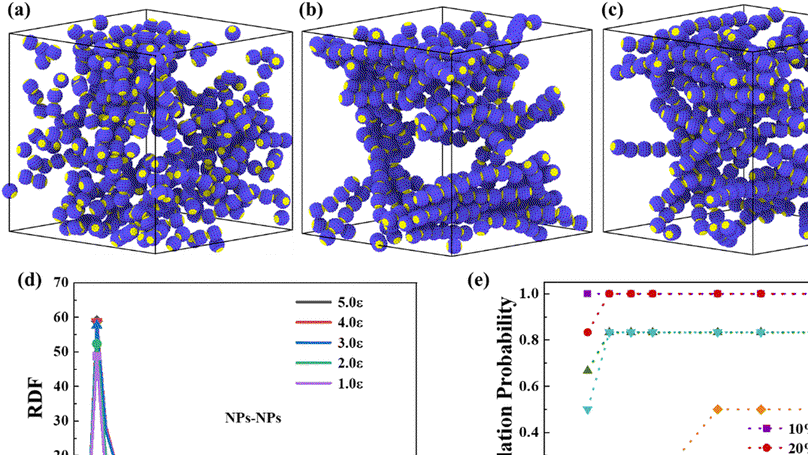
Highly conductive and stretchable polymer conductors fabricated from conductive fillers and stretchable polymers are urgently needed in flexible electronics, implants, soft robotics, etc. However, polymer conductors encounter the conductivity-stretchability dilemma, in which high-load fillers needed for high conductivity always result in the stiffness of materials. Herein, we propose a new design of highly conductive and stretchable polymer conductors with low-load nanoparticles (NPs). The design is achieved by the self-assembly of surface-modified NPs to efficiently form robust conductive pathways. We employ computer simulations to elucidate the self-assembly of the NPs in the polymer matrices under equilibrium and tensile states. The conductive pathways retain 100% percolation probability even though the loading of the NPs is lowered to ∼2% volume. When the tensile strain reaches 400%, the percolation probability of the ∼2% NP system is still greater than 25%. The theoretical prediction suggests a way for advancing flexible conductive materials.
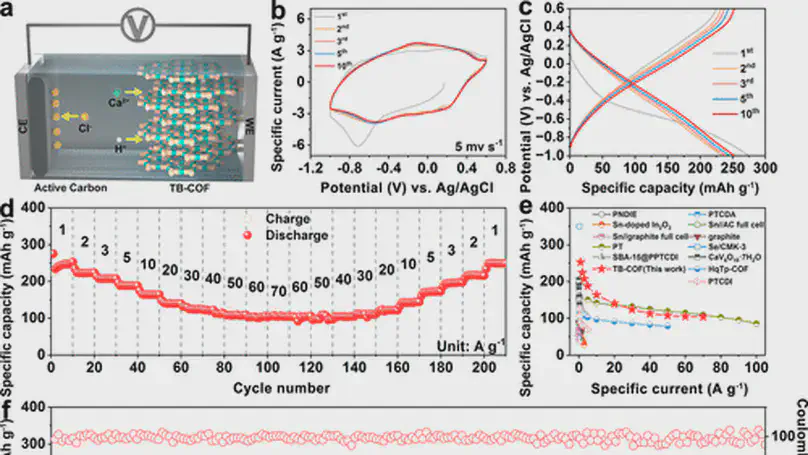
Organic materials are promising for cation storage in calcium ion batteries (CIBs). However, the high solubility of organic materials in an electrolyte and low electronic conductivity remain the key challenges for high-performance CIBs. Herein, a nitrogen-rich covalent organic framework with multiple carbonyls (TB-COF) is designed as an aqueous anode to address those obstacles. TB-COF demonstrates a high reversible capacity of 253 mAh g–1 at 1.0 A g–1 and long cycle life (0.01% capacity decay per cycle at 5 A g–1 after 3000 cycles). The redox mechanism of Ca2+/H+ co-intercalated in COF and chelating with C═O and C═N active sites is validated. In addition, a novel C═C active site was identified for Ca2+ ion storage. Both computational and empirical results reveal that per TB-COF repetitive unit, up to nine Ca2+ ions are stored after three staggered intercalation steps, involving three distinct Ca2+ ion storage sites. Finally, the evolution process of radical intermediates further elucidates the C═C reaction mechanism.
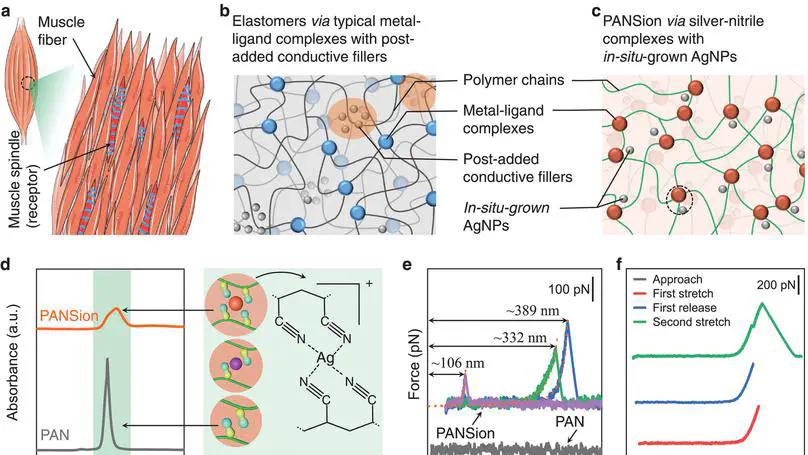
Self-sensing actuators are critical to artificial robots with biomimetic proprio-/exteroception properties of biological neuromuscular systems. Existing add-on approaches, which physically blend heterogeneous sensor/actuator components, fall short of yielding satisfactory solutions, considering their suboptimal interfaces, poor adhesion, and electronic/mechanical property mismatches. Here, a single homogeneous material platform is reported by creating a silver–polymer framework (SPF), thus realizing the seamless sensing–actuation unification. The SPF-enabled elastomer is highly stretchable (1200%), conductive (0.076 S m−1), and strong (0.76 MPa in-strength), where the stretchable polymer matrix synthesis and in situ silver nanoparticles reduction are accomplished simultaneously. Benefiting from the multimodal sensing capability from its architecture itself (mechanical and thermal cues), self-sensing actuation (proprio-deformations and external stimuli perceptions) is achieved for the SPF-based pneumatic actuator, alongside an excellent load-lifting attribute (up to 3700 times its own weight), substantiating its advantage of the unified sensing–actuation feature in a single homogenous material. In view of its human somatosensitive muscular systems imitative functionality, the reported SPF bodes well for use with next-generation functional tissues, including artificial skins, human–machine interfaces, self-sensing robots, and otherwise dynamic materials.
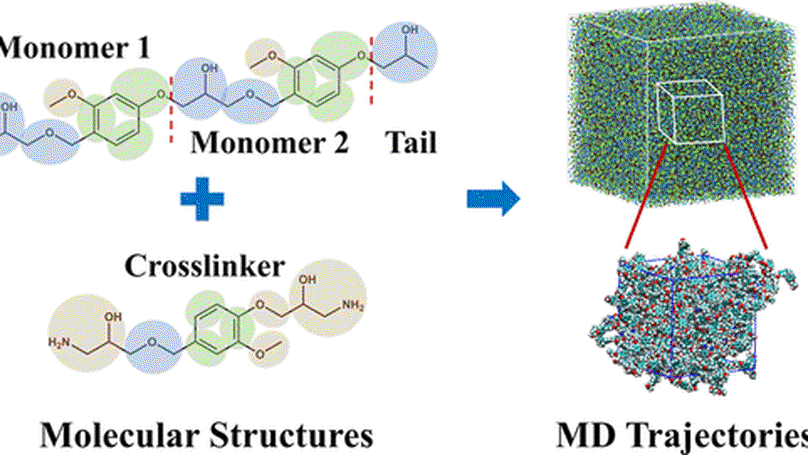
An automatic method is introduced to generate the initial configuration and input file from SMILES for multiscale molecular dynamics (MD) simulation of cross-linked polymer reaction systems. Inputs are a modified version of SMILES of all the components and conditions of coarse-grained (CG) and all-atom (AA) simulations. The overall process comprises the following steps:(1) Modified SMILES inputs of all the components are converted to 3-dimensional coordinates of molecular structures. (2) Molecular structures are mapped to the coarse-grained scale, followed by a CG reaction simulation. (3) CG beads are backmapped to the atomic scale after the CG reaction. (4) An AA productive run is finally performed to analyze volume shrinkage, glass transition, and atomic detail of network structure. The method is applied to two common epoxy resin reactions, that is, the cross-linking process of DGEVA (diglycidyl ether of vanillyl alcohol) and DHAVA (dihydroxyaminopropane of vanillyl alcohol) and that of DGEBA (diglycidyl ether of bisphenol A) and DETA (diethylenetriamine). These components form network structures after the CG cross-linking reaction and are then backmapped to calculate properties in the atomic scale. The result demonstrates that the method can accurately predict volume shrinkage, glass transition, and all-atom structure of cross-linked polymers. The method bridges from SMILES to MD simulation trajectories in an automatic way, which shortens the time of building up cross-linked polymer reaction model and suitable for high-throughput computations.
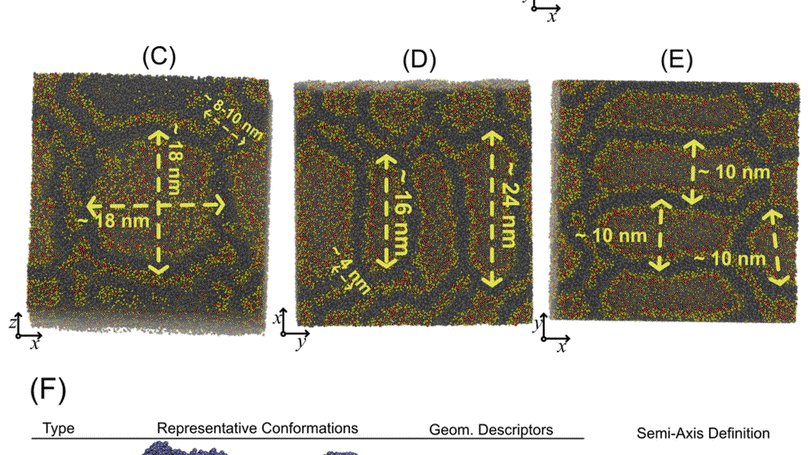
The design of cellular functions in synthetic systems, inspired by the internal partitioning of living cells, is a constantly growing research field that is paving the way to a large number of new remarkable applications. Several hierarchies of internal compartments like polymersomes, liposomes, and membranes are used to control the transport, release, and chemistry of encapsulated species. However, the experimental characterization and the comprehension of glycolipid mesostructures are far from being fully addressed. Lipid A is indeed a glycolipid and the endotoxic part of Gram-negative bacterial lipopolysaccharide; it is the moiety that is recognized by the eukaryotic receptors giving rise to the modulation of innate immunity. Herein we propose, for the first time, a combined approach based on hybrid Particle-Field (hPF) Molecular Dynamics (MD) simulations and Small Angle X-Ray Scattering (SAXS) experiments to gain a molecular picture of the complex supramolecular structures of lipopolysaccharide (LPS) and lipid A at low hydration levels. The mutual support of data from simulations and experiments allowed the unprecedented discovery of the presence of a nano-compartmentalized phase composed of liposomes of variable size and shape which can be used in synthetic biological applications.
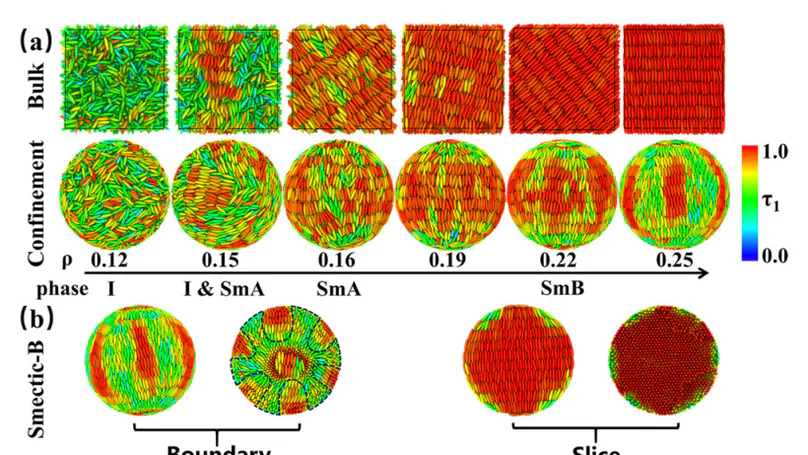
The formation and transformation of defects in confined liquid crystals are fascinating fundamental problems in soft matter. Here, we use molecular dynamics (MD) simulations to study ellipsoidal liquid crystals (LCs) confined in a spherical cavity, which significantly affects the orientation and translation of LC molecules near the surface. The liquid-crystal droplet can present the isotropic to smectic-B phase transition through the smectic-A phase, as the number density of the LC molecules increases. We further find the change of LC structure from bipolar to watermelon-striped during the phase transition from smectic-A (SmA) to smectic-B (SmB) phases. Our results reveal the transition from bipolar defects to the inhomogeneous structures with the coexistence of nematic and smectic phases in smectic liquid-crystal droplets. We also study the influence of the sphere size in the range of 10σ0 ≤ Rsphere ≤ 50σ0 on the structural inhomogeneities. It shows a weak dependence on the sphere size. We further focus on how the structures can be affected by the interaction strength εGB–LJ. Interestingly, we find the watermelon-striped structure can be changed into a configuration with four defects at the vertices of a tetrahedron upon increasing the interaction strength. The liquid crystals at a strong interaction strength of εGB–LJ = 10.0ε0 show the two-dimensional nematic phase at the surface. We further present an explanation for the origin of the striped-pattern formation. Our results highlight the potential for using confinement to control these defects and their associated nanostructural heterogeneity.
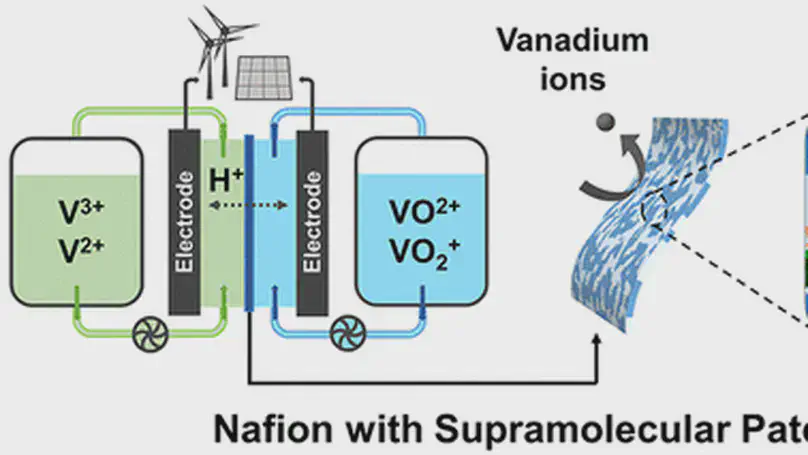
Nafion, as the mostly used proton exchange membrane material in vanadium redox flow batteries (VRFBs), encounters serious vanadium permeation problems due to the large size difference between its anionic nanophase (3–5 nm) and cationic vanadium ions (∼0.6 nm). Bulk hybridization usually suppresses the vanadium permeation at the expense of proton conductivity since conventional additives tend to randomly agglomerate and damage the nanophase continuity from unsuitable sizes and intrinsic incompatibility. Here, we report the ionic-nanophase hybridization strategy of Nafion membranes by using fluorinated block copolymers (FBCs) and polyoxometalates (POMs) as supramolecular patching additives. The cooperative noncovalent interactions among Nafion, interfacial-active FBCs, and POMs can construct a 1 nm-shrunk ionic nanophase with abundant proton transport sites, preserved continuity, and efficient vanadium screeners, which leads to a comprehensive enhancement in proton conductivity, selectivity, and VRFB performance. These results demonstrate the intriguing potential of the supramolecular patching strategy in precisely tuning nanostructured electrolyte membranes for improved performance.
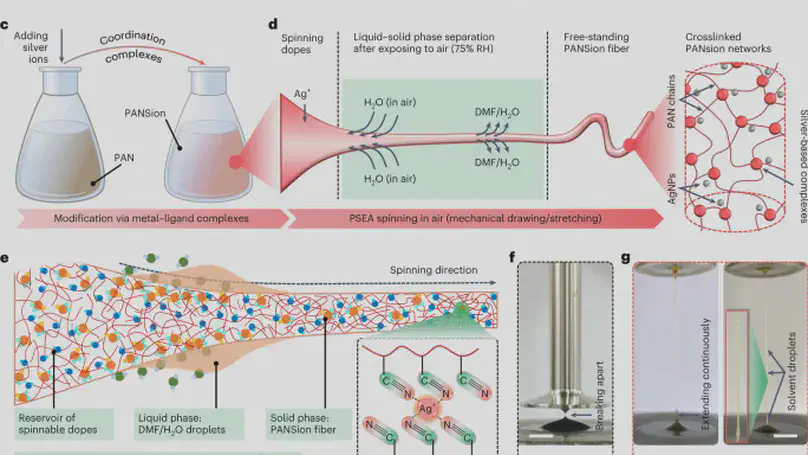
Soft fibres can be used to make smart textiles for use in energy, sensing and therapeutic applications. However, the fabrication of functional fibres is difficult compared with the fabrication of two-dimensional films and three-dimensional monoliths, and current methods typically require high temperatures, high volumes of solvents or complex systems. Here we report a spinning approach to fabricate functional fibres, which is based on spontaneous phase separation and is inspired by the silk-spinning processes of spiders. The silk-spinning process is mimicked by creating a spinning solution of polyacrylonitrile and silver ions, which forms an elastic supramolecular network with silver coordination complexes and in situ reduced silver nanoparticles. This approach, which operates at ambient pressure and temperature, can be used to make soft functional fibres that are mechanically stretchable (more than 500% strain), strong (more than 6 MPa) and electrically conductive (around 1.82 S m−1). To illustrate the capabilities of the technique, we use the fibres to create a sensing glove and a smart face mask.
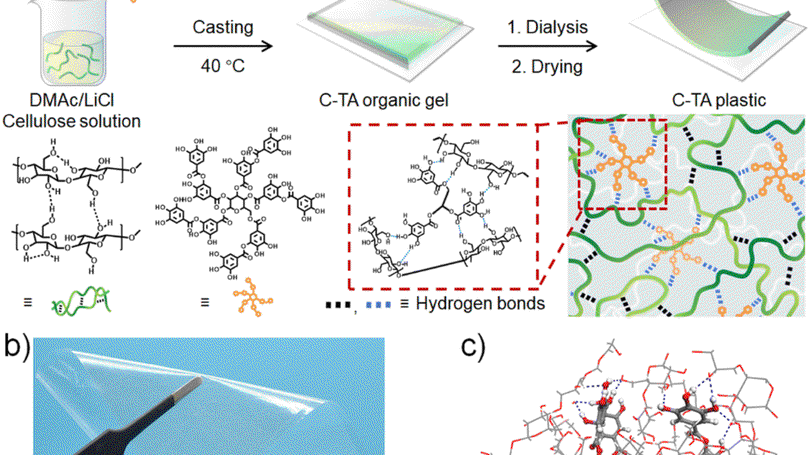
It is challenging to fabricate high-performance degradable plastics that simultaneously possess high mechanical strength, satisfactory water resistance and rapid degradation characteristics in natural environments using biomass resources. In this study, mechanically robust, water-resistant, biocompatible, and degradable plastics are fabricated through the complexation of regenerated cellulose and tannic acid (TA) followed by molding these complexes into desired shapes. The resulting plastic (denoted as C-TA) prepared with 15 wt% TA exhibits an ultrahigh fracture strength of ∼265 MPa and a toughness of ∼55.2 MJ m−3. An all-atom molecular dynamics simulation demonstrates that the introduction of dendritic TA molecules notably enhances the toughness of the C-TA plastic through the formation of TA-centered hydrogen-bond clusters. The C-TA plastic retains a fracture strength of ∼166 MPa and ∼98 MPa after being stored in environments with relative humidities of 80% and 100% for 7 days, respectively, indicating its excellent water resistance. The good water resistance and high mechanical strength of the C-TA plastic originate from the hydrophobic aromatic rings of its TA molecules and its TA-centered hydrogen-bond clusters which serve as cross-links and nanofillers to strengthen the plastic. The C-TA plastic can be fully degraded in soil into nontoxic species within 35 days.
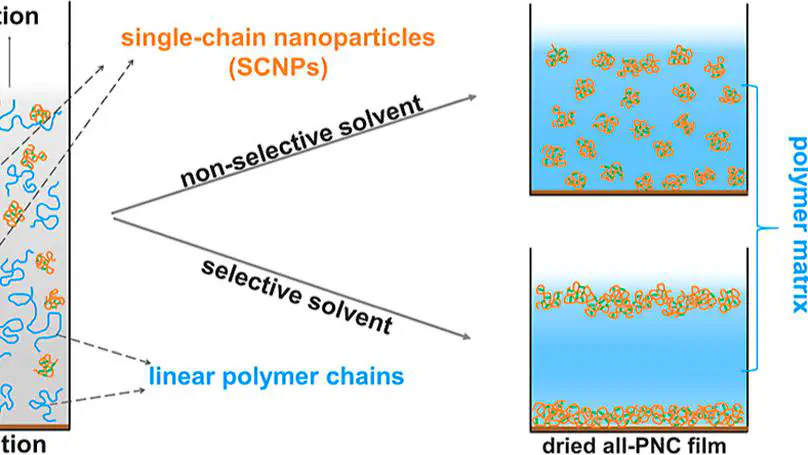
In athermal all-polymer nanocomposites (all-PNCs), single-chain nanoparticles (SCNPs) are often considered to be well miscible with polymer matrixes due to their similarity in chemical compositions. However, internal cross-linking units of SCNPs must have different chemistries from the backbone monomers and, therefore, also from matrix chains. Here, we use large-scale molecular dynamics simulations to study the influence of solvent selectivity, particularly to internal cross-linkers in SCNPs, on dispersion state of SCNPs in all-PNC films upon solvent evaporation. Surprisingly, we find distinct dispersion states of SCNPs in drying films with different solvent selectivities. When the solvent is both good for cross-linkers and backbone/matrix monomers, SCNPs can be uniformly dispersed. However, when the backbone/matrix monomers have better solvophilicity than the cross-linkers and the solvophilicity of the latter is weak enough, we find segregation of SCNPs in surface regions. Such phenomena can be attributed to the intrinsic difference in the solvent density at an interface region from that in the bulk, which eventually results in the aggregation of SCNPs at the interface region where the solvent particles are much less than in the bulk. At the interface region, cross-linkers in the SCNPs will have less contact with the solvent and, therefore, less enthalpy penalty than being located in the bulk region of the film. The results demonstrate that solvent selectivity has a non-negligible effect on the structure of the composite film, which will inevitably have impacts on macroscopic properties of the film.
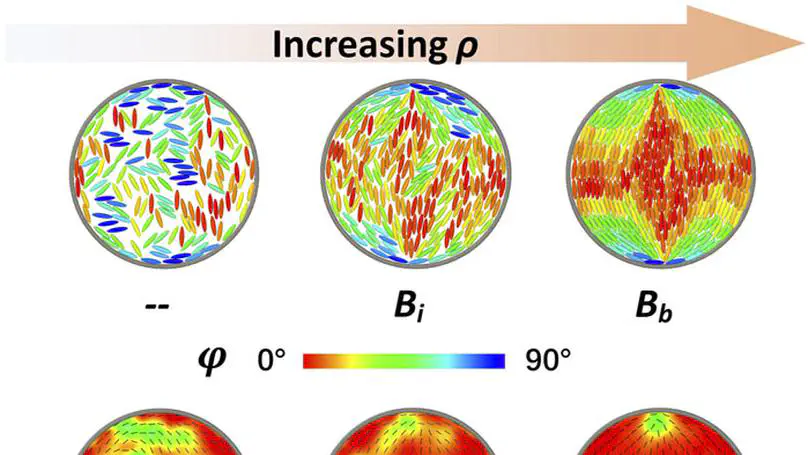
Normally, defects in two-dimensional, circular, confined liquid crystals can be classified into four types based on the position of singularities formed by liquid crystal molecules, i.e., the singularities located inside the circle, at the boundary, outside the circle, and outside the circle at infinity. However, it is considered difficult for small aspect ratio liquid crystals to generate all these four types of defects. In this study, we use molecular dynamics simulation to investigate the defect formed in Gay–Berne, ellipsoidal liquid crystals, with small aspect ratios confined in a circular cavity. As expected, we only find two types of defects (inside the circle and at the boundary) in circular, confined, Gay–Berne ellipsoids under static conditions at various densities, aspect ratios, and interactions between the wall and liquid crystals. However, when introducing an external field to the system, four types of defects can be observed. With increasing the strength of the external field, the singularities in the circular, confined system change from the inside to the boundary and the outside, and the farthest position that the singularities can reach depends on the strength of the external field. We further introduce an alternating, triangular wave, external field to the system to check if we can observe the transformation of different defects within an oscillating period. We find that the position of the singularities greatly depends on the oscillating intensity and oscillating period. By changing the oscillating intensity and oscillating period of the external field, the defect types can be adjusted, and the transformation between different defects can be easily observed. This provides a feasible way to modulate liquid crystal defects and investigate the transformation between different defects.
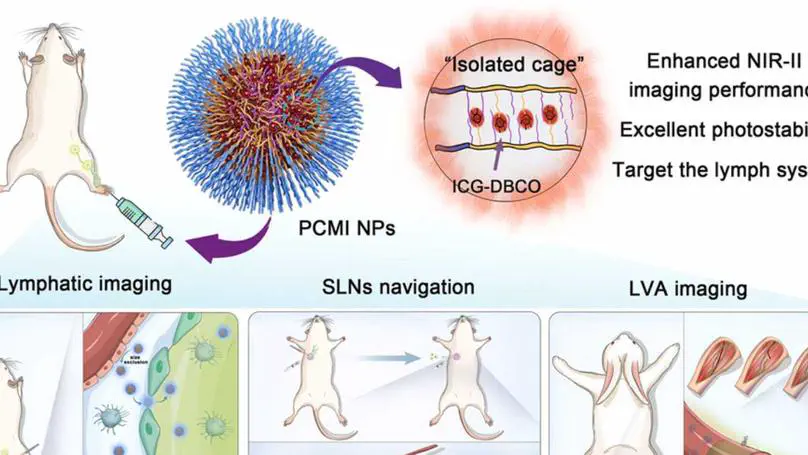
Fluorescence imaging in the second near-infrared (NIR-II) window is well suited for biological systems due to lower tissue scattering and micrometer-scale resolution at depths of millimeters. Unfortunately, none of the NIR-II fluorophores have clinical application due to low quantum yields, poor photostability, and longterm biosafety concerns. Herein, we develop NIR-II fluorescent nanoprobes based on the isolated cage monodisperse strategy, which significantly inhibits the π-π stacking interactions and restricts internal rotation of the arrested indocyanine green (ICG) fluorophores, which minimizes aggregation-caused quenching and enhances their NIR-II imaging performance. Unlike ICG’s imaging window of several minutes, the nanoformulations have reduced photobleaching and provide longer observation times. The increased imaging time allows high spatiotemporal resolution of blood vessels and lymphatic system. Benefiting from the high resolution and sensitivity of the nanoprobes, sentinel lymph nodes are accurately removed under fluorescence navigation. More intriguingly, the patency of lymphovenous anastomosis (LVA) is presented more intuitively by qualitative and quantitative NIR-II fluorescence signals, which will directly benefit the innovation and promotion of LVA.
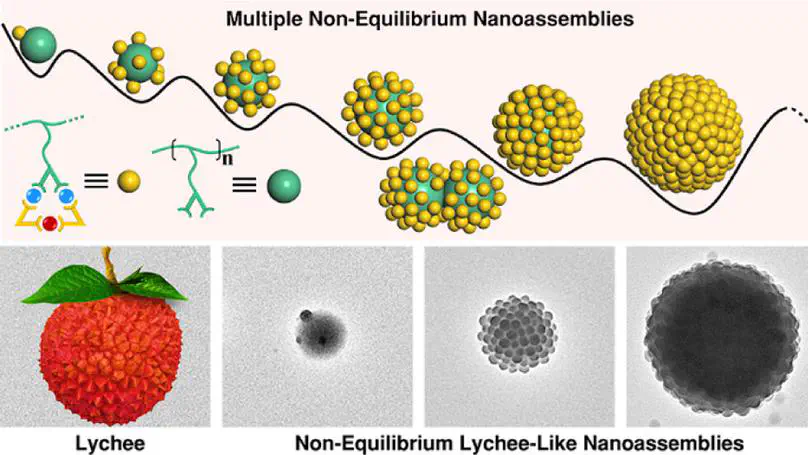
Biological systems employ non-equilibrium self-assembly to create ordered nanoarchitectures with sophisticated functions. However, it is challenging to construct artificial non-equilibrium nanoassemblies due to lack of control over assembly dynamics and kinetics. Herein, we design a series of linear polymers with different side groups for further coordination-driven self-assembly based on shape-complementarity. Such a design introduces a main-chain confinement which effectively slows down the assembly process of side groups, thus allowing us to monitor the real-time evolution of lychee-like nanostructures. The function related to the non-equilibrium nature is further explored by performing photothermal conversion study. The ability to observe and capture non-equilibrium states in this supramolecular system will enhance our understanding of the thermodynamic and kinetic features as well as functions of living systems.
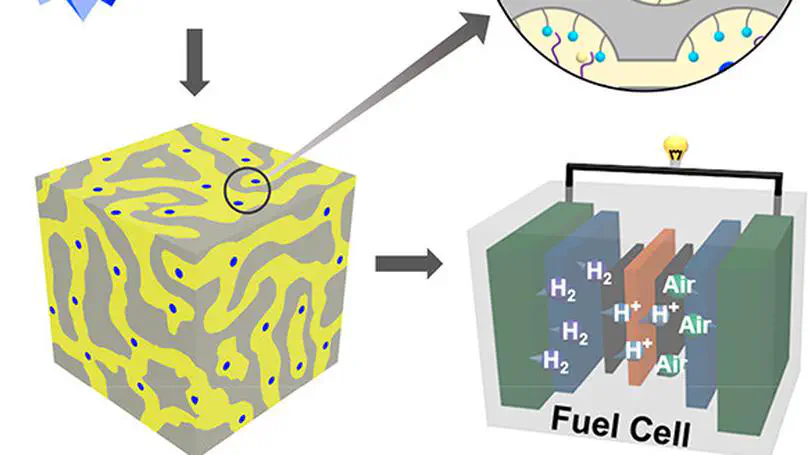
Advanced proton exchange membranes (PEMs) are highly desirable in emerging sustainable energy technology. However, the further improvement of commercial perfluorosulfonic acid PEMs represented by Nafion is hindered by the lack of precise modification strategy due to their chemical inertness and low compatibility. Here, we report the robust assembly of polyethylene glycol grafted polyoxometalate amphiphile (GSiW11) into the ionic nanophases of Nafion, which largely enhances the comprehensive performance of Nafion. GSiW11 can coassemble with Nafion through multiple supramolecular interactions and realize a stable immobilization. The incorporation of GSiW11 can increase the whole proton content in the system and induce the hydrated ionic nanophase to form a wide channel for proton transport; meanwhile, GSiW11 can reinforce the Nafion ionic nanophase by noncovalent cross-linking. Based on these synergistic effects, the hybrid PEMs show multiple enhancements in proton conductivity, tensile strength, and fuel cell power density, which are all superior to the pristine Nafion. This work demonstrates the intriguing advantage of molecular nanoclusters as supramolecular enhancers to develop high-performance electrolyte materials.
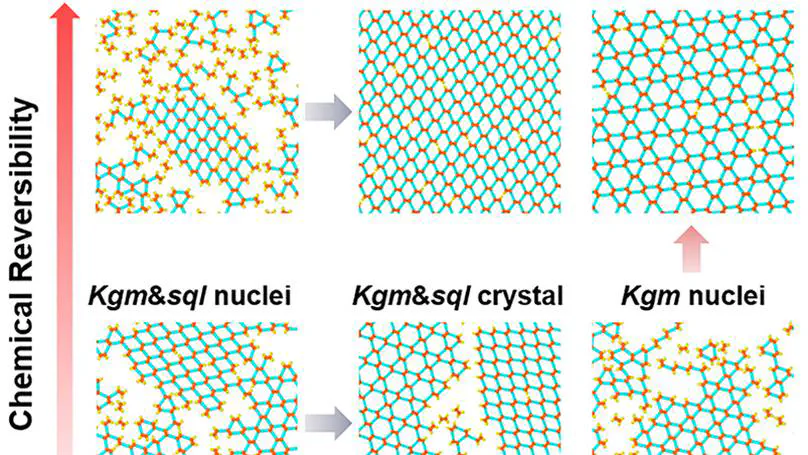
The mechanism of growth of one of the competitive topologies for covalent organic frameworks with constitutional isomers is poorly understood. Herein, we employ molecular dynamics to study the isoenergetic assembly of the rhombic square (sql) and Kagome lattice (kgm). The concentration, solvent conditions, and the reversibility of chemical reactions are considered by means of an Arrhenius two-state model to describe the reactions. High concentrations and poor solvent both result in sql, agreeing well with recent experiments. Moreover, the high reversibility of reactions gives rise to sql, while the low reversibility leads to kgm, suggesting a new way of regulating the topology. Our analyses support that the nucleation of isomers influenced by experimental conditions is responsible for the selection of topologies, which improves understanding of the control of topology. We also propose a strategy in which a two-step growth can be exploited to greatly improve the crystallinity of kgm.
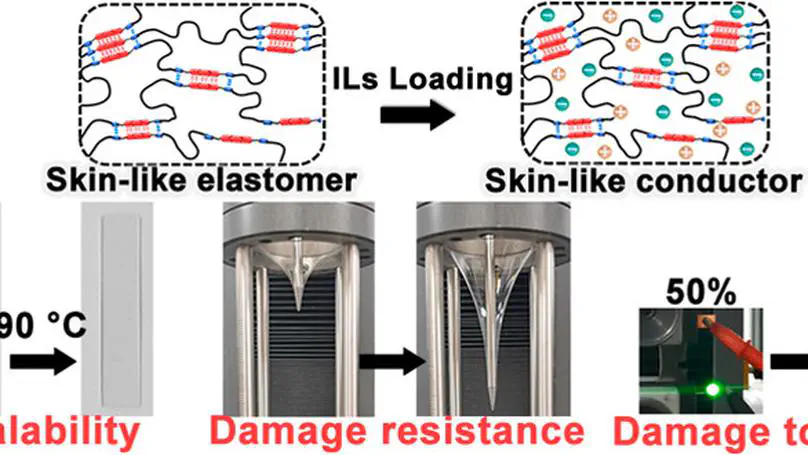
Elastomers play an irreplaceable role in industry and daily life; however, they are usually soft and susceptible to damage. In this study, skin-like poly(urethane-urea) elastomers with high mechanical strength, stretchability, elasticity, and excellent damage resistance, damage tolerance, and healability are fabricated by cross-linking polycaprolactone (PCL) chains with hydrogen-bond arrays. The elastomer, which is denoted as PU-ASC, has a tensile strength of ∼72.6 MPa, recovery strain of ∼500%, and fracture energy of ∼161 kJ m–2. Moreover, the PU-ASC elastomer exhibits unique strain-adaptive stiffening, which endows the elastomer with the capacity to resist damage. The skin-like PU-ASC-IL conductors can be conveniently fabricated by loading ionic liquids (ILs) into the PU-ASC elastomers. The healable, stretchable, elastic, damage-resistant, and damage-tolerant PU-ASC-IL conductors show record-high mechanical performance, with tensile strength, toughness, and fracture energy values of ∼22.8 MPa, ∼164.2 MJ m–3, and ∼73.6 kJ m–2, respectively. The damage resistance and damage tolerance of the elastomers and conductors mainly originate from the disintegrable hydrogen-bond arrays, which are capable of dissipating energy, and the strain-induced crystallization of the PCL segments. Owing to the reversibility of the hydrogen-bond arrays, fractured PU-ASC and PU-ASC-IL can be conveniently healed under heating, restoring their original mechanical performance and conductivity.
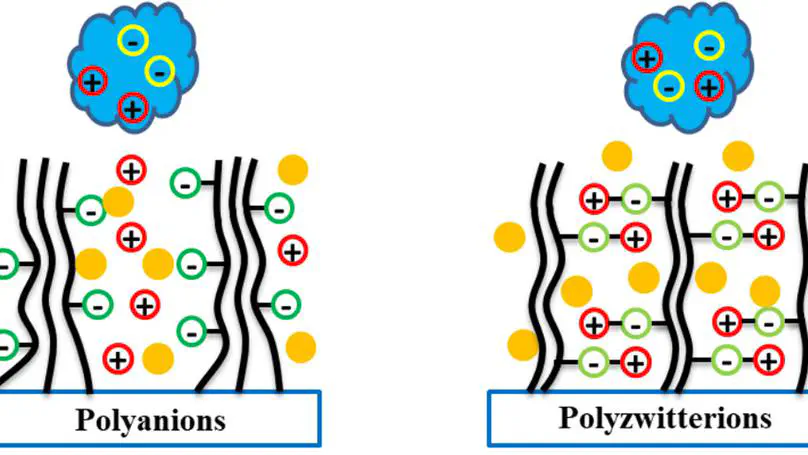
Surfaces grafted with polyelectrolyte chains for excellent performance in protein antifouling are highly desired in many applications, such as biomedical implants and devices. In general, the adsorbing/resisting behaviors of proteins can be mainly attributed to the electrostatic interactions that are associated with the charge properties of proteins and polyelectrolytes. By coarse-grained molecular dynamics simulations, we examined the self-assembled structures of polyanion and polyzwitterion brushes as well as the interactions on negatively and positively charged proteins. We found that in addition to charges, the structural polarization induced by self-assembly with a certain charge distribution shows significant influences on protein behavior. The large-scale dipole–dipole interactions between brushes and proteins can dominate the behavior of proteins on the brushes under certain circumstances. To ensure simulation accuracy, we compared two models and found a polar Martini model that explicitly treats electrostatic interactions as long-ranged ones, giving a more reasonable structural description compared with the normal Martini model that truncates electrostatic interactions.
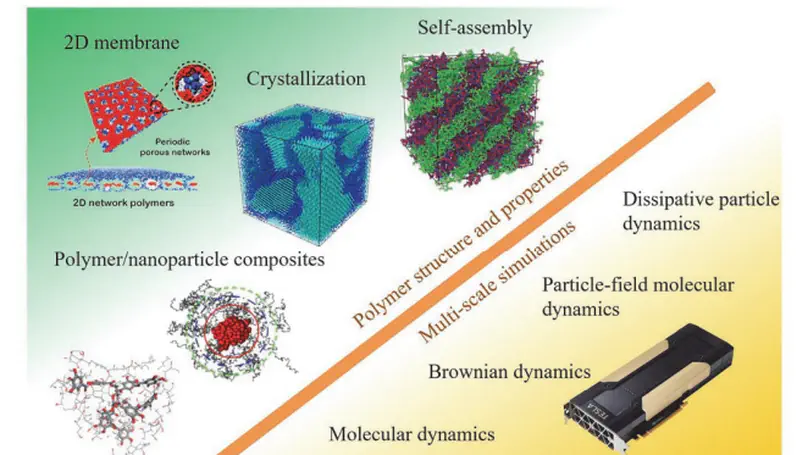
Polymers are widely used in our daily life and industry because of their intrinsic characteristics, such as multi-functionality, low cost, light mass, ease of processability, and excellent chemical stability. Polymers have multiscale space-time properties, which are mainly reflected in the fact that the properties of polymer systems depend not only on chemical structure and molecular properties, but also to a large extent on the aggregation state of molecules, that is, phase structure and condensed state structure. Thanks to the continuous development of simulation methods and the rapid improvement of scientific computation, computer simulation has played an increasingly important role in investigating the structure and properties of polymer systems. Among them, coarse-grained dynamics simulations provide a powerful tool for studying the self-assembly structure and dynamic behavior of polymers, such as glass transition and entanglement dynamics. This review summarizes the coarse-grained models and methods in the dynamic simulations for polymers and their composite systems based on graphics processing unit(GPU) algorithms, and discusses the characteristics, applications, and advantages of different simulation methods. Based on recent studies in our group, the main progress of coarse-grained simulation methods in studying the structure, properties and physical mechanism of polymer materials is reviewed. It is anticipated to provide a reference for further development of coarse-grained simulation methods and software suitable for polymer research.
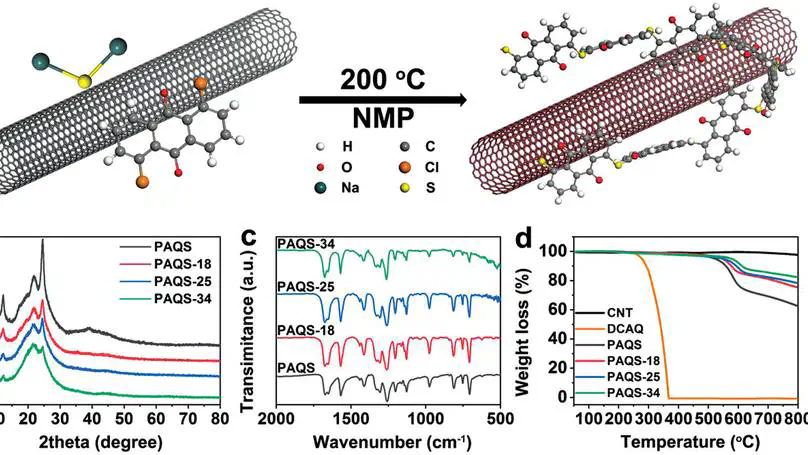
Calcium-ion batteries (CIBs) are considered as promising alternatives in large-scale energy storage due to their divalent electron redox properties, low cost, and high volumetric/gravimetric capacity. However, the high charge density of Ca2+ contributes to strong electrostatic interaction between divalent Ca2+ and hosting lattice, leading to sluggish kinetics and poor rate performance. Here, in situ formed poly(anthraquinonyl sulfide) (PAQS)@CNT composite is reported as nonaqueous calcium-ion battery cathode. The enolization redox chemistry of organics has fast redox kinetics, and the introduction of carbon nanotube (CNT) accelerates electron transportation, which contributes to fast ionic diffusion. As the conductivity of the PAQS is enhanced by the increasing content of CNT, the voltage gap is significantly reduced. The PAQS@CNT electrode exhibits specific capacity (116 mAh g−1 at 0.05 A g−1), high rate capacity (60 mAh g−1 at 4 A g−1), and an initial capacity of 82 mAh g−1 at 1 A g−1 (83% capacity retention after 500 cycles). The electrochemical mechanism is proved to be that the PAQS undergoes reduction reaction of their carbonyl bond during discharge and becomes coordinated by Ca2+ and Ca(TFSI)+ species. Computational simulation also suggests that the construction of Ca2+ and Ca(TFSI)+ co-intercalation in the PAQS is the most reasonable pathway.
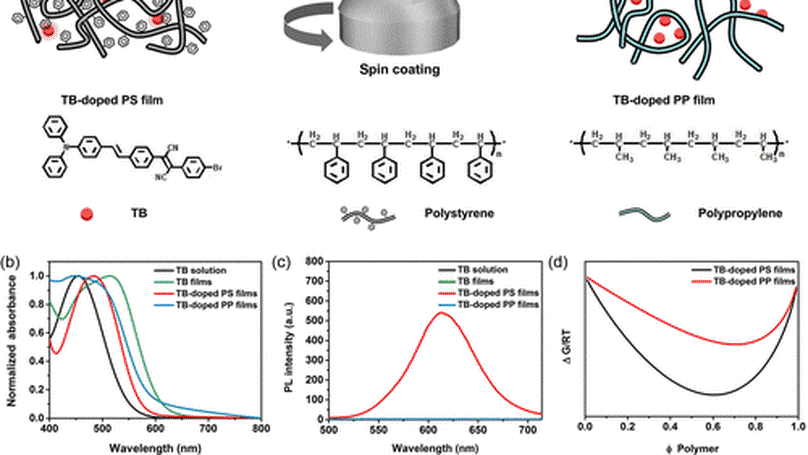
Identification and visualization of phase structures inside polymer blends are of critical importance in the understanding of their intrinsic structure and dynamics. However, the direct optical observation of the individual component phase in a dense bulk material poses a significant challenge. Herein, three-dimensional fluorescence imaging of phase separation and real-time visualization of phase transformation in immiscible polymer blends of polypropylene and polystyrene is realized through multiphoton laser scanning microscopy. Owing to the specific fluorescence behavior of the cyanostyrene derivative 2-(4-bromophenyl)-3-(4-(4-(diphenylamino)styryl)phenyl)fumaronitrile, the high-contrast imaging of the macrophase of the component polymer in two and three dimensions with a maximum depth of 140 μm and a high signal-to-noise ratio of 300 can be achieved. Detailed spectroscopic and structural studies reveal that the distinctive fluorescence features of each phase domain should originate from the formation of a completely different aggregate between probes and component polymer. Furthermore, visualizations of the internal morphology deformation and macrophase transformation were realized by employing a stretched dumbbell sample under constant tension.
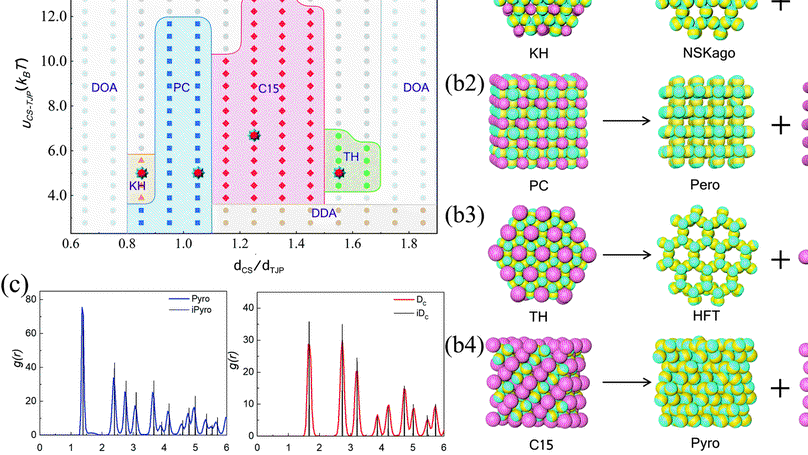
Colloidal cubic diamond crystals with low-coordinated and staggered structures could display a wide photonic bandgap at low refractive index contrasts, which makes them extremely valuable for photonic applications. However, self-assembly of cubic diamond crystals using simple colloidal building blocks is still considerably challenging, due to their low packing fraction and mechanical instability. Here we propose a new strategy for constructing colloidal cubic diamond crystals through cooperative self-assembly of surface-anisotropic triblock Janus colloids and isotropic colloidal spheres into superlattices. In self-assembly, cooperativity is achieved by tuning the interaction and particle size ratio of colloidal building blocks. The pyrochlore lattice formed by self-assembly of triblock Janus colloids acts as a soft template to direct the packing of colloidal spheres into cubic diamond lattices. Numerical simulations show that this cooperative self-assembly strategy works well in a large range of particle size ratio of these two species. Moreover, photonic band structure calculations reveal that the resulting cubic diamond lattices exhibit wide and complete photonic bandgaps and the width and frequency of the bandgaps can also be easily adjusted by tuning the particle size ratio. Our work will open up a promising avenue toward photonic bandgap materials by cooperative self-assembly employing surface-anisotropic Janus or patchy colloids as a soft template.
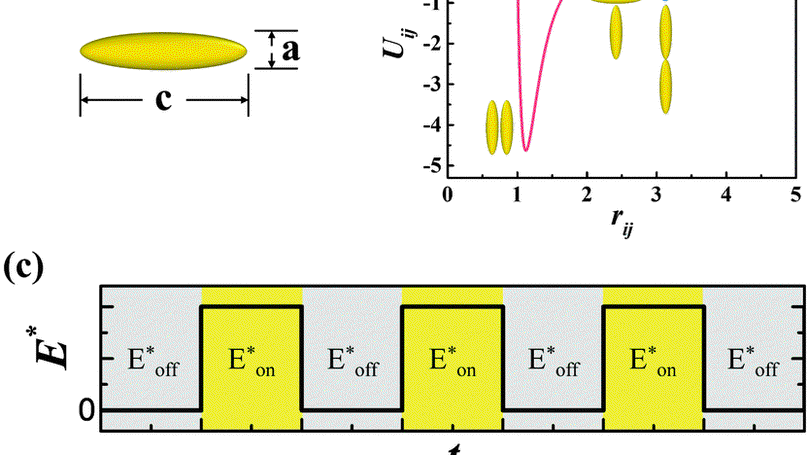
Using simple achiral building blocks modulated by an external field to achieve chiral liquid crystal phases remains a challenge. In this study, a chiral helix liquid crystal phase is obtained for a simple Gay–Berne ellipsoid model under an alternating external field by using molecular dynamics simulations. Our results show that the chiral helix liquid crystal phase can be observed in a wide range of external field strengths when the oscillation period is smaller than the rotational characteristic diffusion timescale of ellipsoids. In addition, we find that the pitch and tilt angle of the helix structure can also be adjusted by changing the strength and oscillation period of the applied alternating external field. This may provide a feasible route for the regulation of chiral liquid crystal phases by an alternating external field.
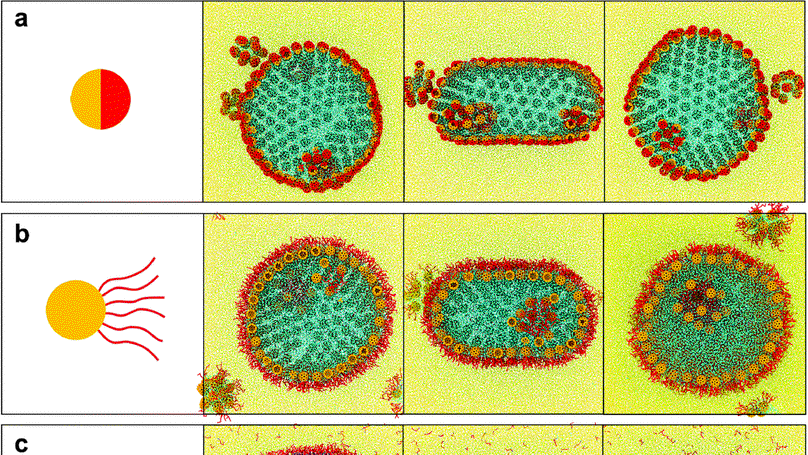
The nanoparticle (NP) surfactants generated in situ by binding NPs and polymers can assemble into an elastic NP monolayer at the interface of two immiscible liquids, structuring the liquids. Janus NPs can be more strongly bound to the interface than the NP surfactants, but they are unable to structure liquids into complex shapes due to the difficulty of assembling the jamming arrays. By molecular dynamics simulations, we give an insight into the better performance of NP surfactants than Janus NPs on dynamically structuring liquids. The high energy binding of Janus NPs to the interface will drive the Janus NPs to assemble into micelles in binary liquids. The micelles are stabilized in one liquid by encapsulating a little of the other liquid, hindering interfacial adsorption when the interface is marginally extended upon liquid deformation. In contrast, the in situ formed NP surfactants can rapidly fill the enlarged interfacial area to arrest the consecutive shape changes of the liquids. Moreover, NP surfactants can be designed with an appropriate coverage ratio (≤50%) of NP surface bearing host–guest sites to avoid dissolution and impart a desirable mechanical elasticity to their assembly.
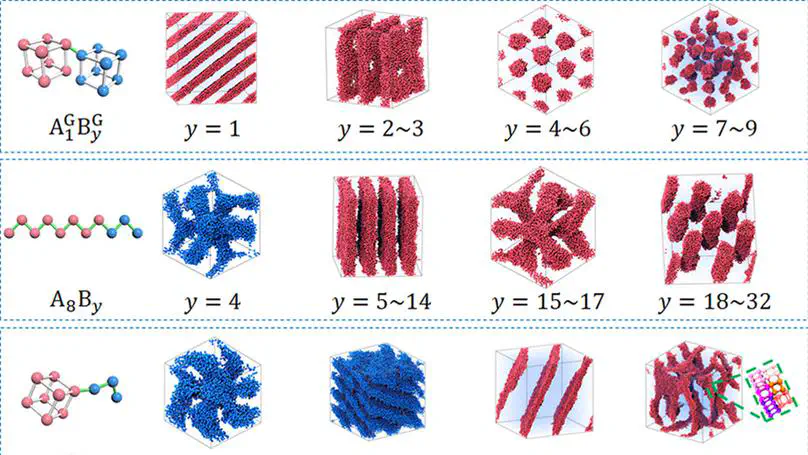
We have studied the self-assembly of two types of amphiphiles with one or two blocks composed of giant “monomers” of the cubic cage using dissipative particle dynamics (DPD) simulations with the aim to elucidate the influence of the giant monomers on the self-assembly behavior by comparing their self-assembly behaviors with those of conventional AB diblock copolymers. The conformation-symmetric amphiphile with two blocks of giant monomers exhibits a similar transition sequence as that of AB diblock except for the perforated-lamellar morphology replacing the usual double-gyroid morphology. The formation of the PL morphology is attributed to the rigid shape of the cubic monomer as well as the dominant interfacial contribution resulting from the large size of the giant monomer. The other amphiphile with an A block of giant monomers and a B block of conventional monomers has a highly asymmetric conformation due to the large difference in monomer sizes, and thus its phase boundaries are significantly deflected. Moreover, the packing constraint of the rigid cubic A cages leads to the formation of a novel morphology, ill-defined (ID) A-network morphology. In addition, we find that the order–disorder transition temperature is lowered as beads in either A or B block are clustered into the cubic cages. Although the monomer model of the cubic cage is coarsened from the real POSS monomer in the experiments, our simulation results are in qualitative agreement with the experimental results.
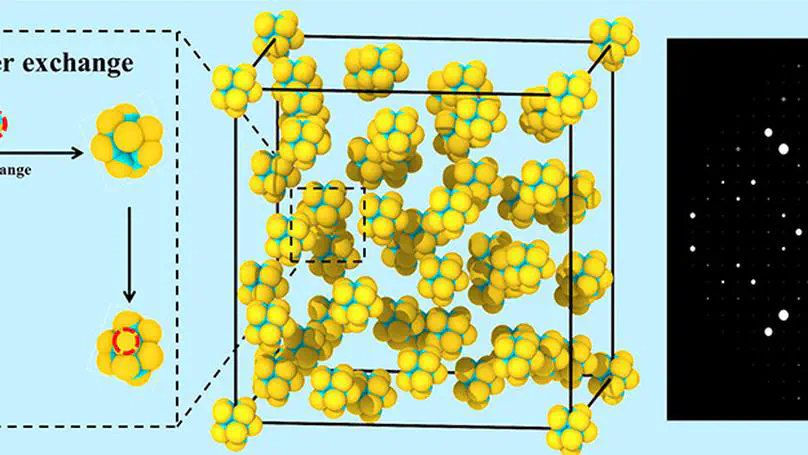
Designing complex cluster crystals with a specific function using simple colloidal building blocks remains a challenge in materials science. Herein, we propose a conceptually new design strategy for constructing complex cluster crystals via hierarchical self-assembly of simple soft Janus colloids. A novel and previously unreported colloidal cluster-χ (χc) phase, which resembles the essential structural features of α-manganese but at a larger length scale, is obtained through molecular dynamics simulations. The formation of the χc phase undergoes a remarkable two-step selfassembly process, that is, the self-assembly of clusters with specific size dispersity from Janus colloids, followed by the highly ordered organization of these clusters. More importantly, the dynamic exchange of particles between these clusters plays a critical role in stabilizing the χc phase. Such a conceptual design framework based on intercluster exchange has the potential to effectively construct novel complex cluster crystals by hierarchical self-assembly of colloidal building blocks.
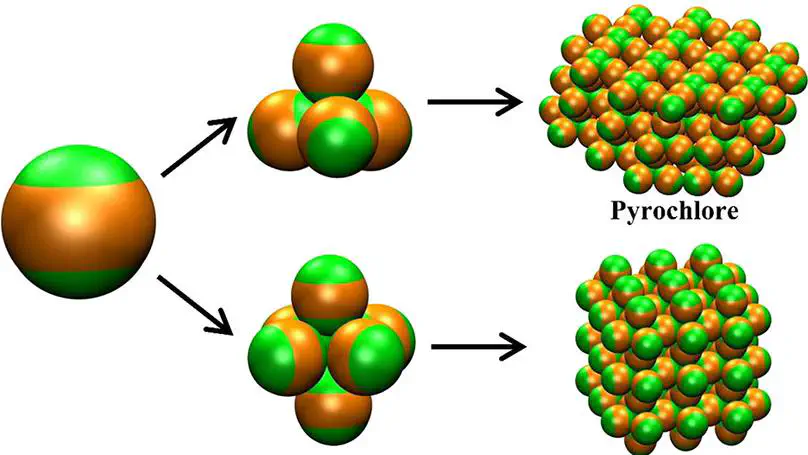
It remains extremely challenging to build three-dimensional photonic crystals with complete photonic bandgaps by simple and experimentally realizable colloidal building blocks. Here, we demonstrate that particle softness can enhance both the self-assembly of pyrochlore- and perovskite-like lattice structures from simple deformable triblock Janus colloids and their photonic bandgap performances. Dynamics simulation results show that the region of stability of pyrochlore lattices can be greatly expanded by appropriately increasing softness, and the perovskite lattices are unexpectedly obtained at enough high softness. Photonic calculations show that the direct pyrochlore lattices formed from overlapping soft triblock Janus particles exhibit even larger photonic bandgaps than the ideal nonoverlapping pyrochlore lattice, and proper overlap arising from softness can also dramatically improve the photonic properties of the inverse pyrochlore and perovskite lattices. Our study offers a new and feasible self-assembly path toward three-dimensional photonic crystals with large and robust photonic bandgaps.
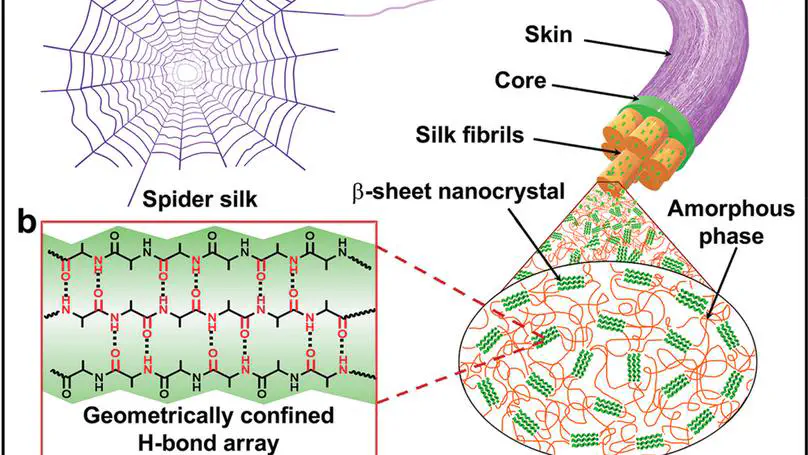
Spider silk is one of the most robust natural materials, which has extremely high strength in combination with great toughness and good elasticity. Inspired by spider silk but beyond it, a healable and recyclable supramolecular elastomer, possessing superhigh true stress at break (1.21 GPa) and ultrahigh toughness (390.2 MJ m−3), which are, respectively, comparable to and ≈2.4 times higher than those of typical spider silk, is developed. The elastomer has the highest tensile strength (ultimate engineering stress, 75.6 MPa) ever recorded for polymeric elastomers, rendering it the strongest and toughest healable elastomer thus far. The hyper-robust elastomer exhibits superb crack tolerance with unprecedentedly high fracture energy (215.2 kJ m−2) that even exceeds that of metals and alloys, and superhigh elastic restorability allowing dimensional recovery from elongation over 12 times. These extraordinary mechanical performances mainly originate from the meticulously engineered hydrogen-bonding segments, consisting of multiple acylsemicarbazide and urethane moieties linked with flexible alicyclic hexatomic spacers. Such hydrogen-bonding segments, incorporated between extensible polymer chains, aggregate to form geometrically confined hydrogen-bond arrays resembling those in spider silk. The hydrogen-bond arrays act as firm but reversible crosslinks and sacrificial bonds for enormous energy dissipation, conferring exceptional mechanical robustness, healability, and recyclability on the elastomer.
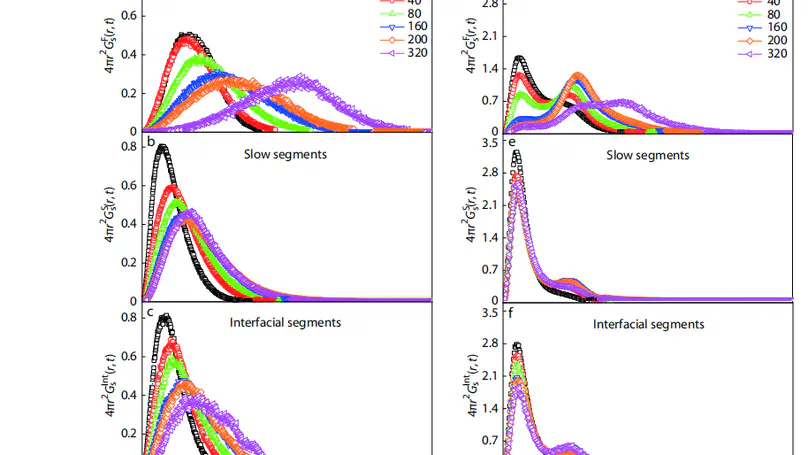
In this study, we investigate the motion of polymer segments in polymer/nanoparticle composites by varying nanoparticle (NP) volume fractions. By studying the probability distribution of segment displacement, segment trajectory, and the square displacement of segment, we find the intermittent motion of segments, accompanied with the coexistence of slow and fast segments in polymer nanocomposites (PNCs). The displacement distribution of segments exhibits an exponential tail, rather than a Gaussian form. The intermittent dynamics of chain segments is comprised of a long-range jump motion and a short-range localized motion, which is mediated by the weakly attractive interaction between NP and chain segment and the strong confinement induced by NPs. Meanwhile, the intermittent motion of chain segments can be described by the adsorption-desorption transition at low particle loading and confinement effect at high particle loading. These findings may provide important information for understanding the anomalous motion of polymer chains in the presence of NPs.
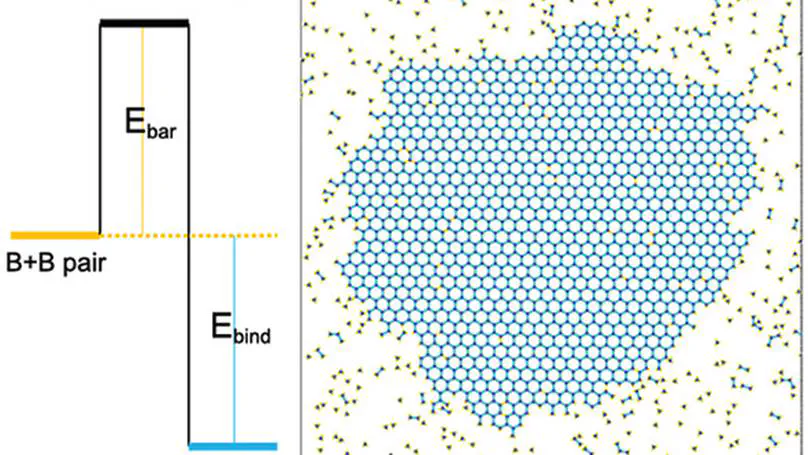
Reversible chemistries have been extensively explored to construct highly crystalline covalent organic frameworks (COFs) via defect correction. However, the mechanisms of defect correction that can explain the formation of products as single crystals, polycrystal/crystallites, or amorphous solids remain unknown. Herein, we employed molecular dynamics simulations combined with a polymerization model to investigate the growth kinetics of two-dimensional COFs. By virtue of the Arrhenius two-state model describing reversible reactions, we figured out the conditions in terms of active energy and binding energy for different products. Specifically, the ultraslow growth of COFs under high reversibility of reactions corresponding to low binding energies resulted in a single crystal by inhibiting the emergence of nuclei as well as correcting defects through continually dropping small defective fragments off at crystal boundaries. High bonding energies responsible for the high nucleation rate and rapid growth that incorporated defects in crystals and caused the division of crystals through defect correcting processes led to small crystallites or polycrystals. The insights into the mechanisms help us to understand and further control the growth kinetics by exploiting reversible conditions to synthesize COFs of higher quality.
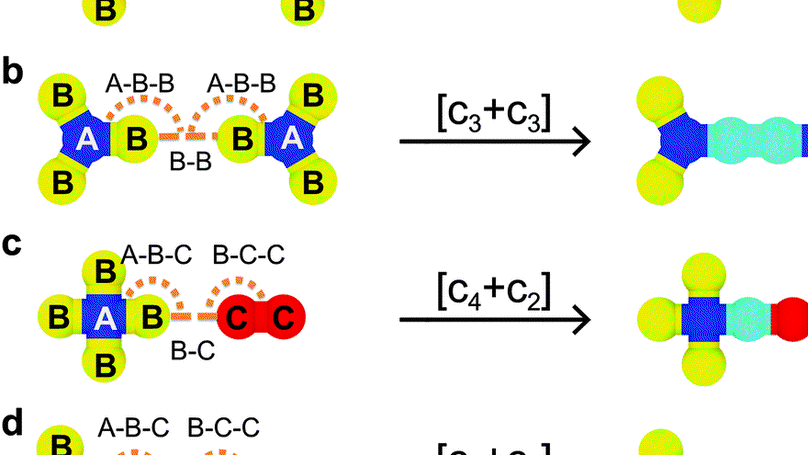
Synthesis of covalent organic frameworks with long-range molecular ordering is an outstanding challenge due to the fact that defects against predesigned topological symmetries are prone to form and break crystallization. The physical origins and controlling parameters of topological defects remain scarcely understood. By virtue of molecular dynamics simulations, we found that pentagons for combination [C4 + C4] and [C4 + C2] and heptagons for [C3 + C3] and [C3 + C2] were initial defects for growth dynamics with both uncontrolled and suppressed nucleation, further inducing more complex defects. The defects can be significantly reduced by achieving the growth with monomers added to a single nucleus, agreeing well with previous simulations and experiments. To understand the nature of defects, we proposed a parameter φ to describe the range of biased rotational angle between two monomers, within which chemical reactions are allowed. The parameter φ shows a monotonic relationship with defect population, which is demonstrated to be highly computable by using density functional theory calculations. When φ < 20, we can even observe defect-free growth for the four combinations, irrespective of growth dynamics. The results are essential for screening and designing condensation reactions for the synthesis of single crystals of high quality.
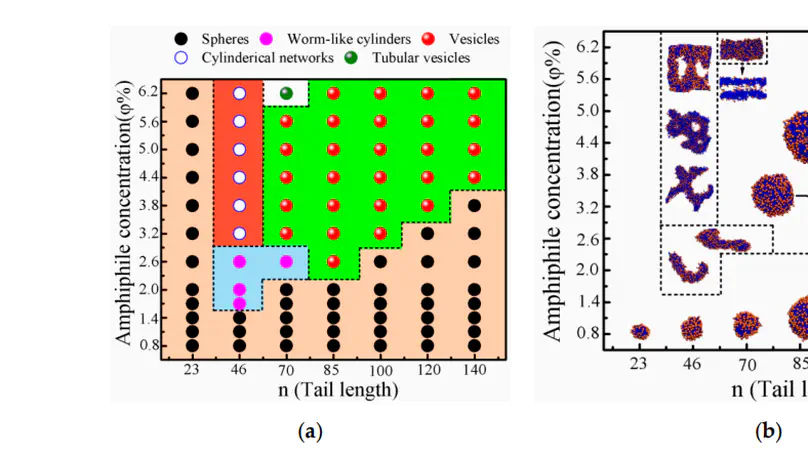
We systematically investigated the roles of tail length on the self-assembly of shape amphiphiles composed of a hydrophobic polymer chain (tail) and a hydrophilic nanoparticle in selective solvent using Brownian dynamics simulations. The shape amphiphiles exhibited a variety of self-assembled aggregate morphologies which can be tuned by changing tail length (n) in combination with amphiphile concentration (φ) and system temperature (T*). Specifically, at high φ with T*=1.4, the morphology varied following the sequence “spheres → cylinders → vesicles” upon increasing n, agreeing well with experimental observations. At low φ with T*=1.4 or at high φ with T*=1.2, the morphology sequence becomes “spheres or spheres and cylinders mixture → cylinders → vesicles → spheres” upon increasing n, which has not been found experimentally. Two morphological phase diagrams depending on n and φ were constructed for T*=1.4 and 1.2, respectively. The rich phase behaviors on varying tail length could provide the feasible routes to fabricate target aggregate morphologies in various applications, especially for the vesicles with tunable thickness of membranes that are crucial in drug and gene delivery.
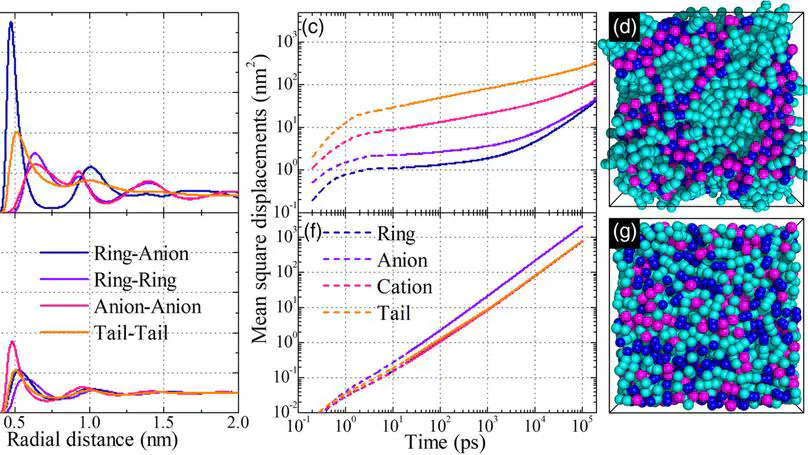
Computer simulations of model systems are widely used to explore striking phenomena in promising applications spanning from physics, chemistry, biology, to materials science and engineering. The long range electrostatic interactions between charged particles constitute a prominent factor in determining structures and states of model systems. How to efficiently calculate electrostatic interactions in simulation systems subjected to partial or full periodic boundary conditions has been a grand challenging task. In the past decades, a large variety of computational schemes has been proposed, among which the Ewald summation method is the most reliable route to accurately deal with electrostatic interactions between charged particles in simulation systems. In addition, extensive efforts have been done to improve computational efficiencies of the Ewald summation based methods. Representative examples are approaches based on cutoffs, reaction fields, multi‐poles, multi‐grids, and particle‐mesh schemes. We sketched an ENUF method, an abbreviation for the Ewald summation method based on the nonuniform fast Fourier transform technique, and have implemented this method in particle‐based simulation packages to calculate electrostatic energies and forces at micro‐ and mesoscopic levels. Extensive computational studies of conformational properties of polyelectrolytes, dendrimer‐membrane complexes, and ionic fluids demonstrated that the ENUF method and its derivatives conserve both energy and momentum to floating point accuracy, and exhibit a computational complexity of with optimal physical parameters. These ENUF based methods are attractive alternatives in molecular simulations where high accuracy and efficiency of simulation methods are needed to accelerate calculations of electrostatic interactions at extended spatiotemporal scales.
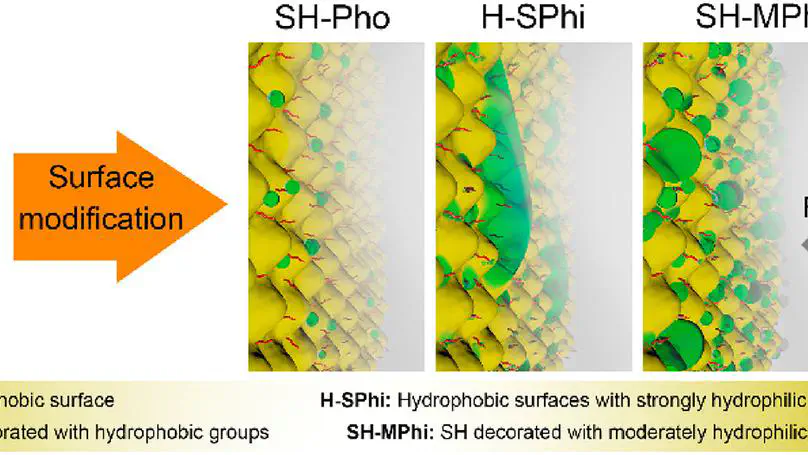
Inspired by the distinct functions of desert beetles with efficient droplet nucleation and lotus leaves with excellent droplet removal, an integrated method is presented for the design of a superhydrophobic surface decorated with hydrophilic groups that can efficiently nucleate and remove water droplets. We constructed a cellulose-based superhydrophobic surface containing numerous olefin terminal groups by solvent exchange and spray coating. This surface is different from most of the reported biomimicking water harvesting surfaces that rely on complicated lithography and micropatterning techniques requiring special instruments. The obtained superhydrophobic surface was further modified using various thiol compounds via a thiol–ene reaction to manipulate the water harvesting property. The modified surfaces containing hydrophobic groups (e.g., 1-octadecanethiol and 1H,1H,2H,2H-perfluorodecanethiol) or a strong hydrophilic group (e.g., 3-mercaptopropionic acid and 6-mercapto-1-hexanol) exhibited insufficient fog collecting abilities due to poor water droplet nucleation or strong water adhesion. By contrast, the modified surface decorated with moderately hydrophilic amino groups combines the advantages of biological surfaces with distinct wetting features (such as fog-harvesting beetles and water-repellent lotus leaves), resulting in accelerated water nucleation and less compromise of the water removal efficiency. Molecular dynamic simulations revealed that the efficient droplet nucleation is attributed to the hydrophilic amino groups whereas the rapid droplet removal is due to the maintained superhydrophobicity of the amino group-modified surface. This strategy of decorating a superhydrophobic surface with moderately hydrophilic functional groups provides insight into the manipulation of droplet nucleation and removal for water collection efficiency.
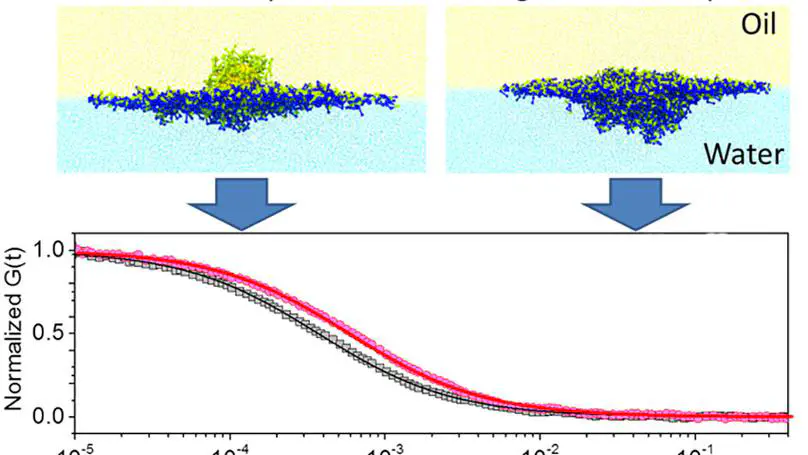
Janus nanoparticles could exhibit a higher interfacial activity and adsorb stronger to fluid interfaces than homogeneous nanoparticles of similar sizes. However, little is known about the interfacial diffusion of Janus nanoparticles and how it compares to that of homogeneous ones. Here, we employed fluorescence correlation spectroscopy to study the lateral diffusion of ligand-grafted Janus nanoparticles adsorbed at water/oil interfaces. We found that the diffusion was significantly slower than that of homogeneous nanoparticles. We carried out dissipative particle dynamic simulations to study the mechanism of interfacial slowdown. Good agreement between experimental and simulation results has been obtained only provided that the flexibility of ligands grafted on the nanoparticle surface was taken into account. The polymeric ligands were deformed and oriented at an interface so that the effective radius of Janus nanoparticles is larger than the nominal one obtained by measuring the diffusion in bulk solution. These findings highlight further the critical importance of the ligands grafted on Janus nanoparticles for applications involving nanoparticle adsorption at an interface, such as oil recovery or two-dimensional self-assembly.
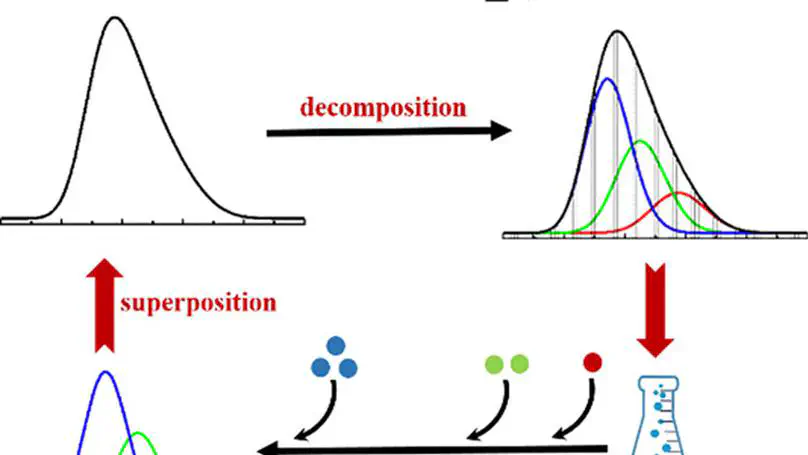
Synthesizing polymers with tailor-made molecular weight distribution (MWD) is an essential step toward better control and design of functional polymer materials. We propose a novel one-pot reaction strategy that can facilitate the inverse design of the shape, breadth, and skew of the MWD in a controlled polymerization. By a multistep initiator addition scheme that involves a sequence of addition operations with determined amounts of initiators and addition times, the polymers with target MWD can be possibly synthesized. This strategy is in principle suitable to reproduce most target MWDs, even with a multimodal profile or with large breadth and/or skew. As compared to previous relevant methods by blending polymers with determined molar masses and ratios, this one-pot reaction strategy avoids most of the tedious intermediate steps for controlling precision in blending and would be more convenient and timesaving. Our study supplies the inspiration of better control of synthesizing polymers with designated MWD in controlled polymerization.
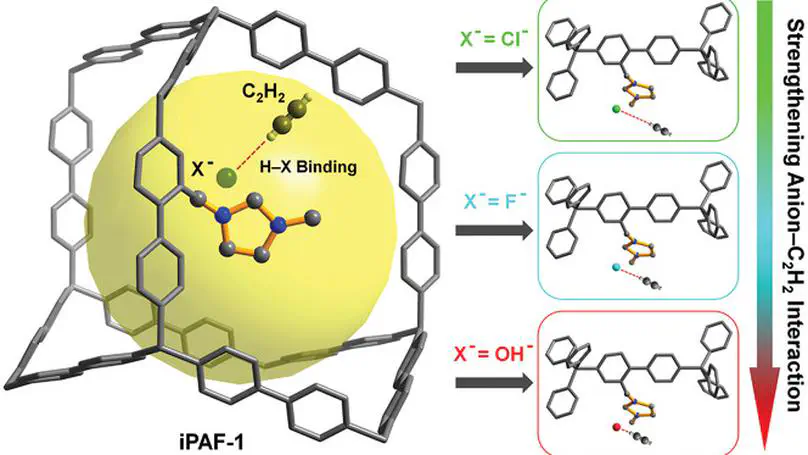
Precise tailoring of pore chemistry is indispensable for efficient membrane gas separation, particularly for the challenging acetylene system. Here, a strategy called “anion substitution” is reported, to strengthen the interaction between anions and acetylene within the pores, for radically improving gas selectivity and permeability. The anions F− and OH− are infixed in iPAF-1 to replace the original Cl− ion. Their small anionic radii allow retention of the original high porosity of iPAF-1-Cl in iPAF-1-F and iPAF-1-OH. Highly basic F− and OH− confined in the pores attract acidic acetylene strongly and preferentially. Nanoparticles of iPAF-1 are processed to form mixed matrix membranes, represented by iPAF-1-OH/6FDA-ODA. The prepared membranes exhibit remarkable performance in separating acetylene from ethylene and ethane. Transplantation of porous and functional iPAF-1-OH into 6FDA-ODA significantly enhances both acetylene permeability (sevenfold) and permselectivity (fivefold) for acetylene over ethylene and ethane, which is crucial for membrane acetylene gas separation.
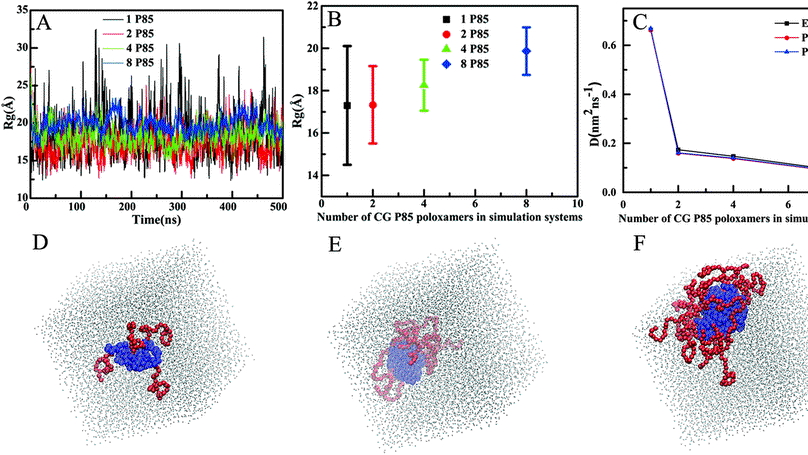
Polyethylene oxide (PEO) and poly(propylene oxide) (PPO), especially their tri-block copolymers PEO–PPO–PEO (poloxamers), have a broad range of applications in biotechnology and medical science. Understanding their specific interactions with biomembranes is the key to unveil the unique features of poloxamers either as membrane-healing or membrane pore-forming agents. Based on the coarse-graining convention of the MARTINI force field and the big multipole water (BMW) model, which has a three charged site topology and can reproduce the correct dipole moment of four-water clusters, we generated coarse-grained (CG) models with analytical and numerical potentials for PEO and PPO homopolymers and poloxamers in dilute solution. The effective bonded interaction potentials between CG beads were determined from the probability distributions of bond lengths, angles and dihedrals that are determined from atomistic simulations. The nonbonded interaction parameters were fine-tuned to reproduce the conformational properties of atomistic PEO and PPO homopolymers and poloxamers via extensive CG simulations of PEO and PPO homopolymers and poloxamers in a BMW water environment. The reported CG models provide a promising framework for a comprehensive understanding of the microstructural, conformational, and dynamic properties of poloxamers and their delicate interactions with other species in an explicit water environment.
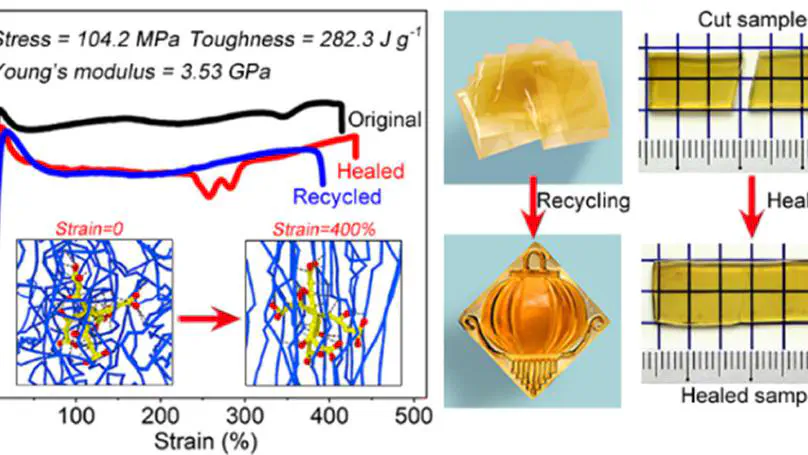
To build a sustainable society, it is of significant importance but highly challenging to develop remalleable, healable, and biodegradable polymeric materials with integrated high strength and high toughness. Here, we report a superstrong and ultratough sustainable supramolecular polymeric material with a toughness of ca. 282.3 J g–1 (395.2 MJ m–3) in combination with a tensile strength as high as ca. 104.2 MPa and a Young’s modulus of ca. 3.53 GPa. The toughness is even higher than that of the toughest spider silk (ca. 354 MJ m–3) ever found in the world, while the material also exhibits a superior tensile strength over most engineering plastics. This material is fabricated by topological confinement of the biodegradable linear polymer of poly(vinyl alcohol) (PVA) via the naturally occurring dendritic molecules of tannic acid (TA) based on high-density hydrogen bonds. Simply blending TA and PVA in aqueous solutions at acidic conditions leads to the formation of TA–PVA complexes as precipitates, which can be processed into dry TA–PVA composite products with desired shapes via the compression molding method. Compared to the conventional solution casting method for the fabrication of PVA-based thin films, the as-developed strategy allows large-scale production of bulk TA–PVA composites. The TA–PVA composites consist of interpenetrating three-dimensional supramolecular TA–PVA clusters. Such a structural feature, revealed by computational simulations, is crucial for the integrated superhigh strength and ultrahigh toughness of the material. The biodegradable TA–PVA composites are remalleable for multiple generations of recycling and healable after break, at room temperature, by the assistance of water to activate the reversibility of the hydrogen bonds. The TA–PVA composites show high promise as sustainable substitutes for conventional plastics because of their remalleability, healability, and biodegradability. The integrated superhigh strength and ultrahigh toughness of the TA–PVA composites ensure their high reliability and broad applicability.
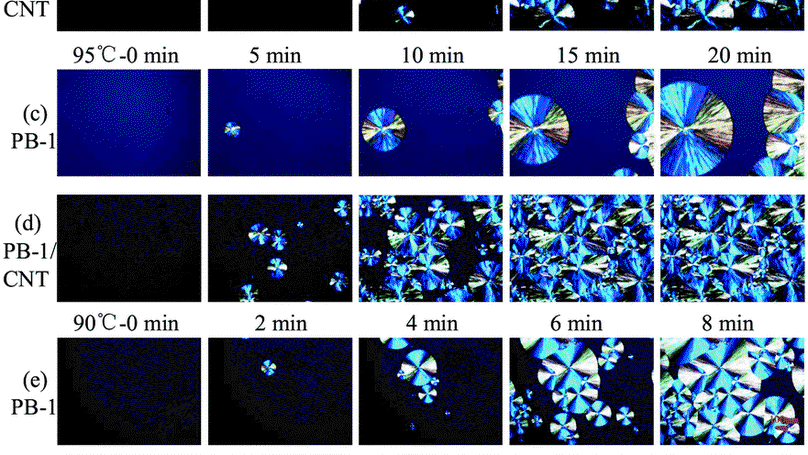
Probing the transformation from crystalline form II with 11/3 helical structure to form I with 3/1 helical structure in PB-1 and its nanocomposites is of great importance in both scientific fields and commercial applications. The influence of lamellar thickness on the transformation from form II to form I in isotactic polybutylene-1 (PB-1)/carbon nanotube (CNT) nanocomposites was investigated by differential scanning calorimetry (DSC), polarized optical microscopy (POM) and small-angle X-ray scattering (SAXS) techniques. The crystallization kinetics of PB-1/CNT nanocomposites at different isothermal temperatures (Tc) indicates that CNTs significantly accelerate the nucleation and growth of form II, acting as heterogeneous nucleating agents. However, the influence of CNTs on the form II–I transformation strongly depends on the lamellar thickness obtained at different Tc, verified by the change in melting point (Tm) and the SAXS results for form I. The addition of CNTs accelerates the transformation and elevates the Tm of form I when the Tc is lower than ∼88 °C, and slows the transformation and slightly decreases the Tm when the Tc is higher than ∼88 °C. This is probably due to the fact that the incorporation of CNTs facilitates an increase in lamellar thickness of form II formed at lower Tc but decreases the lamellar thickness of form II formed at higher Tc. Our study illustrates that the lamellar thickness is one of the key points to determine the transformation from form II to form I in PB-1.
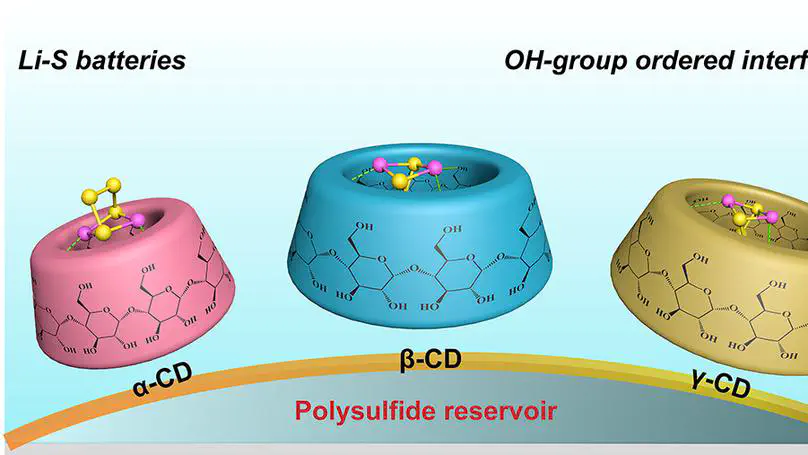
The rapid loss of active sulfur, because of a notorious effect of polysulfide shuttle, leads to a severe capacity fading in lithium–sulfur (Li–S) batteries. Although oxygen doping in cathodic materials is a promising strategy to enhance bonding interactions with lithium polysulfides, the origin of strong interactions remains to be poorly understood, because of a lack of consideration for the spatial arrangement of oxygen atoms affecting the overall performances. Here, we unveil the role of hydroxyl architecture on polysulfide trapping by systematically studying a series of cyclodextrin molecules that serve as a model platform, because of their well-defined structural uniqueness featuring abundant hydroxyl binding sites. We compare their trapping behaviors toward lithium polysulfides and thus correlate performance variations with their structural differences. Experimental findings coupled with computational modeling suggest that the asymmetrical arrangement of primary hydroxyl groups in β-CD determines the highest binding energies, relevant to the optimal capability in constraining polysulfide shuttle, and, in turn, contributes to remarkable improvements in the rate capacity and cycling performance. The identification of the role of hydroxyl architecture provides an atomic-scale explanation for the interaction between OH-group ordered interface and lithium polysulfides, and a new insight for the future design and engineering of interfaces in Li–S batteries.
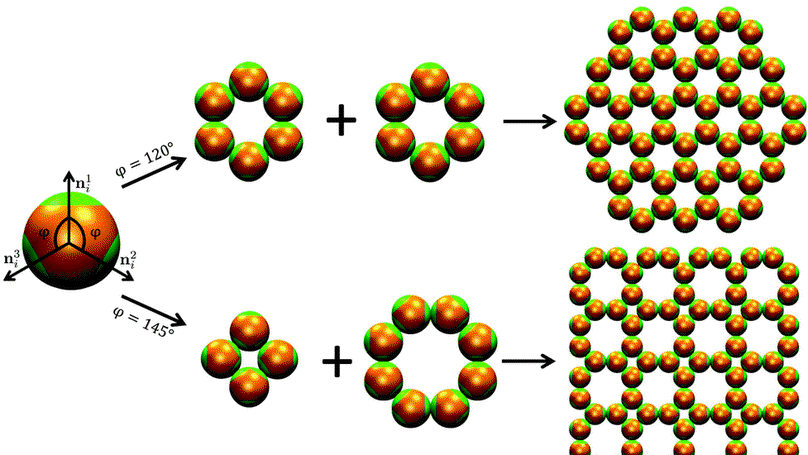
The design and discovery of new two-dimensional materials with desired structures and properties are always one of the most fundamental goals in materials science. Here we present an atom-mimicking design concept to achieve direct self-assembly of two-dimensional low-coordinated open lattices using three-dimensional patchy particle systems. Besides honeycomb lattices, a new type of two-dimensional square-octagon lattice is obtained through rational design of the patch configuration of soft three-patch particles. However, unexpectedly the building blocks with thermodynamically favoured patch configuration cannot form square-octagon lattices in our simulations. We further reveal the kinetic mechanisms controlling the formation of the honeycomb and square-octagon lattices. The results indicate that the kinetically favoured intermediates play a critical role in determining the structure of obtained open lattices. This kinetics-controlled design principle provides a particularly effective and extendable framework to construct other novel open lattice structures.
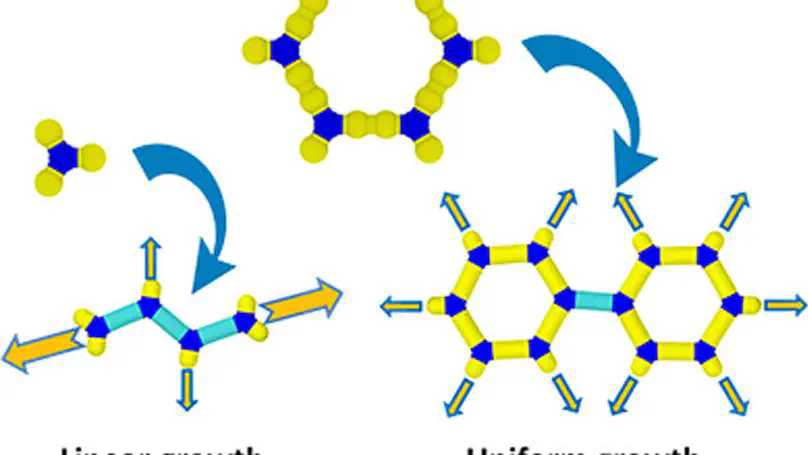
Polymerization of monomers into two-dimensional covalent organic frameworks with precise porous structures exhibits desired catalytic, gas separation, and optoelectronic properties. However, the defects arising from covalent bonding in a polymerization process always result in amorphous films with small crystalline domains or polycrystalline powders. It is still a tremendous challenge to synthesize high-quality crystalline products, even single crystals with a large size over the micrometer scale. In this work, we propose a general strategy of building block design to reduce the defects during growth of two-dimensional covalent organic frameworks. We demonstrate that the building block with a hexagonal pore unit, i.e., a hexamer, could greatly decrease defects by directional uniform growth in polymerization, while monomer, dimer, and trimer building blocks form more defects due to linear growth. Our work provides a new strategy to construct superlarge single crystals in practical applications by combining building block design and growing dynamics control.
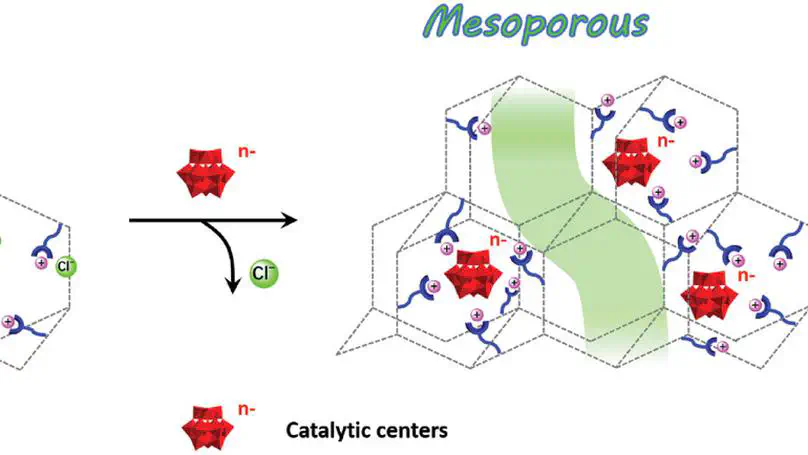
Compositional catalysts based on porous supports and incorporated catalytic nanoparticles have achieved great successes during the past decades. However, rational design of synergic catalysts and modulating the interactions between functional supports and catalytic sites are still far from being well developed. In this work, aiming at overcoming the difficulties of comprehensive screening of porous supports and correspondingly matched catalytic sites, a cationic porous aromatic framework as a capturing platform and polyoxometalate anions as conversion materials are separately designed, and their combination is modularly controlled. The resulting composites show higher catalytic activities than the corresponding conversion sites themselves. Notably, the resulting composites uncommonly exhibit increased surface area and enlarged pore openings after the incorporation of nanoparticles, and lead to the promotion of mass transfer within the porous supports. The emergence of a hierarchical structure with increased surface area induced by guest loading is desired in heterogeneous catalysis. The reciprocal modulation of both capture and conversion materials results in enhanced conversion and increased reaction rate, indicating the successful preparation of synergic catalysts by this separate design approach.
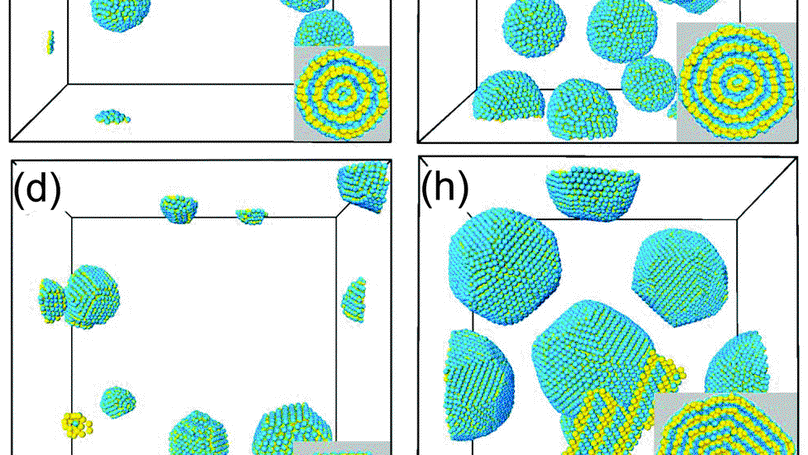
Synthetic vesicles of amphiphilic Janus dendrimers are known as dendrimersomes. The understanding of the conditions and formation mechanism of dendrimersomes is meaningful for further controlling the structures. Herein, the characteristics of the self-assembly of amphiphilic Janus dendrimer/water solutions into unilamellar and onion-like dendrimersomes are studied by molecular dynamics simulations via a spherical single-site Janus particle model. The model with two distinct surfaces, one hydrophobic side and another hydrophilic side, describes the amphiphilic nature of Janus dendrimers. By reducing the dendrimers with complex architectures to be simple Janus particles, we investigate the concentration-dependent self-assembled structures as well as the enthalpy-driven formation process of onion-like dendrimersomes, in contrast to the entropy-mediated self-assembly of amphiphilic flexible chains. Three typical equilibrium morphologies including linear micelles, lamellar structures and vesicles are found upon varying the Janus balance and dendrimer concentration. It is observed that the dendrimersomes consisting of the dendrimers with neglectable molecular configuration entropy become very stable, which agrees well with experimental observation. Specifically, different from many lipidsomes and polymersomes which can spontaneously merge, the size of dendrimersomes will not increase through mutual fusion once the well-defined onion-like structure is formed. Moreover, the discharge of water is achieved by water diffusion in our simulations, instead of in the “peeling-one-onion-layer-at-a-time” fashion. Our study combined with the previous ones using flexible chain models could depict a complete picture of dendrimersomes in favor of their applications in drug and gene delivery.
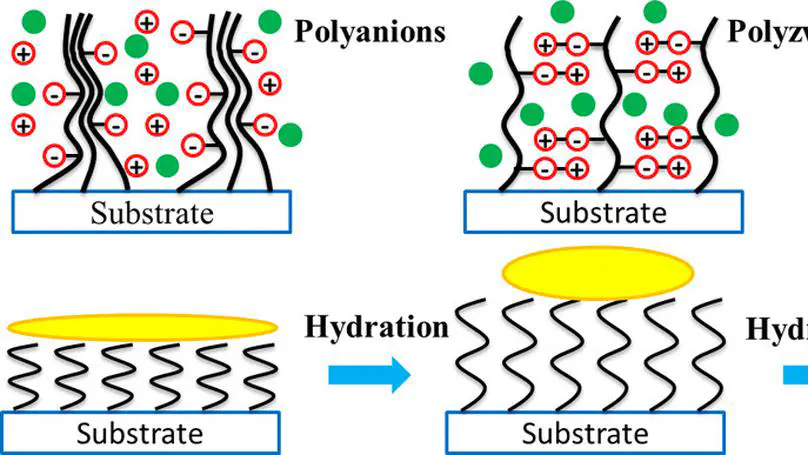
The capability of polyelectrolyte brushes to spontaneously clean oil fouling via water is determined by factors including water wettability and the self-assembled structures of hydrated polyelectrolytes. Although the charged groups of polyelectrolytes provide the original source of water wettability, the self-assembled structures play a significant role in the self-cleaning performances. Here, we employ coarse-grained molecular dynamics simulations to study the general self-cleaning characteristics of two types of surface-grafted polyelectrolyte brushes (i.e., zwitterionic and anionic polyelectrolytes). It has been found that the high grafting density is favorable to fouling reduction for both polyzwitterions and polyanions. To be specific, the hydrated polyzwitterions form an intermolecular cross-linked network via zwitterionic complexes, resulting in better self-cleaning capabilities than the polyanions at lower grafting densities. However, polyanions form bundles with each consisting of several chains via hydrophobic interactions and electrostatic repulsions presenting better self-cleaning performances than the polyzwitterions at higher grafting densities.
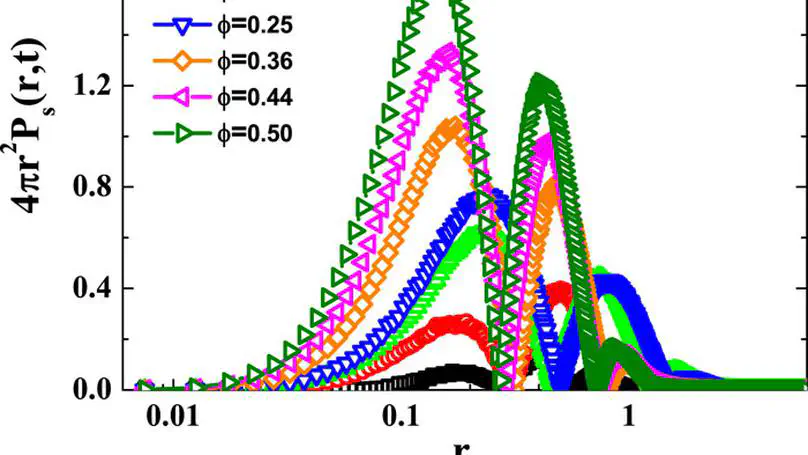
We present a systematic investigation on the effect of adding nanoparticles on the dynamics of polymer chains by using coarse-grained molecular dynamics simulation. The dynamics is characterized by three aspects:molecular motion, relaxation at different length scales, and dynamical heterogeneity. It is found that the motion of polymer chains slows down and the deviation from Gaussian distribution becomes more pronounced with increasing nanoparticle volume fractions. For polymer nanocomposites with R ≤ Rg, the relaxation at the wave vector q = 7.0 displays multistep decay, consistent with the previous reports in strongly interacting polymer nanocomposites. Moreover, a qualitatively universal law is established that dynamic heterogeneity at whole chain’s scale follows a nonmonotonic increase with increasing nanoparticle loadings, where the volume fraction of the maximum dynamic heterogeneity corresponds to the particle loading when the average distance between nanoparticles is equal to the Kuhn length of polymer chains. We show that the decoupling between whole chain’s dynamics and segment dynamics is responsible for the nonmonotonic behavior of dynamic heterogeneity of whole chains.
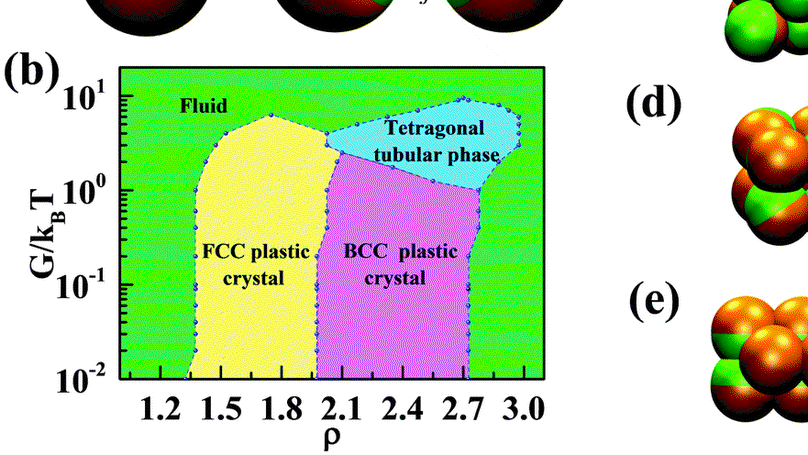
We perform dynamics simulations to investigate the translational and rotational glassy dynamics in a glass-forming liquid of monodisperse soft Janus particles. We find that, with decreasing temperature, the mean-square angular displacement shows no clear plateau in the caging region, in contrast with the apparent caging behavior of translational motion. By defining a reorientational mean-square angular displacement, the caging behavior of rotational motion can be recognized. On approaching the glass transition (decreasing temperature), the coupling between translational and rotational relaxation increases, while the coupling between translational and rotational diffusion decreases, whereas the coupling between translational and reorientational diffusion increases. The strong decoupling between translational and rotational diffusion is due to the suppressed translational mobility but promoted rotational mobility of soft Janus particles. We think that the low-T SE and SED decoupling is mainly attributed to hopping motion of soft Janus particles, whereas the high-T SE and SED decoupling is mainly attributed to collective cage motion of soft Janus particles. Our results demonstrate that interaction anisotropy has a critical effect on the translational and rotational dynamics of soft Janus particles.
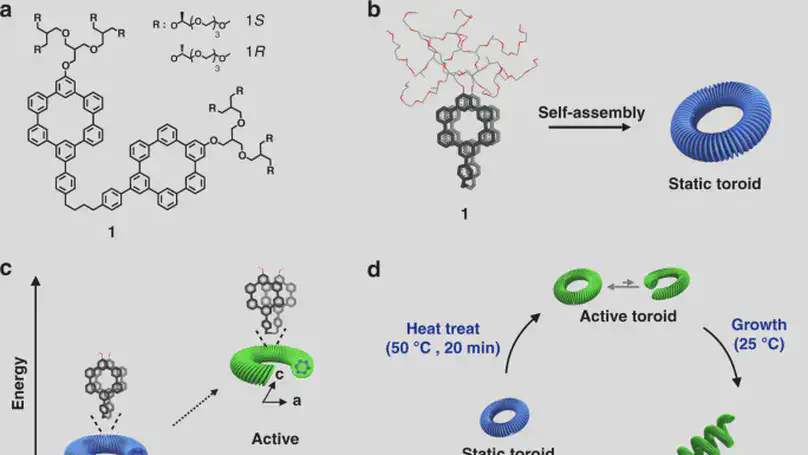
Self-assembly in nature is fundamentally dynamic, existing in out-of-equilibrium state in which the systems have the ability to autonomously respond to environmental changes. However, artificial systems exist in a global minimum state, which are incapable of conducting such complex functions. Here we report that input of thermal energy can trigger fixed, artificial toroids to spontaneously nucleate helical growth. The helical polymerization undergoes reversible and repeatable cycles with subsequent energy input. When the toroids are located inside lipid vesicles, the polymerization-depolymerization cycle is accompanied by reversible elongation of spherical vesicles. Such liberation from a global minimum state will pave the way to create emergent structures with functions as complex as those of living systems.
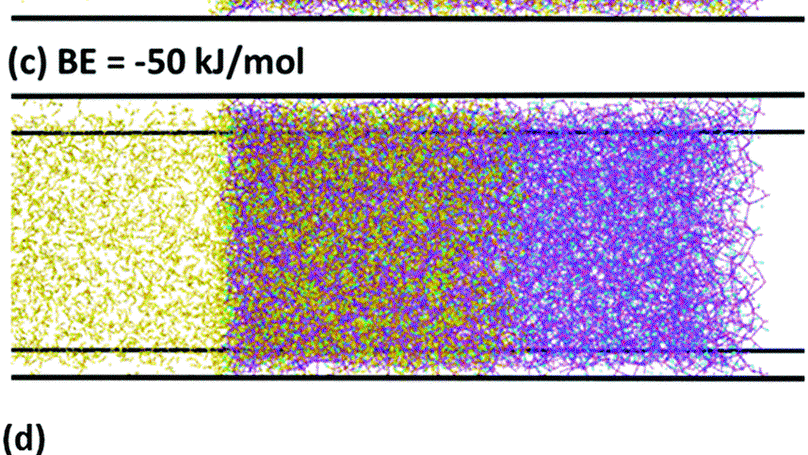
An ionic porous aromatic framework, iPAF-1, was successfully synthesized from a designed monomer with imidazolium functional groups. The iPAF-1 exhibits the highest dibenzothiophene uptake among all reported adsorptive desulphurization adsorbents. The so-called precursor designed synthetic route provides the stoichiometric and homogeneous introduction of desired functional groups into the framework. Molecular dynamics simulation was performed to understand the structure and the desulphurization process within the amorphous iPAF-1. The insight into the key role of the moderate bonding interaction between the adsorbate and the functional groups of iPAF-1 for improved uptake is highlighted in this work.
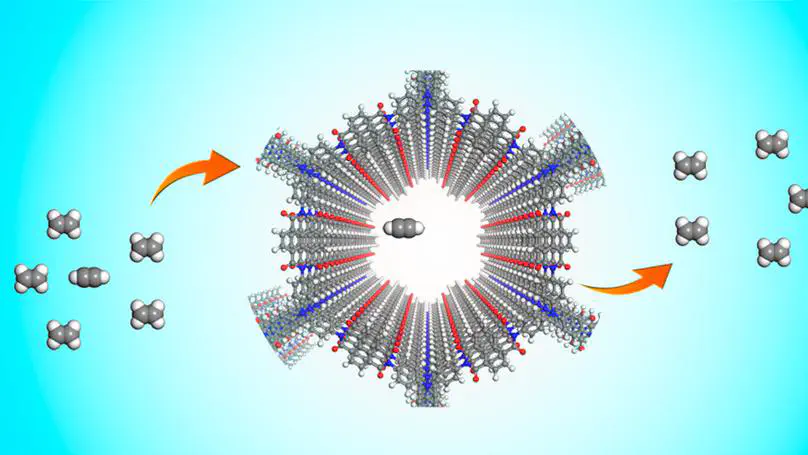
The separation of acetylene from ethylene is a crucial process in the petrochemical industry, as even small acetylene impurities can lead to premature termination of ethylene polymerization. Herein, we present the synthesis of a robust, crystalline naphthalene diimide porous aromatic framework via imidization of linear naphthalene-1,4,5,8-tetracarboxylic dianhydride and triangular tris(4-aminophenyl)amine. The resulting material, PAF-110, exhibits impressive thermal and long-term structural stability, as indicated by thermogravimetric analysis and powder X-ray diffraction characterization. Gas adsorption characterization reveals that PAF-110 has a capacity for acetylene that is more than twice its ethylene capacity at 273 K and 1 bar, and it exhibits a moderate acetylene selectivity of 3.9 at 298 K and 1 bar. Complementary computational investigation of each guest binding in PAF-110 suggests that this affinity and selectivity for acetylene arises from its stronger electrostatic interaction with the carbonyl oxygen atoms of the framework. To the best of our knowledge, PAF-110 is the first crystalline porous organic material to exhibit selective adsorption of acetylene over ethylene, and its properties may provide insight into the further optimized design of porous organic materials for this key gas separation.
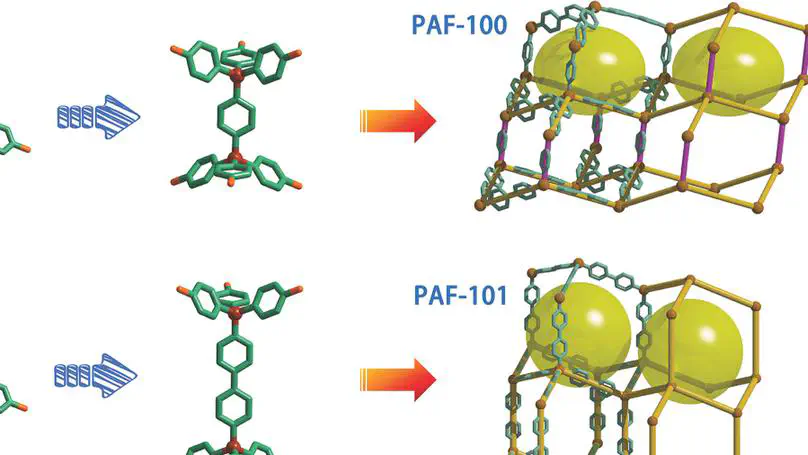
The construction of excellent porous organic frameworks (POFs) with high surface areas and stability is always a tremendous challenge in synthetic chemistry. The geometric configuration and reactive group of building unit are crucial factors to influence the structure and porosity of the resulting product. Herein, the design, synthesis, and characterization of two porous aromatic framework (PAF) materials, named PAF-100 and PAF-101, are reported via a strategy of building unit engineering. PAF-100 and PAF-101 present high Brunauer–Emmett–Teller surface areas exceeding 5000 m2 g−1 and uniform pore size distributions. Furthermore, PAF-100 and PAF-101 show high methane uptake with value of 742 and 622 cm3 g−1, respectively, at 298 K and 70 bar. The successful synthesis of PAFs with exceptional porosity from engineered building unit is powerful for constructing highly porous POFs.
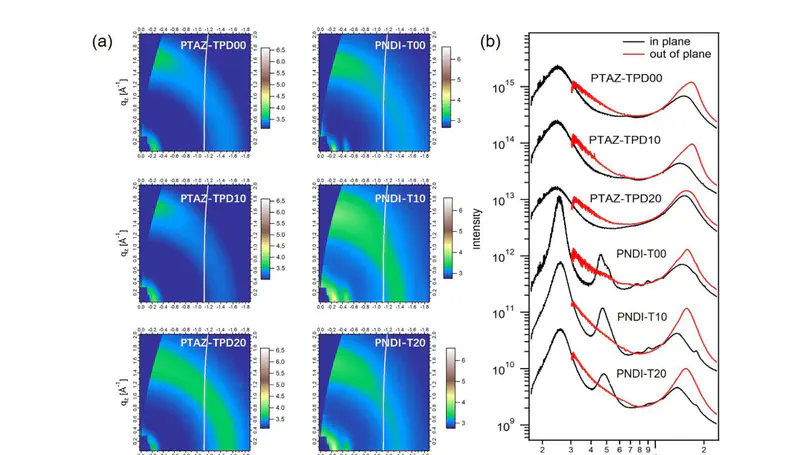
All-polymer solar cells (APSCs), composed of semiconducting donor and acceptor polymers, have attracted considerable attention due to their unique advantages compared to polymer-fullerene-based devices in terms of enhanced light absorption and morphological stability. To improve the performance of APSCs, the morphology of the active layer must be optimized. By employing a random copolymerization strategy to control the regularity of the backbone of the donor polymers (PTAZ-TPDx) and acceptor polymers (PNDI-Tx) the morphology can be systematically optimized by tuning the polymer packing and crystallinity. To minimize effects of molecular weight, both donor and acceptor polymers have number-average molecular weights in narrow ranges. Experimental and coarse-grained modeling results disclose that systematic backbone engineering greatly affects the polymer crystallinity and ultimately the phase separation and morphology of the all-polymer blends. Decreasing the backbone regularity of either the donor or the acceptor polymer reduces the local crystallinity of the individual phase in blend films, affording reduced short-circuit current densities and fill factors. This two-dimensional crystallinity optimization strategy locates a PCE maximum at highest crystallinity for both donor and acceptor polymers. Overall, this study demonstrates that proper control of both donor and acceptor polymer crystallinity simultaneously is essential to optimize APSC performance.
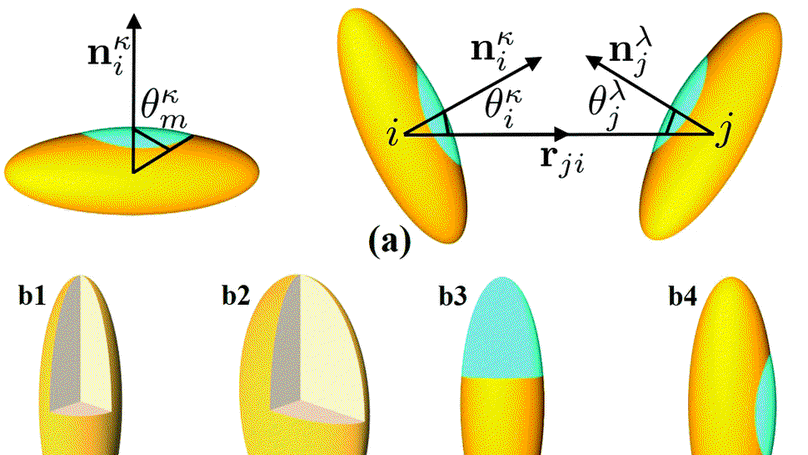
We present a general patchy ellipsoidal particle model suitable for conducting dynamics simulations of the aggregation behaviors of various shape- and/or surface-anisotropic colloids, especially patchy ellipsoids with continuously variable shape and tunable patchiness. To achieve higher computational efficiency in dynamics simulations, we employ a multi-GPU acceleration technique based on a domain decomposition algorithm. The validation and performance evaluation of this GPU-assisted model are performed by simulating several typical benchmark systems of non-patchy and patchy ellipsoids. Given the generality and efficiency of our GPU-assisted patchy ellipsoidal particle model, it will provide a highly feasible dynamics simulation framework to investigate the aggregation behaviors of anisotropic soft matter systems comprised of shape- and/or surface-anisotropic building blocks.
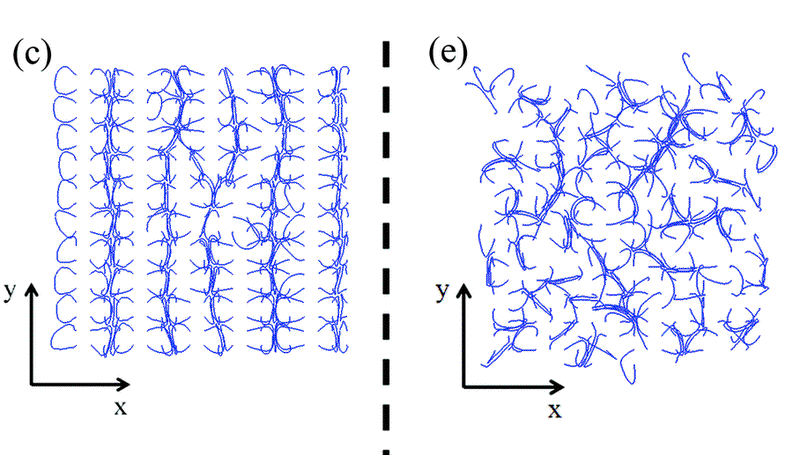
We develop and test specific coarse-grained models for charged amphiphilic systems such as palmitoyloleoylphosphatidylglycerol (POPG) lipid bilayer and sodium dodecyl sulfate (SDS) surfactant in an aqueous environment, to verify the ability of the hybrid particle-field method to provide a realistic description of polyelectrolytes. According to the hybrid approach, the intramolecular interactions are treated by a standard molecular Hamiltonian, and the nonelectrostatic intermolecular forces are described by density fields. Electrostatics is introduced as an additional external field obtained by a modified particle-mesh Ewald procedure, as recently proposed [Zhu et al. Phys. Chem. Chem. Phys. 2016, 18, 9799]. Our results show that, upon proper calibration of key parameters, electrostatic forces can be correctly reproduced. Molecular dynamics simulations indicate that the methodology is robust with respect to the choice of the relative dielectric constant, yielding the same correct qualitative behavior for a broad range of values. In particular, our methodology reproduces well the organization of the POPG bilayer, as well as the SDS concentration-dependent change in the morphology of the micelles from spherical to microtubular aggregates. The inclusion of explicit electrostatics with good accuracy and low computational cost paves the way for a significant extension of the hybrid particle-field method to biological systems, where the polyelectrolyte component plays a fundamental role for both structural and dynamical molecular properties.
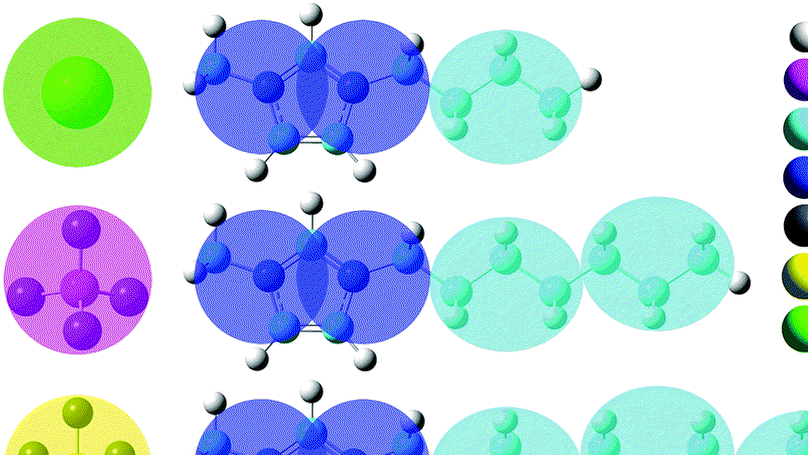
Computer simulations provide a unique insight into the microscopic details, molecular interactions and dynamic behavior responsible for many distinct physicochemical properties of ionic liquids. Due to the sluggish and heterogeneous dynamics and the long-ranged nanostructured nature of ionic liquids, coarse-grained meso-scale simulations provide an indispensable complement to detailed first-principles calculations and atomistic simulations allowing studies over extended length and time scales with a modest computational cost. Here, we present extensive coarse-grained simulations on a series of ionic liquids of the 1-alkyl-3-methylimidazolium (alkyl = butyl, heptyl-, and decyl-) family with Cl, [BF4], and [PF6] counterions. Liquid densities, microstructures, translational diffusion coefficients, and re-orientational motion of these model ionic liquid systems have been systematically studied over a wide temperature range. The addition of neutral beads in cationic models leads to a transition of liquid morphologies from dispersed apolar beads in a polar framework to that characterized by bi-continuous sponge-like interpenetrating networks in liquid matrices. Translational diffusion coefficients of both cations and anions decrease upon lengthening of the neutral chains in the cationic models and by enlarging molecular sizes of the anionic groups. Similar features are observed in re-orientational motion and time scales of different cationic models within the studied temperature range. The comparison of the liquid properties of the ionic systems with their neutral counterparts indicates that the distinctive microstructures and dynamical quantities of the model ionic liquid systems are intrinsically related to Coulombic interactions. Finally, we compared the computational efficiencies of three linearly scaling O(N log N) Ewald summation methods, the particle–particle particle–mesh method, the particle–mesh Ewald summation method, and the Ewald summation method based on a non-uniform fast Fourier transform technique, to calculate electrostatic interactions. Coarse-grained simulations were performed using the GALAMOST and the GROMACS packages and hardware efficiently utilizing graphics processing units on a set of extended [1-decyl-3-methylimidazolium][BF4] ionic liquid systems of up to 131 072 ion pairs.
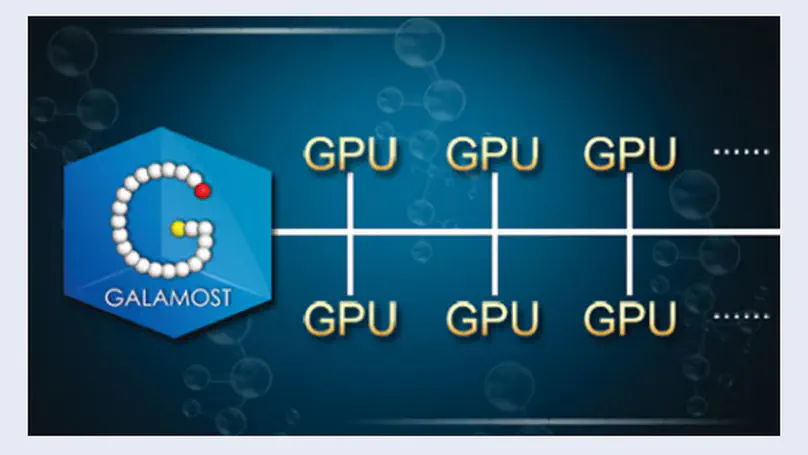
We describe the algorithm of employing multi-GPU power on the basis of Message Passing Interface (MPI) domain decomposition in a molecular dynamics code, GALAMOST, which is designed for the coarse-grained simulation of soft matters. The code of multi-GPU version is developed based on our previous single-GPU version. In multi-GPU runs, one GPU takes charge of one domain and runs single-GPU code path. The communication between neighbouring domains takes a similar algorithm of CPU-based code of LAMMPS, but is optimised specifically for GPUs. We employ a memory-saving design which can enlarge maximum system size at the same device condition. An optimisation algorithm is employed to prolong the update period of neighbour list. We demonstrate good performance of multi-GPU runs on the simulation of Lennard–Jones liquid, dissipative particle dynamics liquid, polymer and nanoparticle composite, and two-patch particles on workstation. A good scaling of many nodes on cluster for two-patch particles is presented.
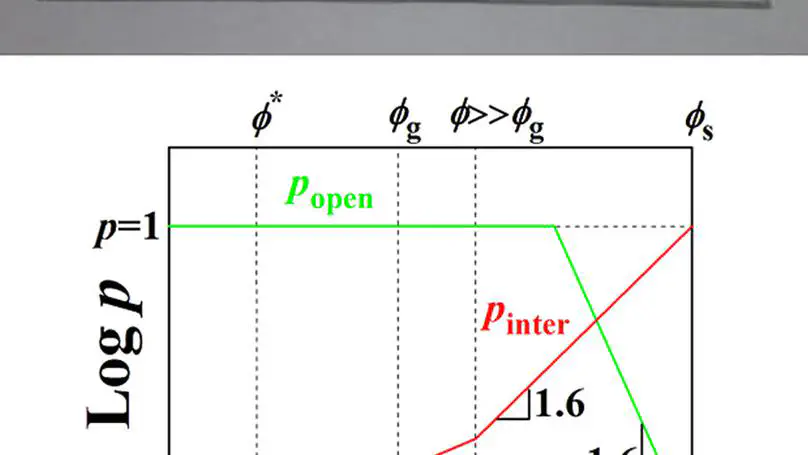
An associating polymer generally contains a small fraction of strongly interacting groups that can form stable aggregates. In this study, a novel soluble polyimide (PI) (6FDA-TFDB) sample with high molecular weight is synthesized; it contains a large fraction of relatively weak interacting groups. Investigation on the solution property and scaling law relationship between h0-hs and volume fraction shows that this sample exhibits the behavior of associating polymer; this behavior fits the theory of unrenormalized sticky Rouse model and sticky reptation model in a broad volume fraction region, and the scaling exponents in different volume fraction ranges and the critical volume fractions are determined. Moreover, when the volume fraction is above f* (overlap volume fraction), abnormal shear thinning phenomenon occurs. Oscillation frequency experiment for concentrated polyimide solutions demonstrates that the polyimide solution tends to become a gel above the critical volume fraction due to numerous weak dipole-dipole and p-p interactions. In the UVeVis spectra, absorption peak shows a red shift with volume fraction, demonstrating that aggregates form in concentrated polyimide solution. Synchrotron radiation small-angle X-ray scattering (SAXS) experiment reveals the appearance of domain, which comes from the aggregates of PI segments. Finally, combined with the quantum chemical calculation, one model based on relatively weak interaction (i.e., dipole-dipole and p-p interactions) from chemical units of polyimides is proposed to explain the associating behavior of high molecular weight polyimide in solution and the shear thinning phenomenon. This study broadens the range of associating polymers.
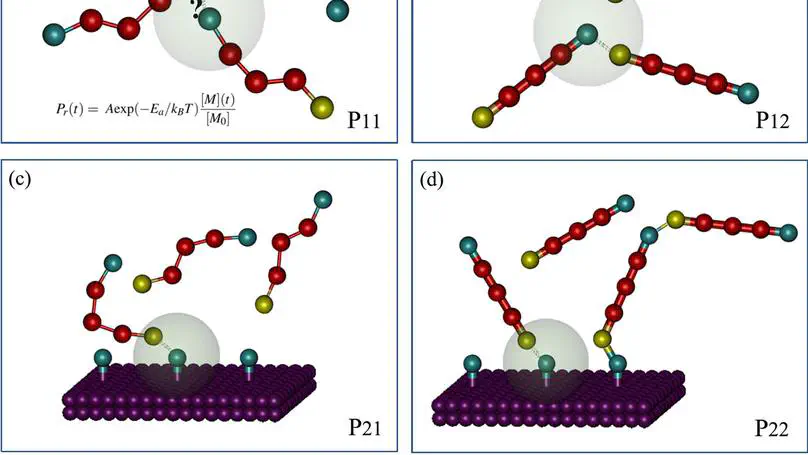
Kinetic step-growth polymerization is studied by dissipative particle dynamics coupled with our previously developed reaction algorithm on a coarse-grained level. The simulation result proves that this step-growth polymerization obeys the second-order reaction kinetics. We apply this algorithm to study the step-growth polymerization using the subunits with different flexibilities or within confinement. Good agreement of the number fraction distributions with the Flory distribution is obtained, implying that this algorithm is reasonable to describe such a kind of step-growth polymerization. This algorithm can further supply a convenient platform for simulating typical step-growth polymerization in reactive polymer systems.
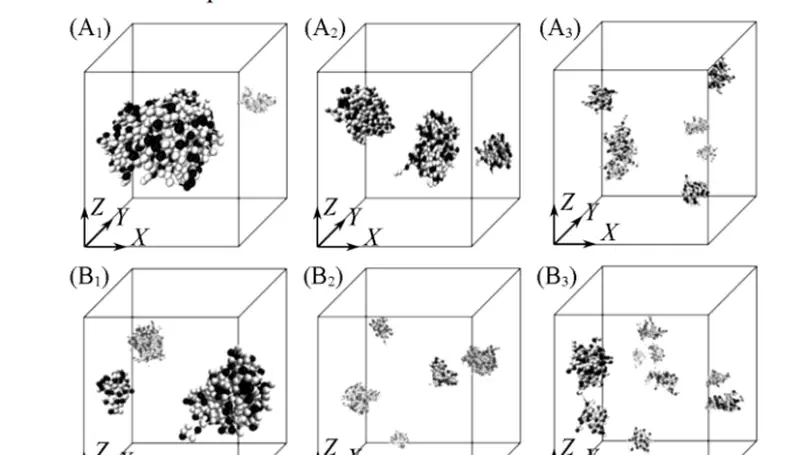
We present a computer simulation study on the nonwettability of a flat surface tethered with deformable looped polymer chains. Two kinds of loops are studied:monodispersed loops (loops with the same length) and polydispersed loops (loops with different lengths). Both kinds of loops include two arrangements:with regularly tethered sites and with randomly tethered sites. Regularly grafted loops form typical grooves on the surface, while randomly grafted loops form a more rugged surface. For monodispersed loops, we analyze the factors that influence the nonwettability when varying the rigidity of the loops. The loops are divided into two categories based on their rigidity according to our previous analysis procedure (Phys. Chem. Chem. Phys., 2016, 18, 18767–18775):rigid loops and flexible loops. It is found that the loop can partially form a re-entrant-like structure, which is helpful to increase the nonwettability of the surface. The surfaces with grafted loops have increased nonwettability, especially those grafted with flexible chains. However, the contact angle on the loop structure cannot further increase for the rigid chains due to a large top layer density (Phys. Chem. Chem. Phys., 2016, 18, 18767–18775). For polydispersed loops, the contact angle is highly related to the rigidity of the long loops that contact the droplet. Different from monodispersed loops, the mechanism of the nonwettability of polydispersed loops is attributed to the supporting ability (rigidity) of long loops.
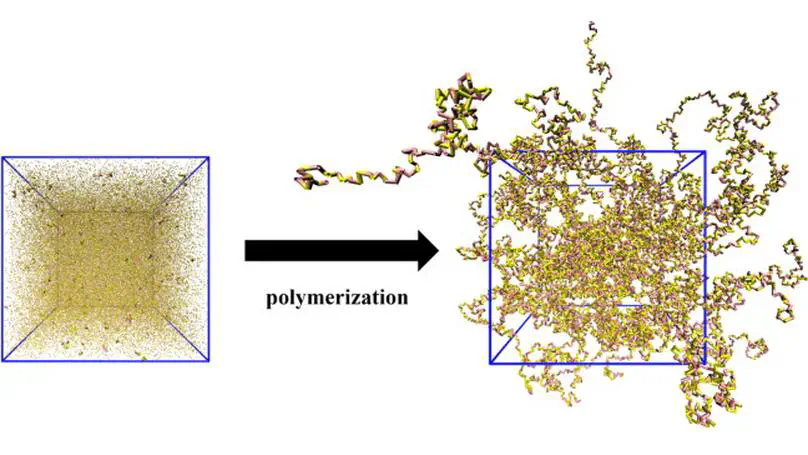
Chiral helical structures have attracted increasing attention in the field of supramolecular assembly because of their critical roles in life and material sciences. In this research, the achiral amphiphile 1-[11-(2-anthracenylmethoxy)-11-oxoundecyl]pyridinium bromide (2-APB), in which the hydrophobic anthracene and the hydrophilic pyridinium units are linked by alkyl chains, was found to form chiral supramolecular assemblies in a cooperative manner in the presence of iodide anion. Moreover, these assemblies show left (L)- or right (R)-handedness randomly, independent of the assembly conditions. By using the same method, 2-APB could assemble together with other pseudo-halogen anions (OCN−, SCN−, SeCN−) that have similar anionic radius as iodide to form chiral structures. This work illustrates a simple and rational design that can be used to fabricate supramolecular chiral structures from achiral molecules.
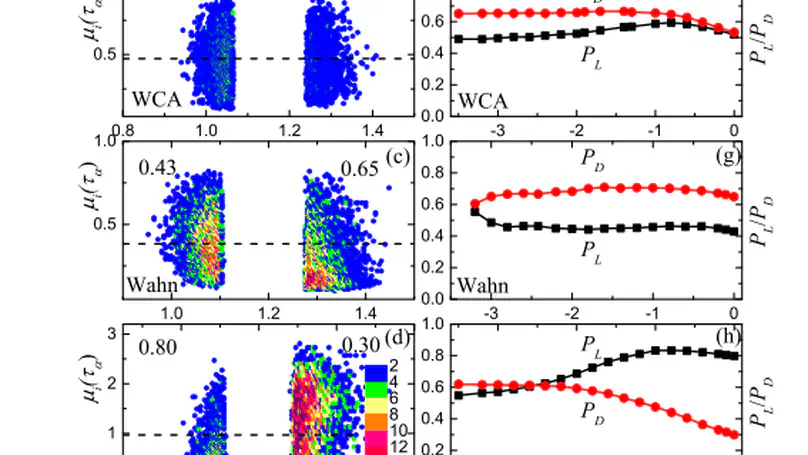
In this work, by using coarse-grained molecular dynamics simulations, we found that poly(2-methacryloyloxyethyl phosphorylcholine)(PMPC) showed a strong solubility and a so-called antipolyelectrolyte effect(APE) in water. In contrast, obvious aggregations but no APE were found in n-butyl-substituted choline phosphate polymers(PMBP) solutions. The underlying mechanisms for different solution behaviors of PMPC and PMBP were investigated in detail. Our results indicate that the presence of butyl groups in PMBP enhances both the electrostatic interactions and the hydrophobicity of PMBP molecules in the system. Both factors were found to contribute to the formations of aggregates in the PMBP system. Further researches revealed that hydrophobicity arising from the butyl group plays a more important role than electrostatic interactions in inducing the PMBP aggregation. In addition, the strong hydrophobicity in PMBP was found to be responsible for the absence of APE. These results are expected to contribute to a better understanding and a better design of the solution properties of polyzwitt erions.
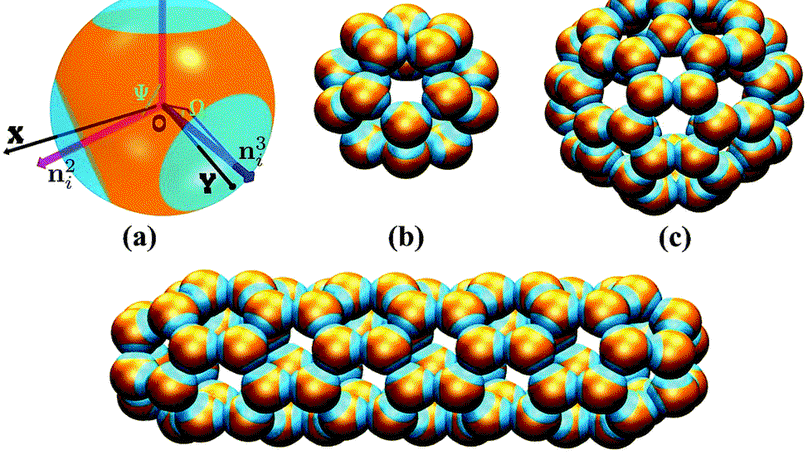
We numerically investigate the connection between spatial density correlation and dynamical heterogeneity in glass-forming liquids. We demonstrate that the cluster size defined by the spatial aggregation of densely packed particles (DPPs) can better capture the difference between the dynamics of the Lennard-Jones glass model and the Weeks-Chandler-Andersen truncation model than the commonly used pair correlation functions. More interestingly, we compare the mobility of DPPs and loosely packed particles, and we find that high local density correlates well with slow dynamics in systems with relatively hard repulsive interactions but links to mobile ones in the system with soft repulsive interactions at one relaxation time scale. Our results show clear evidence that the above model dependence behavior stems from the hopping motion of DPPs at the end of the caging stage due to the compressive nature of soft repulsive spheres, which activates the dynamics of DPPs in the α relaxation stage.
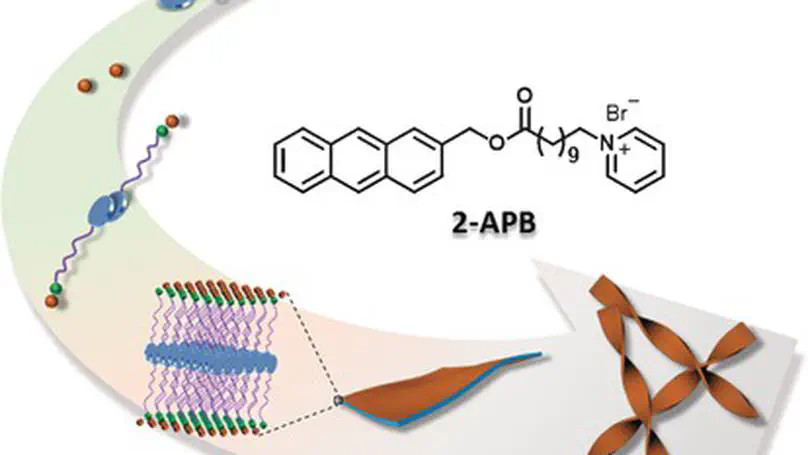
How to create novel desired structures by rational design of building blocks represents a significant challenge in materials science. Here we report a conceptually new design principle for creating supracolloidal fullerene-like cages through the self-assembly of soft patchy particles interacting via directional nonbonded interactions by mimicking non-planar sp2 hybridized carbon atoms in C60. Our numerical investigations demonstrate that the rational design of patch configuration, size, and interaction can drive soft three-patch particles to reversibly self-assemble into a vast collection of supracolloidal fullerene-like cages. We further elucidate the formation mechanisms of supracolloidal fullerene-like cages by analyzing the structural characteristics and the formation process. Our results provide conceptual and practical guidance towards the experimental realization of supracolloidal fullerene-like cages, as well as a new perspective on understanding the fullerene formation mechanisms.
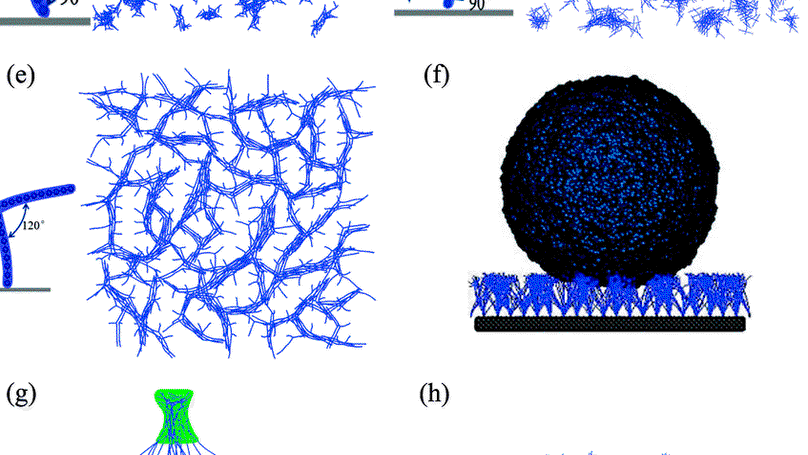
We propose a kinetic chain growth algorithm for coarse-grained (CG) simulations in this work. By defining the reaction probability, it delivers a description of consecutive polymerization process. This algorithm is validated by modeling the process of individual styrene monomers polymerizing into polystyrene chains, which is proved to correctly reproduce the properties of polymers in experiments. By bridging the relationship between the generic chain growth process in CG simulations and the chemical details, the impediment to reaction can be reflected. Regarding to the kinetics, it models a polymerization process with an Arrhenius-type reaction rate coefficient. Moreover, this algorithm can model both the gradual and jump processes of the bond formation, thus it readily encompasses several kinds of previous CG models of chain growth. With conducting smooth simulations, this algorithm can be potentially applied to describe the variable macroscopic features of polymers with the process of polymerization. The algorithm details and techniques are introduced in this article. © 2016 Wiley Periodicals, Inc.
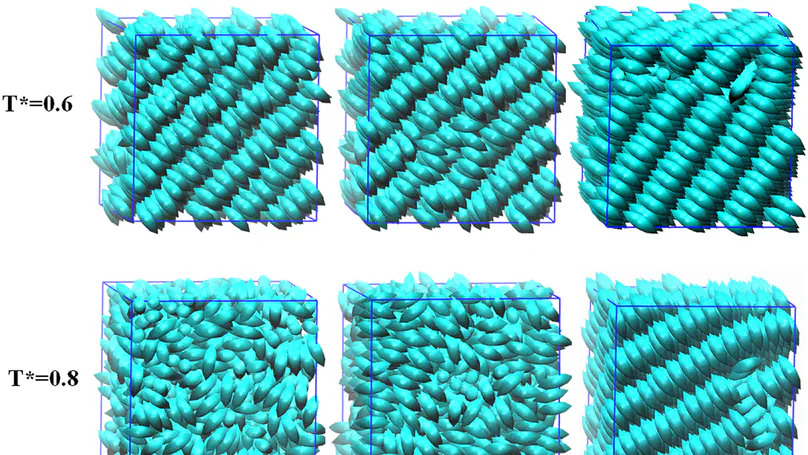
We present a computer simulation study on the wettability of a hairy surface with different topological structures such as single hairs, hair bundles and network structure. Superficially, for end-tethered rigid hairs or flexible hairs, the nonwettability of the substrate should be analyzed in completely different ways. For rigid hairs, the contact angle is dominantly dependent on the top layer density of hairs. A larger top layer density leads to a larger interaction between droplet and surface, as well as a lower contact angle. For flexible hairs, the nonwettability is determined by the typical properties of hairs right below the droplet, e.g., the chemistry of the surface, the topography and strength of the hair bundle/network or nonwetted area below the projection of the droplet. Nevertheless, it is also possible to generalize these aspects into a uniform procedure, which implies an intrinsic consistent mechanism of the dewetting behavior for droplets on such hairy surfaces. Counterintuitively, we also suggest that the surface which can strongly resist the transition to the Wenzel state does not necessarily lead to a large contact angle, especially in a system where the droplet is treated as liquid bulk. This study helps to build up guidelines for the design of nonwetting surface materials.
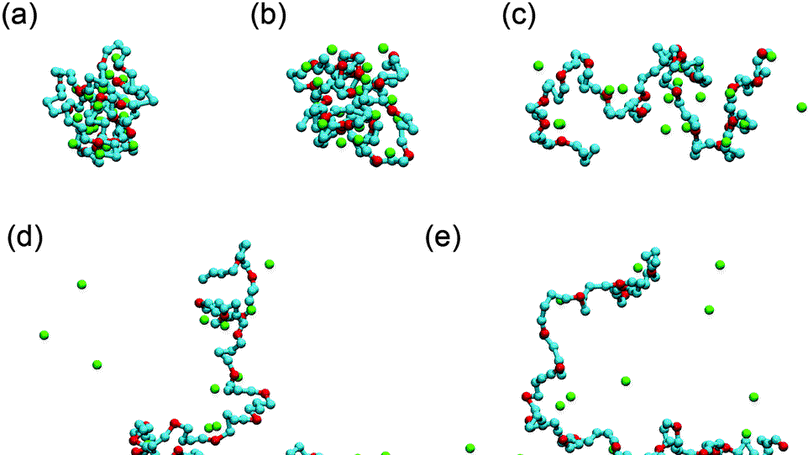
Gay-Berne (GB) potential is regarded as an accurate model in the simulation of anisotropic particles, especially for liquid crystal (LC) mesogens. However, its computational complexity leads to an extremely time-consuming process for large systems. Here, we developed a GPU-accelerated molecular dynamics (MD) simulation with coarse-grained GB potential implemented in GALAMOST package to investigate the LC phase transitions for mesogens in small molecules, main-chain or side-chain polymers. For identical mesogens in three different molecules, on cooling from fully isotropic melts, the small molecules form a singledomain smectic-B phase, while the main-chain LC polymers prefer a single-domain nematic phase as a result of connective restraints in neighboring mesogens. The phase transition of side-chain LC polymers undergoes a two-step process:nucleation of nematic islands and formation of multi-domain nematic texture. The particular behavior originates in the fact that the rotational orientation of the mesogenes is hindered by the polymer backbones. Both the global distribution and the local orientation of mesogens are critical for the phase transition of anisotropic particles. Furthermore, compared with the MD simulation in LAMMPS, our GPU-accelerated code is about 4 times faster than the GPU version of LAMMPS and at least 200 times faster than the CPU version of LAMMPS. This study clearly shows that GPU-accelerated MD simulation with GB potential in GALAMOST can efficiently handle systems with anisotropic particles and interactions, and accurately explore phase differences originated from molecular structures.
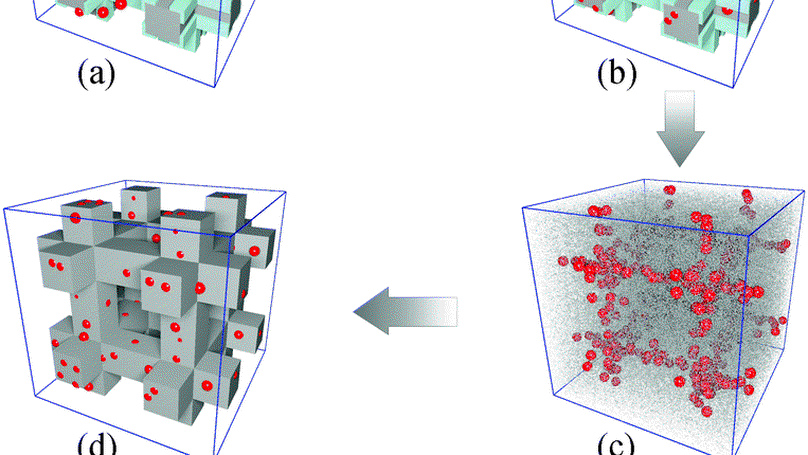
We propose a facile inverse design strategy to generate three-dimensional (3D) nanopatterns by using either block copolymers or a binary homopolymer blend via dissipative particle dynamics simulations. We find that the composition window of block copolymers to form a specific 3D morphology can be expanded when the self-assembly of block copolymers is directed by templates. We also find that a binary homopolymer blend can serve as a better candidate in the inverse templating design, since they have similar performances on recovering the target pattern, with much lower cost. This strategy is proved efficient for fabricating templates with desired topographical configuration, and the inverse design idea sheds lights on better control and design of materials with complex nanopatterns.
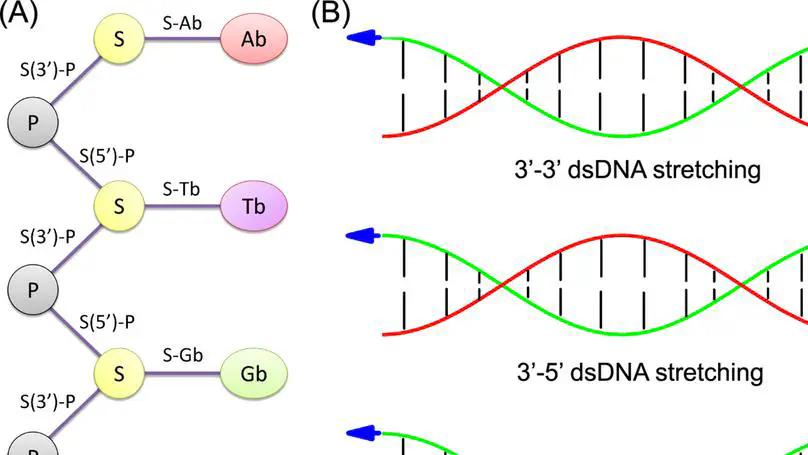
Although multiple overstretched DNA states were identified in experiments, the mechanism of the emergence of distinct states is still unclear. Molecular dynamics simulation is an ideal tool to clarify the mechanism, but the force loading rates in stretching achieved by conventional all-atom DNA models are much faster, which essentially affect overstretching states. We employed a modified coarse-grained DNA model with an unprecedented low loading rate in simulations to study the overstretching transitions of end-opened double-stranded DNA. We observed two-strand peeling off for DNA with low stability and the S-DNA with high stability under tension. By introducing a melting-forbidden model which prevents base-pair breaking, we still observed the overstretching transition induced by the formation of S-DNA due to the change of dihedral angle. Hence, we confirmed that the competition between the two strain-softening manners, i.e., base-pair breaking and dihedral angle variation, results in the emergence of distinct overstretched DNA states.
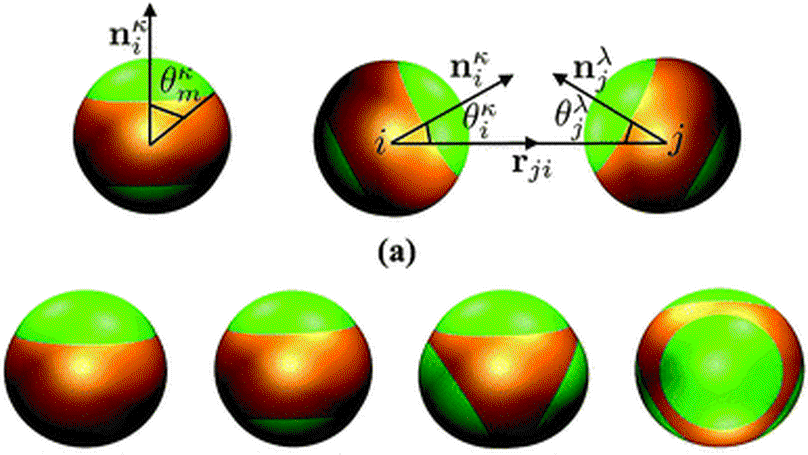
We propose a simple and general mesoscale soft patchy particle model, which can felicitously describe the deformable and surface-anisotropic characteristics of soft patchy particles. This model can be used in dynamics simulations to investigate the aggregation behavior and mechanism of various types of soft patchy particles with tunable number, size, direction, and geometrical arrangement of the patches. To improve the computational efficiency of this mesoscale model in dynamics simulations, we give the simulation algorithm that fits the compute unified device architecture (CUDA) framework of NVIDIA graphics processing units (GPUs). The validation of the model and the performance of the simulations using GPUs are demonstrated by simulating several benchmark systems of soft patchy particles with 1 to 4 patches in a regular geometrical arrangement. Because of its simplicity and computational efficiency, the soft patchy particle model will provide a powerful tool to investigate the aggregation behavior of soft patchy particles, such as patchy micelles, patchy microgels, and patchy dendrimers, over larger spatial and temporal scales.
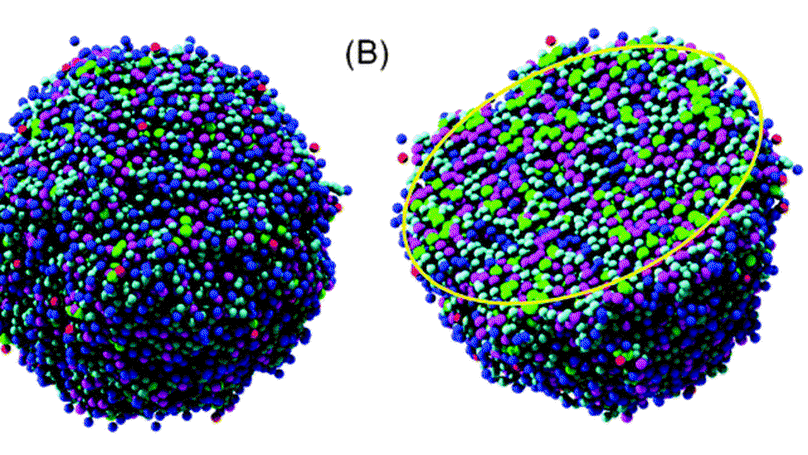
Stable and monodisperse phenylboronic acid-functionalized nanoparticles (PBA-NPs) were fabricated using the 3-((acrylamido)methyl)phenylboronic acid homopolymer (PBAH) via the solvent displacement technique. The effect of operating parameters, including stirring time, initial polymer concentration and the proportion of methanol, on the self-assembly process was systematically investigated. The diameters of PBA-NPs were increased by increasing the initial PBAH concentration and the proportion of methanol. Likewise, there was a linear dependence between the size of self-assembled nanoparticles and the polymer concentration. Moreover, the dissipative particle dynamics (DPD) simulation technique was used to investigate the mechanism of self-assembly behavior of the PBAH, which indicated that the interior of PBA-NPs was hydrophobic and compact, and boronic acid groups were displayed on both the exterior and interior of PBA-NPs. The resulting PBA-NPs could successfully encapsulate emodin through PBA–diol interaction and the encapsulation efficiency (EE%) and drug loading content (DLC%) of drug-loaded PBA-NPs were 78% and 2.1%, respectively. Owing to the acid-labile feature of the boronate linkage, a reduction in environmental pH from 7.4 to 5.0 could trigger the disassociation of the boronate ester bonds, which could accelerate the drug release from PBA–emodin-NPs. Besides, PBA–emodin-NPs showed a much higher cytotoxicity to HepG2 cells (cancer cells) than MC-3T3-E1 cells (normal cells). These results imply that PBA-NPs would be a promising scaffold for the delivery of polyphenolic drugs.
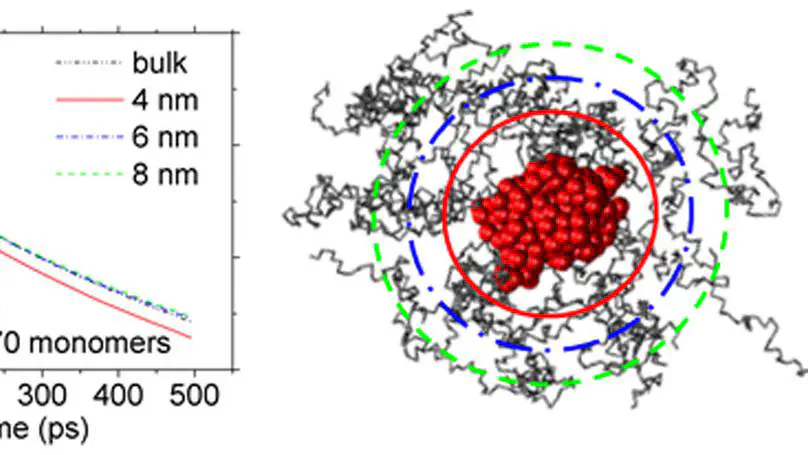
It is crucial to understand how much and how far the structure and dynamics properties of the polymer melt can be affected by incorporating nanoparticles (NPs) in the system. Here, we show that in an athermal all-polymer nanocomposites prepared from mixtures of linear polystyrene chains and cross-linked polystyrene NPs, the influence range of the NP on the melt polymer properties, namely interphase thickness, depends on the properties investigated. The local segment conformations can be affected in the range of an NP radius. However, if the interphase thickness is defined by the influence range of the NP on the radius of gyration (Rg) of the melt chain, it can be 1.5Rg for short-chain melts where the chain has a Rg smaller than particle radius Ra. For intermediate chain length polymer melts (Rg > Ra), the influence range of the NP does not change with the chain length. With the chain length further increasing, melt chains cannot feel the existence of the NP; the influence of the NP on the Rg tensors of the melt chain can be negligible. For the dynamics properties, the effects caused by the NP can be differently at different length and time scales. The mobility of the monomers can be slowed down in the vicinity of the NP, but they can have a faster mobility in the tangential direction than in the radial direction of the NP surface. More importantly, the segmental relaxation of the melt chains can be accelerated by the fast thermal deformations of the loose NP surface structures. We demonstrate that the softness of the NP and its deformability are crucial to the dynamics properties of the nanocomposites.
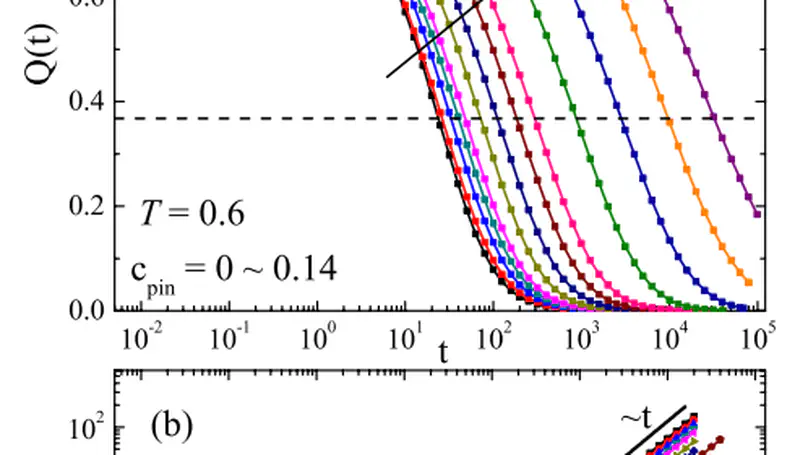
We investigate numerically the relaxation and diffusion dynamics in three-dimensional Kob-Andersen glass-forming liquids in which part of the particles are randomly chosen and pinned permanently. We find that both the relaxation dynamics and diffusion dynamics slow down as increasing the pinning concentration (cpin) at fixed temperatures that we study. For higher temperature and lower cpin, the α relaxation time τ and the diffusion coefficient D have the scaling relationship D ∼ τ−1. However, this coupling behavior breaks down if cpin is further increased, and the scaling relationship is replaced by D ∼ τ−ν with ν < 1. At temperatures around the onset temperature of the bulk system, a transition from ν ∼ 0.75 to ν ∼ 0.61 with increasing cpin is found. However, at lower temperatures, ν ∼ 0.67 holds in the whole studied cpin range. By fitting the relaxation time as a function of cpin with Vogel-Fulcher-Tamman equation, we find that the change of scaling exponent ν is accompanied with the change of fragility parameter K at higher temperatures. However, at lower temperatures, pinning particles have little effect on the system’s qualitative properties. Moreover, we investigate three measures of heterogeneity of dynamics and find that the relaxation and the diffusion motion of particles show different responses to the pinned particles, which may lead to the slower relaxation than diffusion and the decoupling of relaxation and diffusion. The string-like motion is found to saturate at the mode-coupling theory (MCT) crossover point, which indicates that other relaxation modes may exist below the MCT transition point.
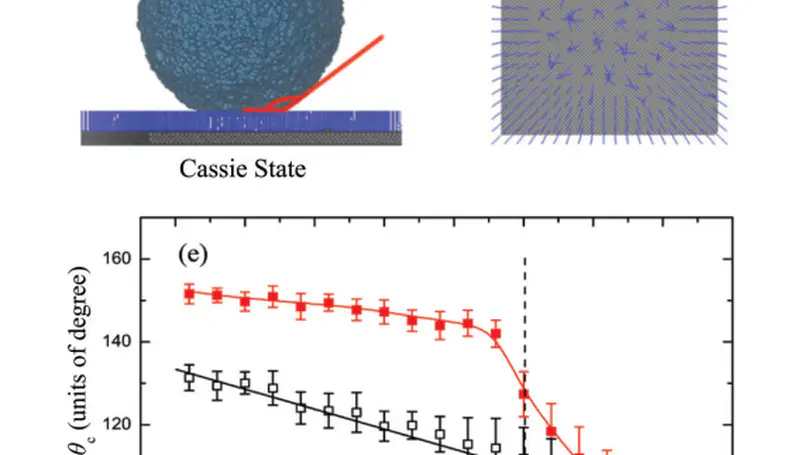
We present a molecular dynamics simulation study on the controlling factors that influence the wettability of a hairy surface. By adopting the hairs with appropriate grafting density, hair length, and hair rigidity, the hairy surface shows good performance on droplet repellency. When the droplet sits on the hairy surface, the flexible hairs can spontaneously bundle with the appropriate amount of neighboring hairs to enhance the surface hydrophobicity, thus providing a new possibility to control the surface wettability. The hairy surface with tunable grafting density and hair rigidity, bridges the gap between surfaces with soft polymer brushes and surfaces that are completely hard but porous.
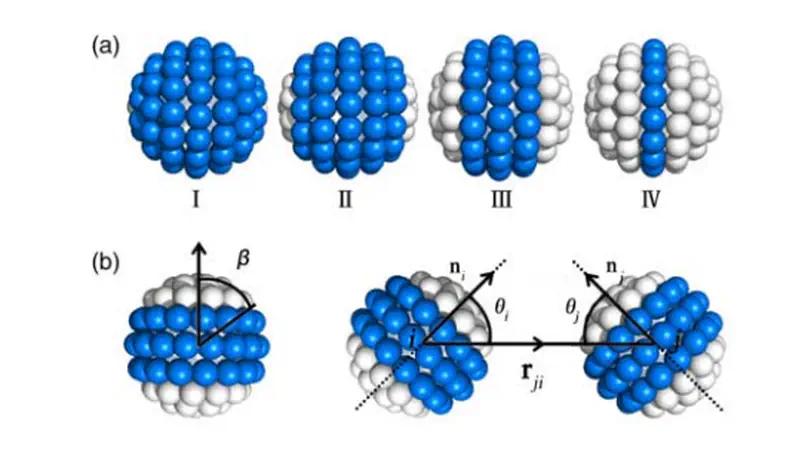
We study the self-assembly behaviour of two-patch particles with D1h symmetry by using Brownian dynamics simulations. The self-assembly process of two-patch particles with diverse patch coverage in two selective solvent conditions is investigated. The patchy particles in a solvent that is bad for patches but good for matrix form linear thread-like structures with low patch coverage, whereas they form 3D network structures with relatively high patch coverage on surface. For patchy particles in a solvent which is good for patches but bad for body, monolayer structures are obtained at high patch coverage, and some cluster structures emerge when surface patch coverage is low.
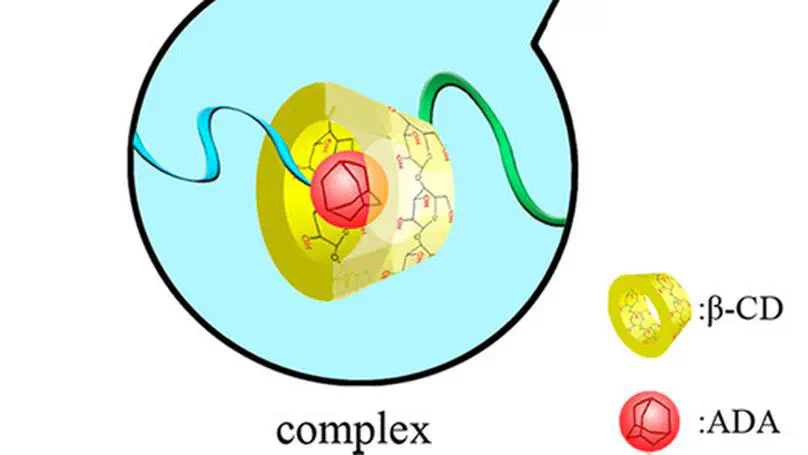
Coarse-grained models for β-cyclodextrin (β-CD) and adamantane (ADA) are proposed by fitting to their experimental host−guest complex equilibrium constant in solution. By using Brownian dynamics simulations, we suggest a simple supramolecular route for synthesizing multiblock copolymers (MBCs) via forming complexes between β-CD and ADA groups terminated at the chain ends of diblock copolymers (DBCs). The chain length distribution of the resulted MBC is found to follow the statistics of Flory formula for typical linear condensation polymerization process. Therefore, the proposed supramolecular route can be viewed as a novel linear condensation polymerization process with DBCs as reactive monomers. Due to the complex formations between head and tail (β-CD and ADA), ringshaped MBCs are also observed in our simulations, which will reduce the yield of the MBC. Because we are using a generic model for DBC, the proposed route of building MBCs are applicable for all synthetic DBCs with two ends terminated by either β-CD or ADA groups.
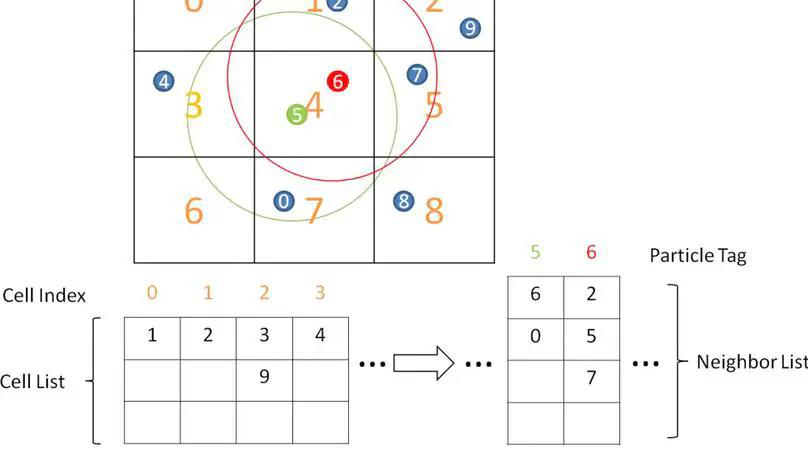
GALAMOST [graphics processing unit (GPU)-accelerated large-scale molecular simulation toolkit] is a molecular simulation package designed to utilize the computational power of GPUs. Besides the common features of molecular dynamics (MD) packages, it is developed specially for the studies of self-assembly, phase transition, and other properties of polymeric systems at mesoscopic scale by using some lately developed simulation techniques. To accelerate the simulations, GALAMOST contains a hybrid particle-field MD technique where particle–particle interactions are replaced by interactions of particles with density fields. Moreover, the numerical potential obtained by bottom-up coarse-graining methods can be implemented in simulations with GALAMOST. By combining these force fields and particle-density coupling method in GALAMOST, the simulations for polymers can be performed with very large system sizes over long simulation time. In addition, GALAMOST encompasses two specific models, that is, a soft anisotropic particle model and a chain-growth polymerization model, by which the hierarchical self-assembly of soft anisotropic particles and the problems related to polymerization can be studied, respectively. The optimized algorithms implemented on the GPU, package characteristics, and benchmarks of GALAMOST are reported in detail. © 2013 Wiley Periodicals, Inc.
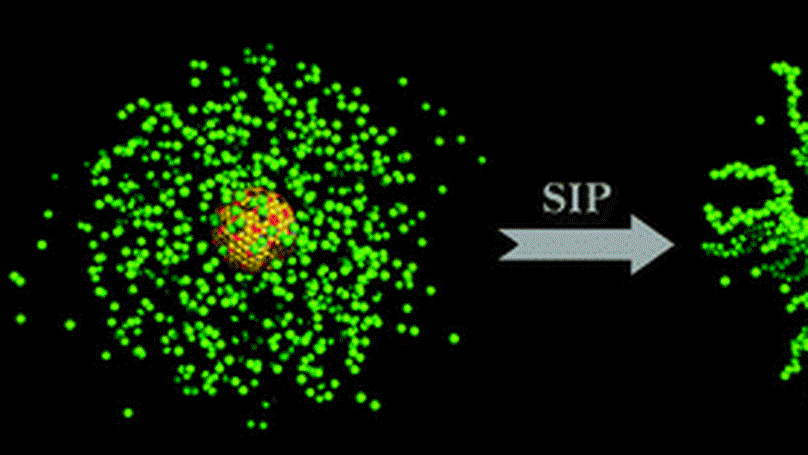
The polymer-grafted nanoparticles prepared by the surface-initiated polymerization induced from the spherical surface is studied by coarse-grained molecular dynamics simulations combined with the stochastic reaction model. The coupling effect of the initiator density and the grafting surface curvature is mainly investigated. The confinement degree greatly changes with the grafting surface curvature, thus the initiation efficiency, the grafted chain polydispersity, as well as the chain mass distribution show great dependence on the surface curvature. The results reveal that preparing the nanoparticle with desired size (i.e., grafting surface curvature) is crucial for control of the grafted chain polydispersity and even its dispersion in the polymer matrix. Our studies shed light on better design of grafted nanoparticles and better control of dispersion in polymer matrices for improving the performance of polymer nanocomposite materials.
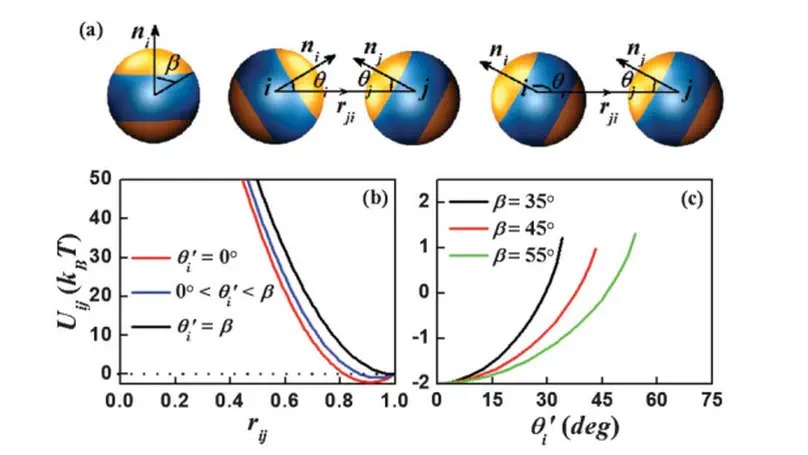
We present a mesoscale simulation model that is suitable for describing the deformable and non-centrosymmetric characteristics of soft triblock Janus particles. The model parameters are readily mapped onto experimental systems under different ambient conditions. We examine the influence of Janus balance and the flexibility of Janus particle aggregates on the packing structures. Some ordered structures, such as the hexagonal columnar structure and the body-centered tetragonal structure, are observed in our simulations. Our study demonstrates that the Janus balance and the flexibility of Janus particle aggregates can be tuned to obtain various ordered packing structures. The soft Janus particles with soft and deformable characteristics may bring new excitement to materials science.
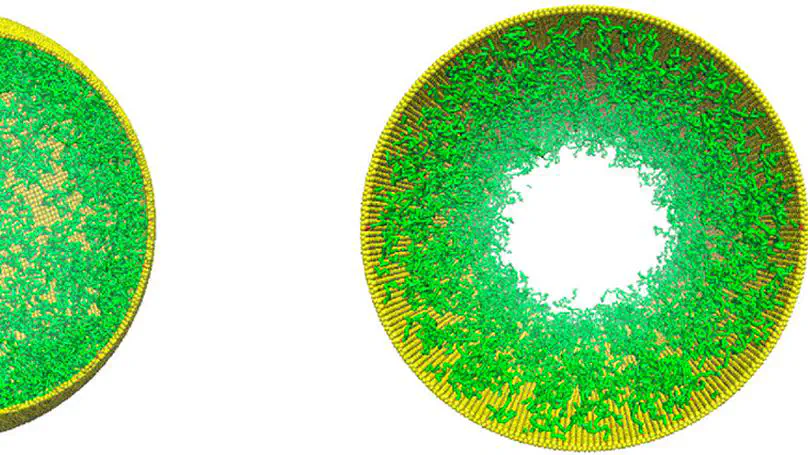
We study living polymerization initiated from concave surfaces. We clarify that, depending on different criteria for ceasing the reaction, different relationships between grafted chain polydispersity index and the grafting surface curvature can be categorized. The average molecular weight of the grafted chains monotonically decreases as the grafting surface curvature increases. These results shed light on better control and design of functional porous materials for use in bioimplanting or chemical sensors.
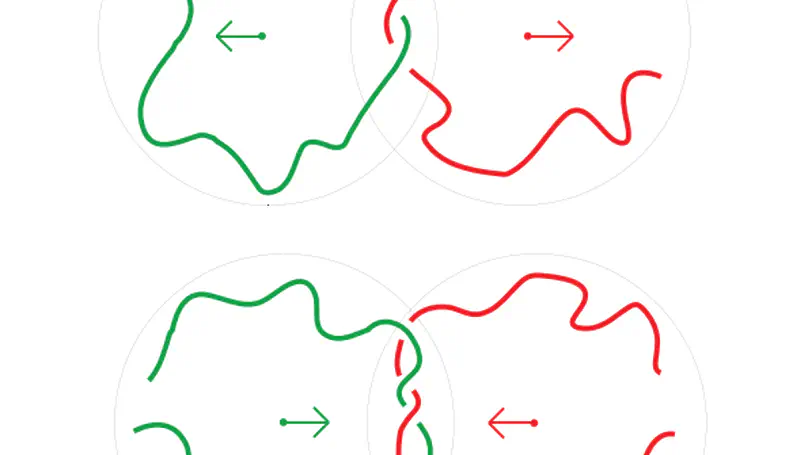
We introduce a highly coarse-grained model to simulate the entangled polymer melts. In this model, a polymer chain is taken as a single coarse-grained particle, and the creation and annihilation of entanglements are regarded as stochastic events in proper time intervals according to certain rules and possibilities. We build the relationship between the probability of appearance of an entanglement between any pair of neighboring chains at a given time interval and the rate of variation of entanglements which describes the concurrence of birth and death of entanglements. The probability of disappearance of entanglements is tuned to keep the total entanglement number around the target value. This useful model can reflect many characteristics of entanglements and macroscopic properties of polymer melts. As an illustration, we apply this model to simulate the polyethylene melt of C1000H2002 at 450 K and further validate this model by comparing to experimental data and other simulation results.
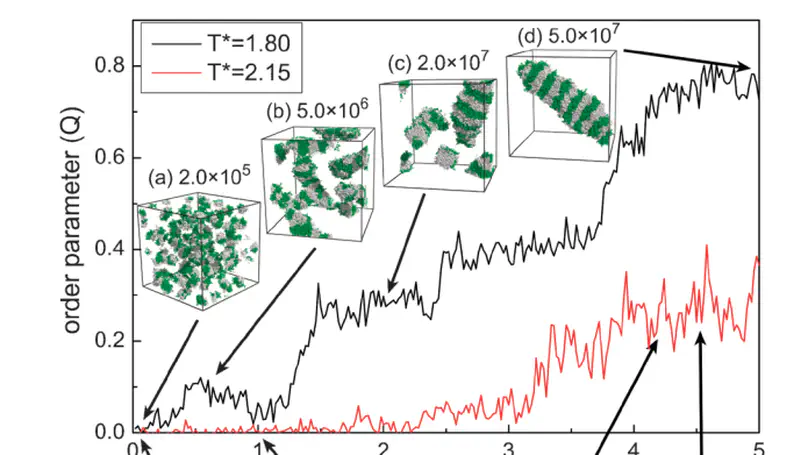
We study the self-assembly of symmetric star-like block copolymers (Ax)y(Bx)yC in dilute solution by using Brownian dynamics simulations. In the star-like block copolymer, incompatible A and B components are both solvophobic, and connected to the center bead C of the polymer. Therefore, this star-like block copolymer can be taken as a representative of soft and deformable Janus particles. In our Brownian dynamics simulations, these “soft Janus particles” are found to self-assemble into worm-like lamellar structures, loose aggregates and so on. By systematically varying solvent conditions and temperature, we build up the phase diagram to illustrate the effects of polymer structure and temperature on the aggregate structures. At lower temperatures, we can observe large worm-like lamellar aggregates. Upon increasing the temperature, some block copolymers detach from the aggregate; this phenomenon is especially sensitive for the polymers with less arms. The aggregate structure will be quite disordered when the temperature is high. The incompatibility between the two parts in the star-like block copolymer also affects the self-assembled structures. We find that the worm-like structure is longer and narrower as the incompatibility between the two parts is stronger.
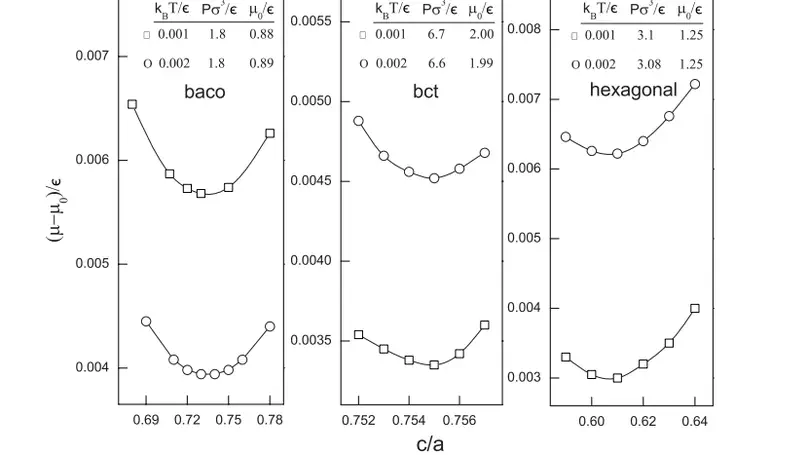
We construct the phase diagram of spherical particles interacted with harmonic repulsions, which are ultrasoft and bounded at fully overlapping. This simple potential form can be used for describing the thermodynamic properties and dynamic behavior of interpenetrable globular micelles, microgels, starlike polymer solutions, and so on. Using dissipative particle dynamics simulations combined with thermodynamic integration, we compute chemical potentials of fluid phase and a number of crystal structures. In addition to the face-centered cubic and body-centered cubic structures, we also find the tetragonal, hexagonal, orthorhombic, and diamond crystal structures stable for this system. In the phase diagram, we identify multiple re-entrant melting regions and polymorphic transitions between the crystals.
